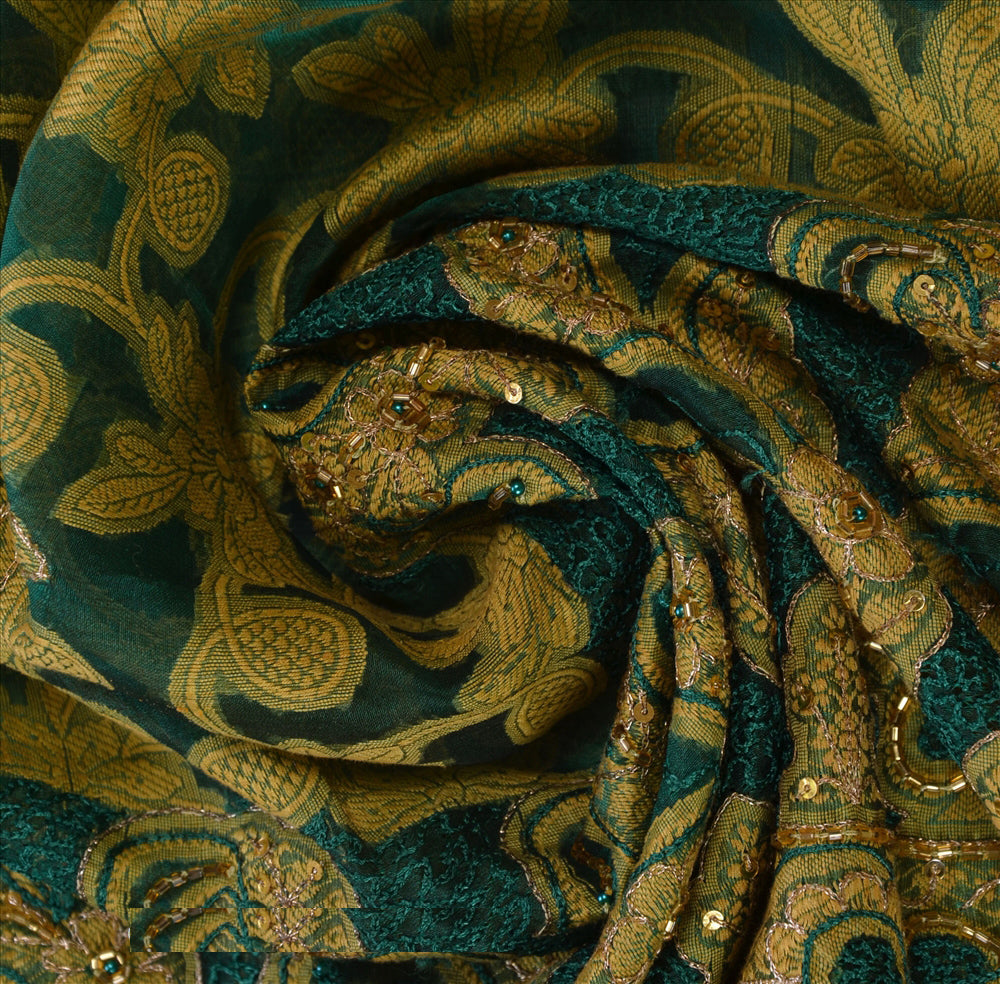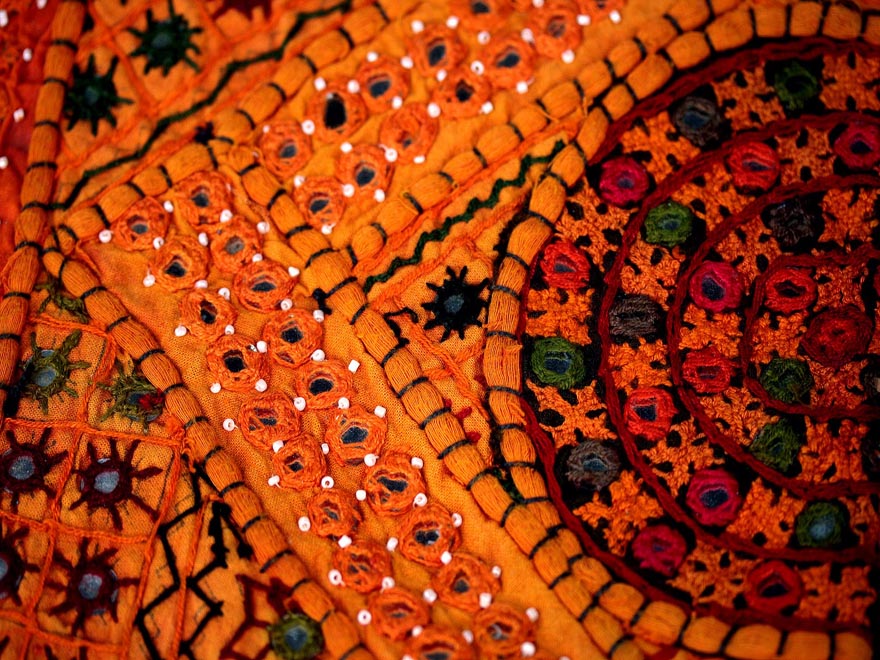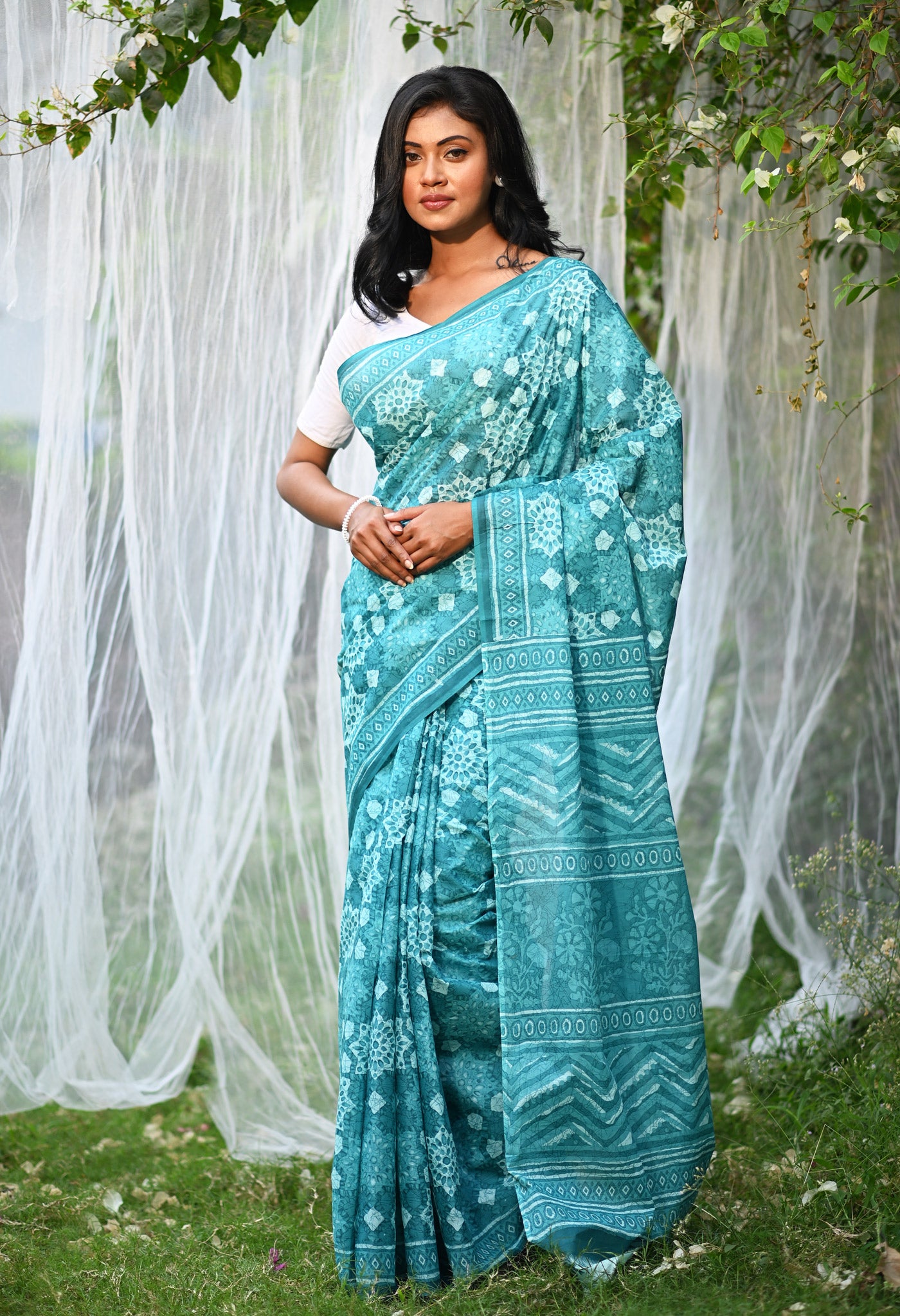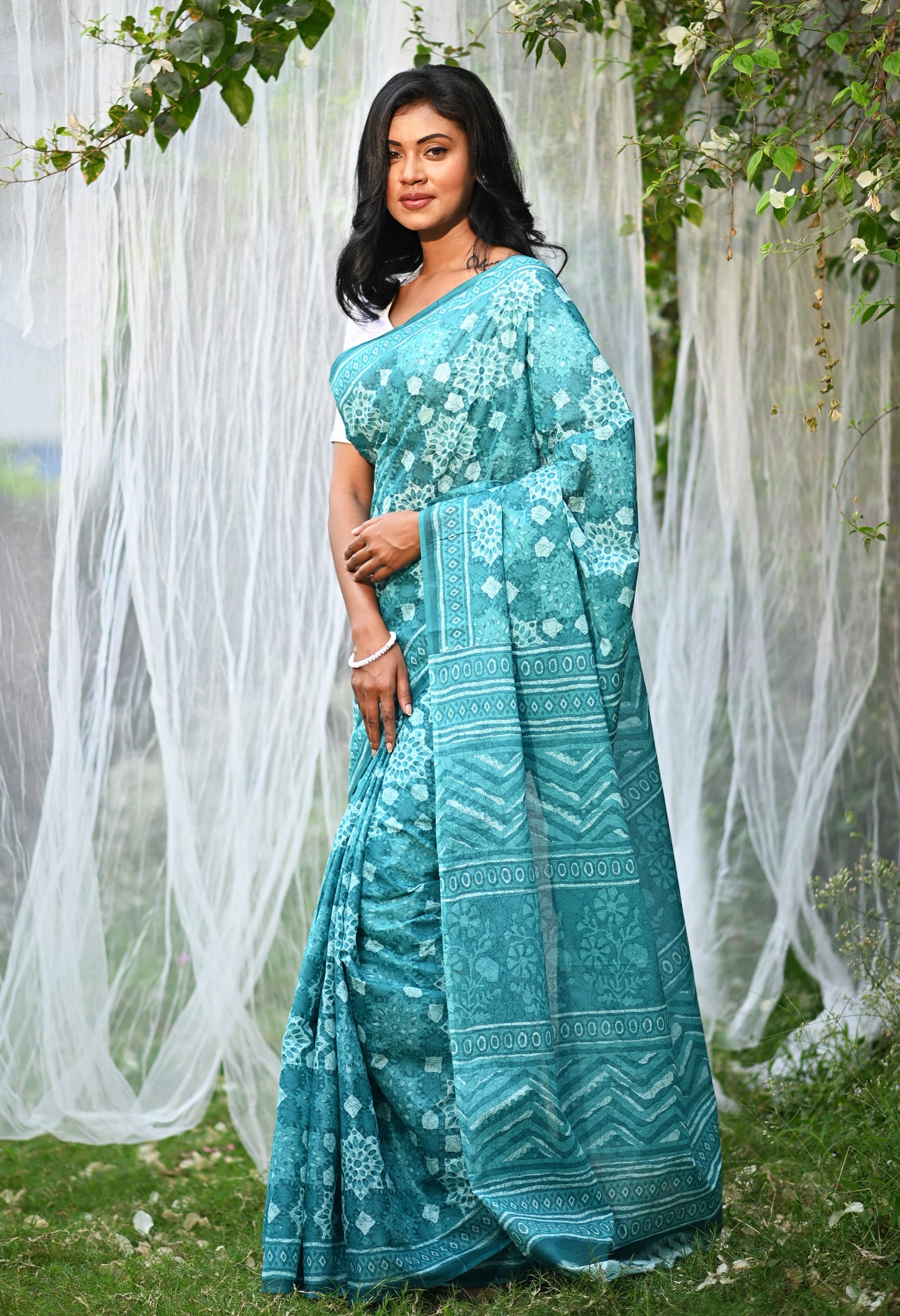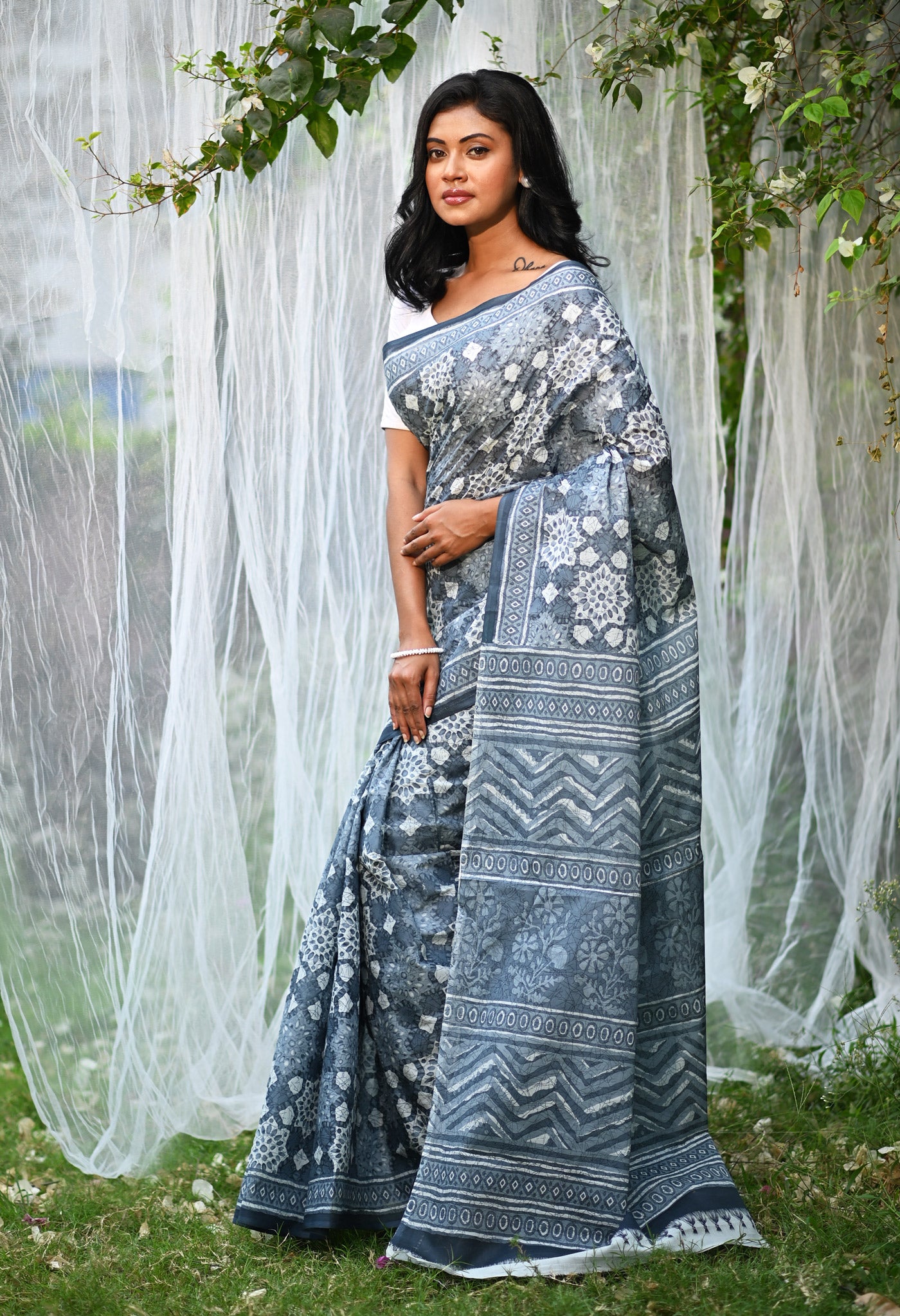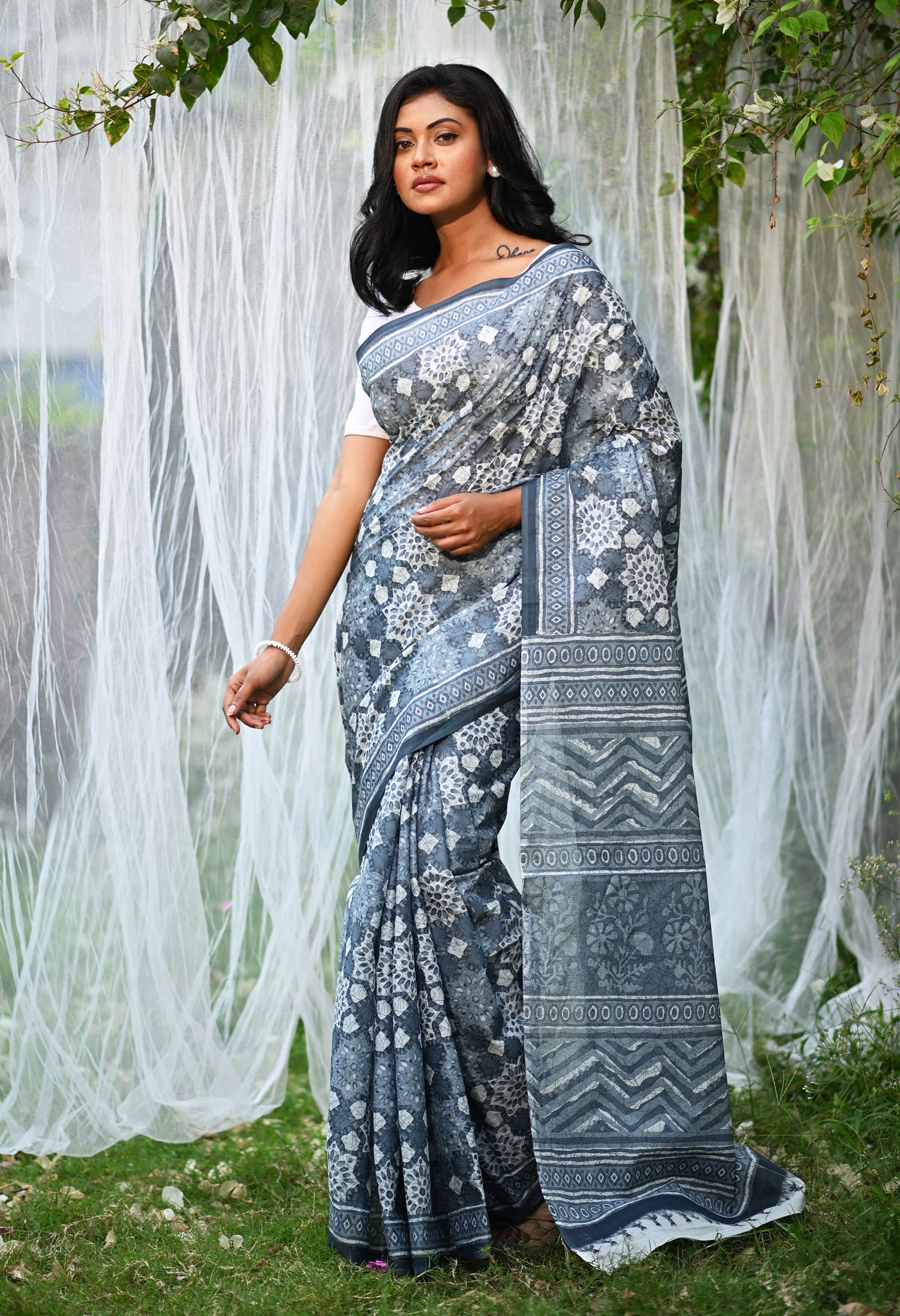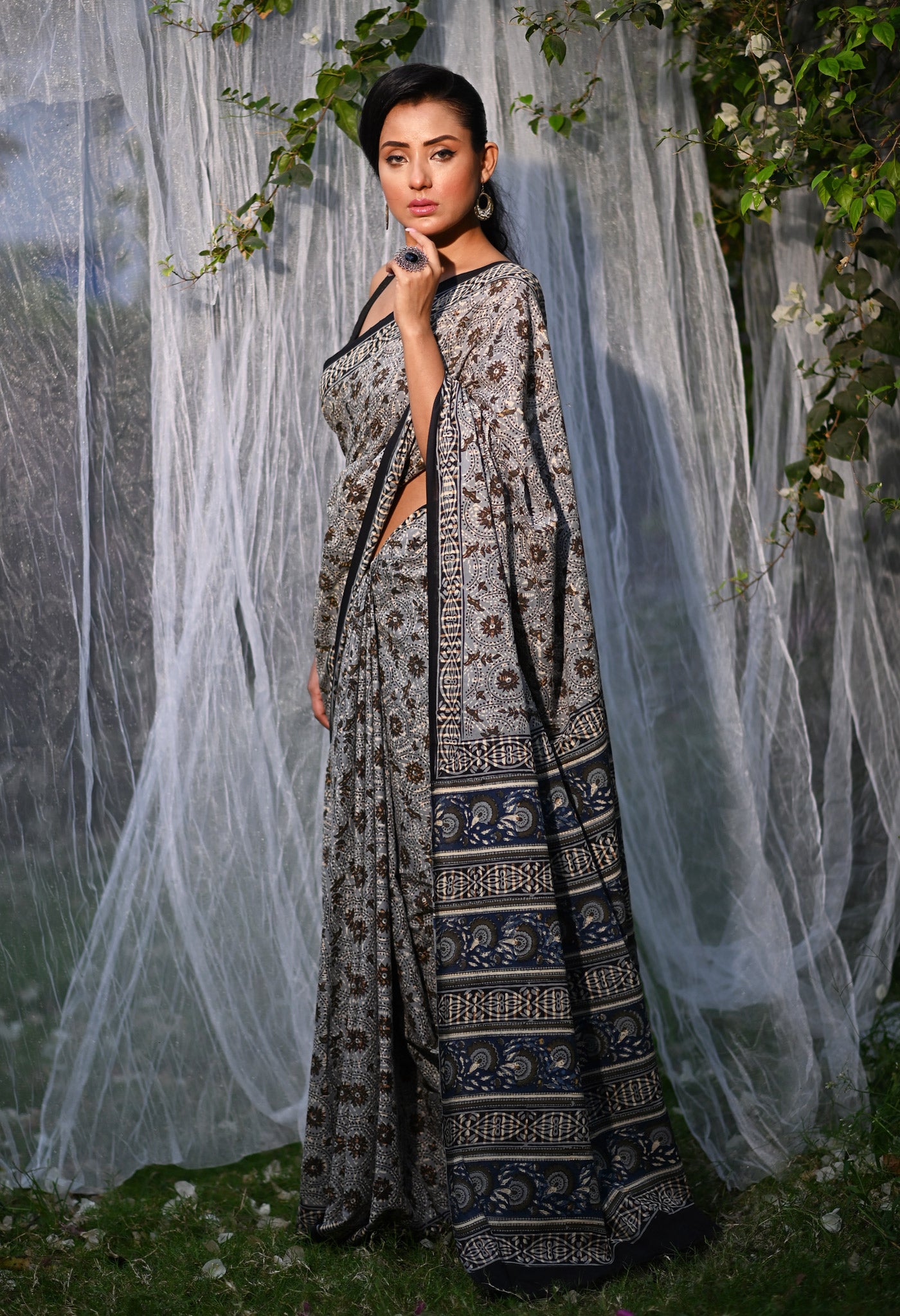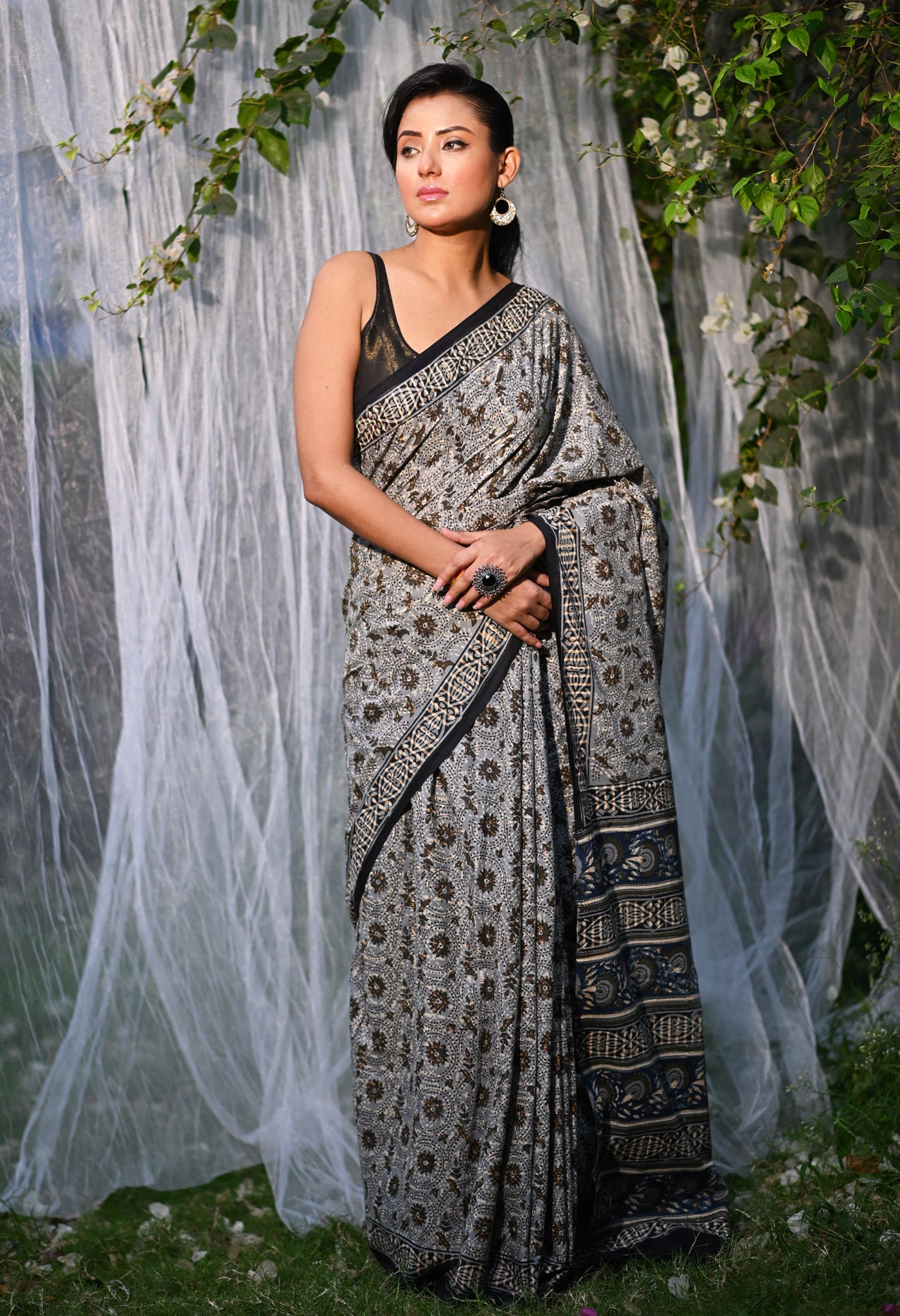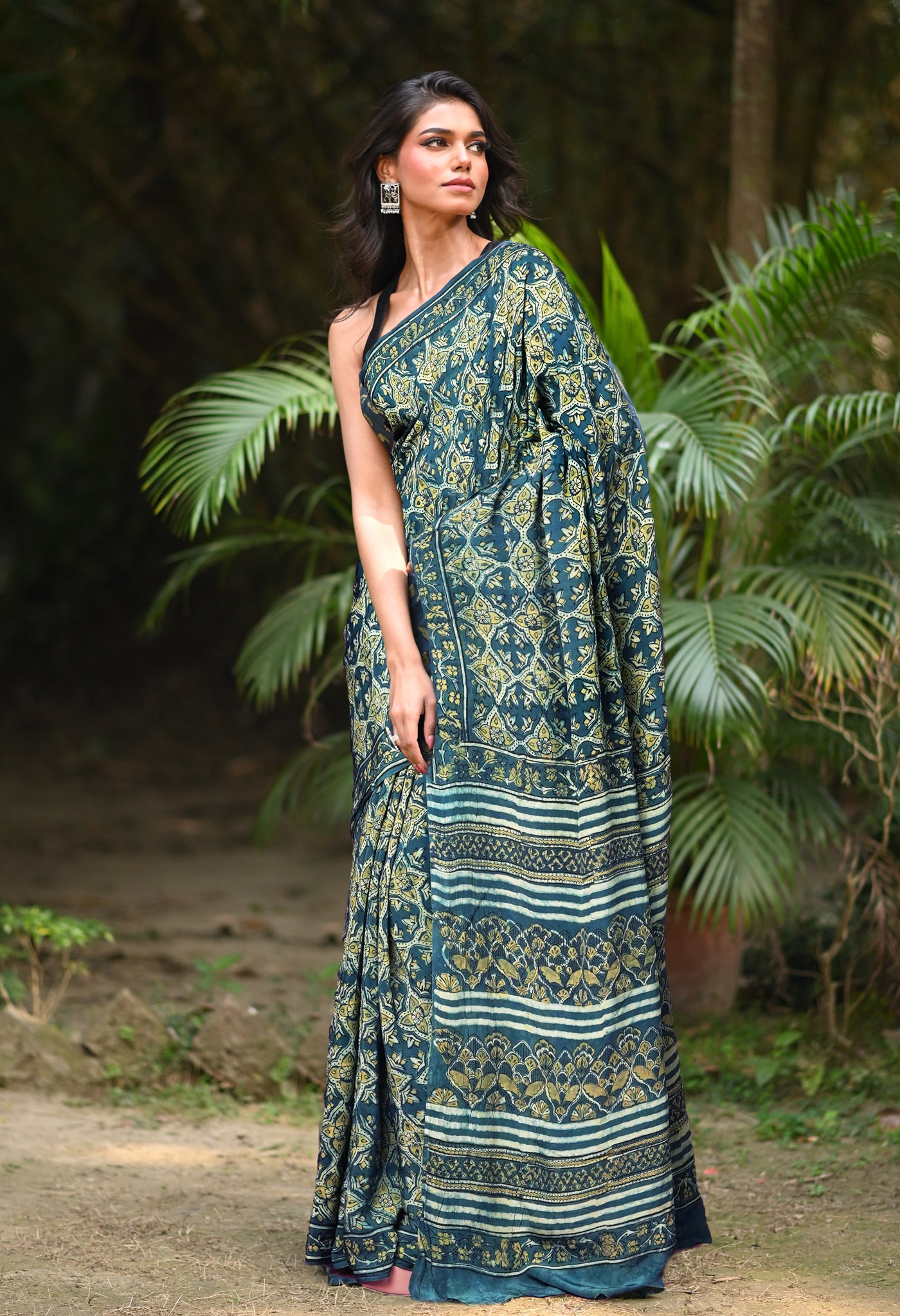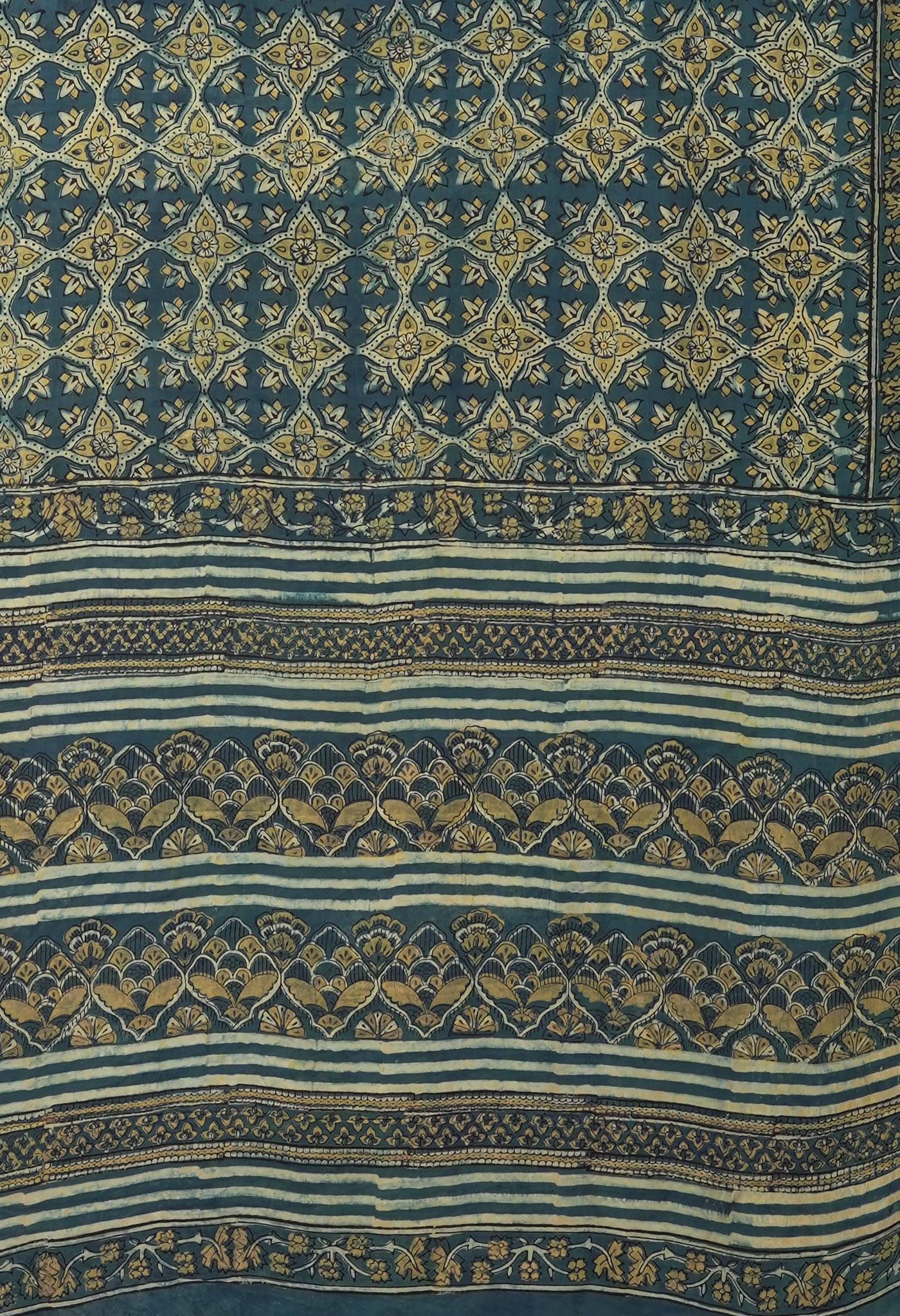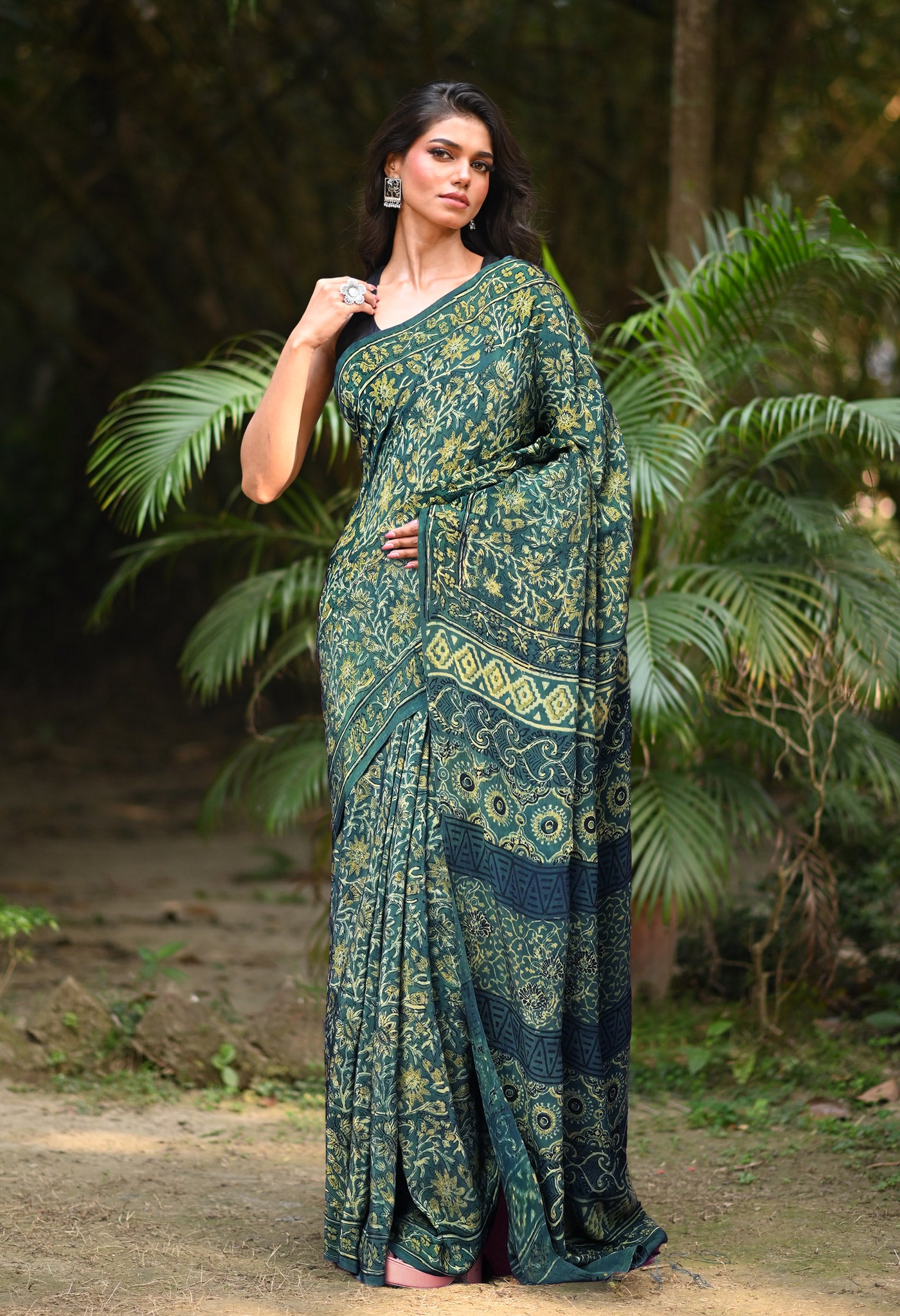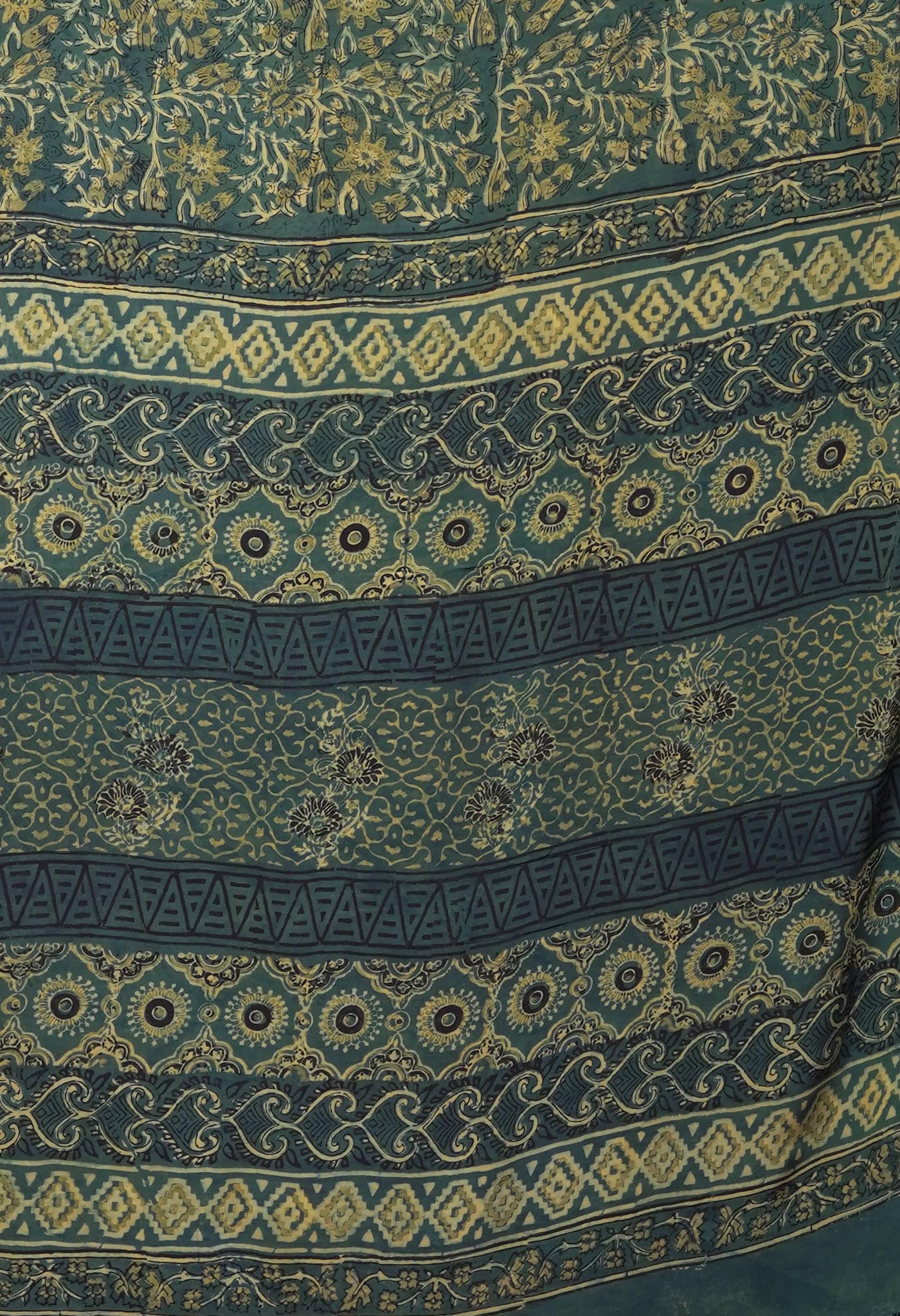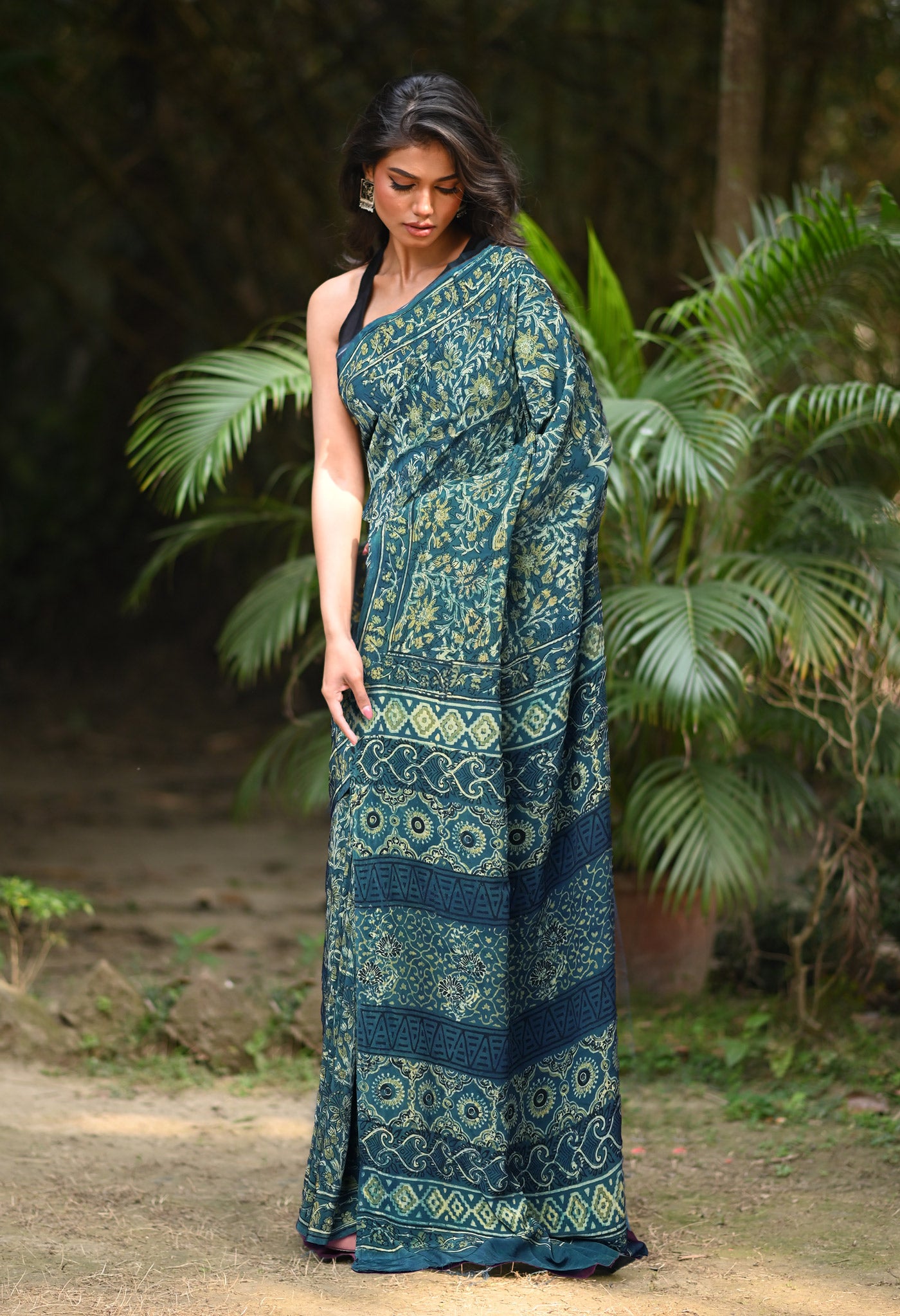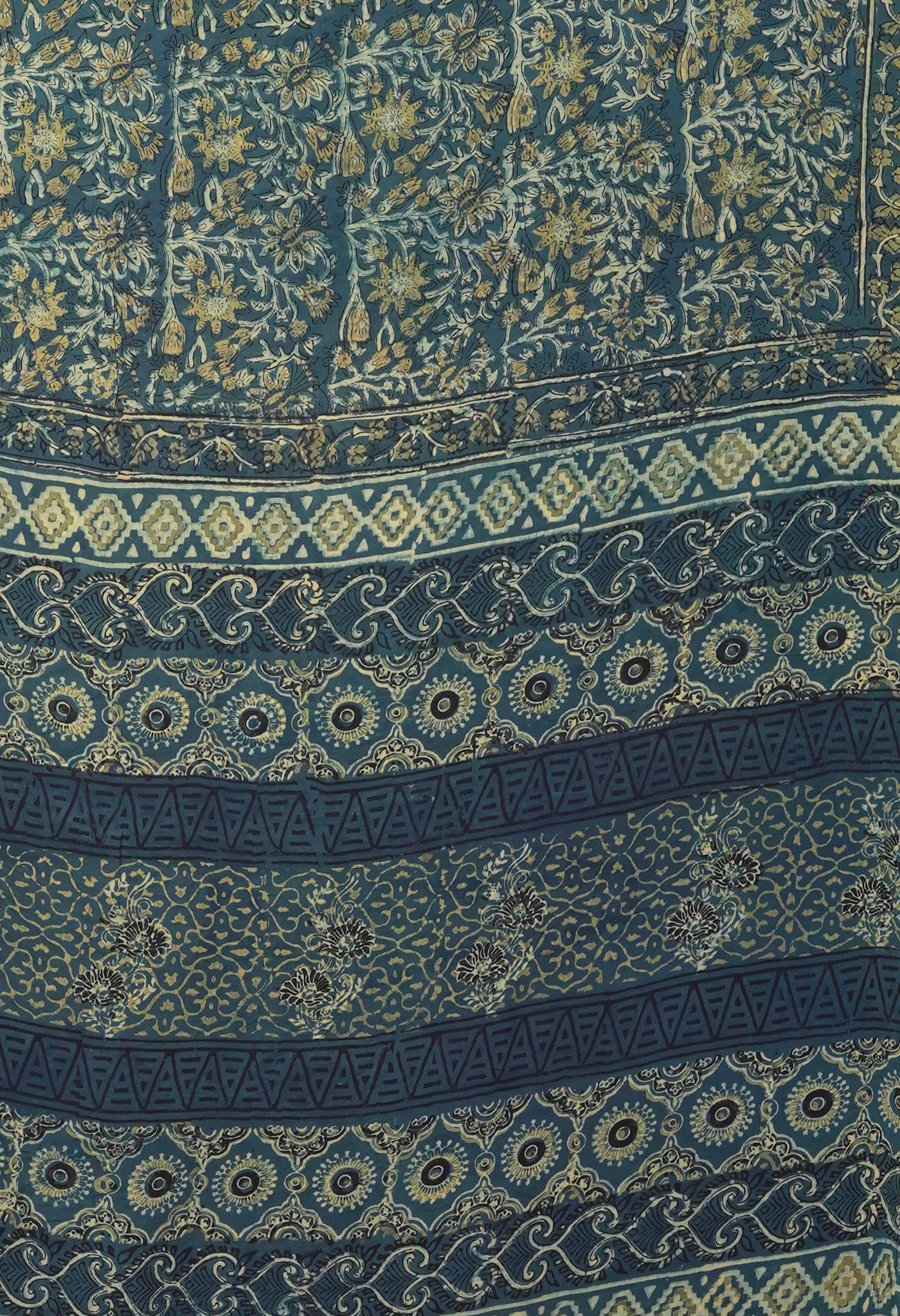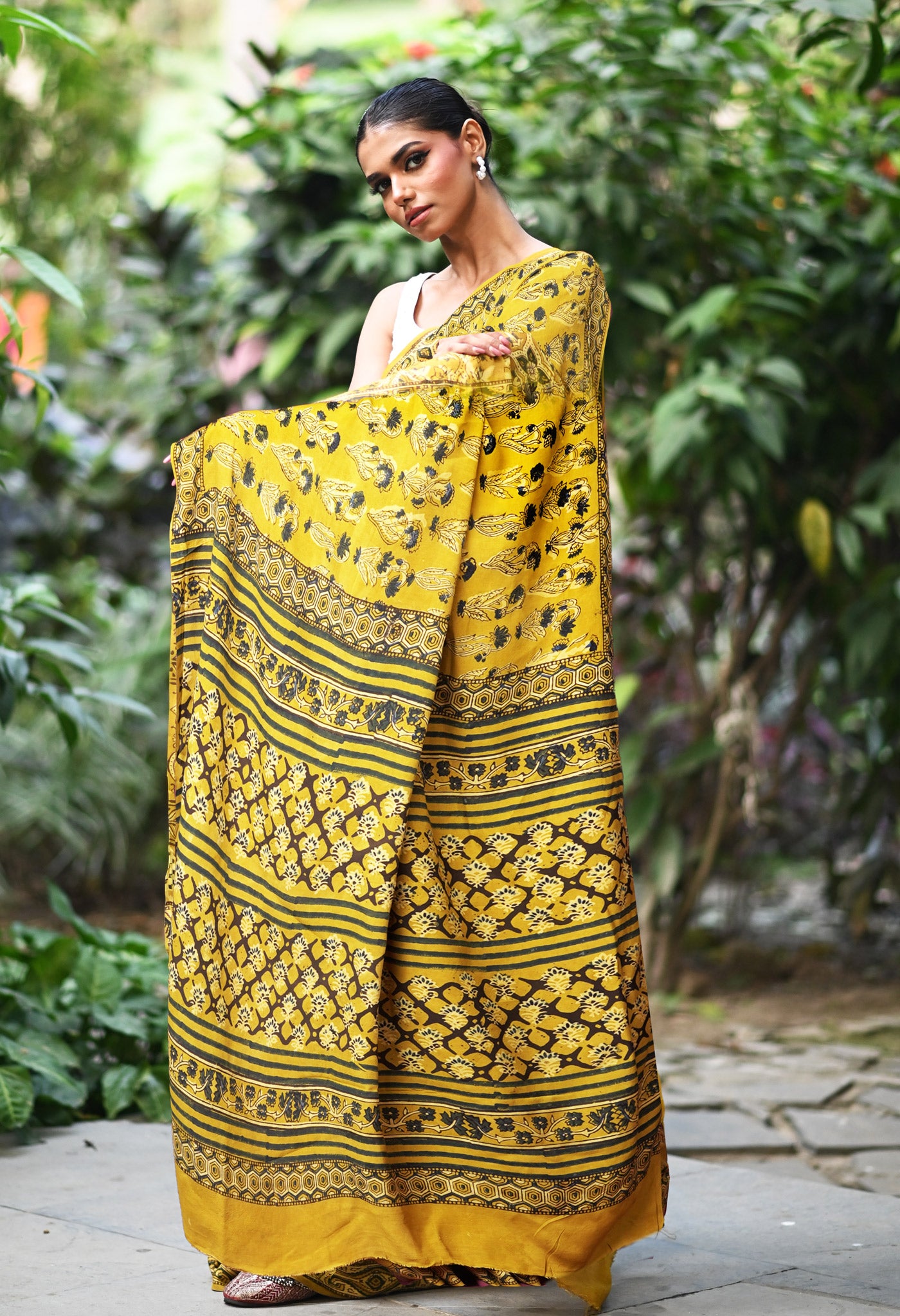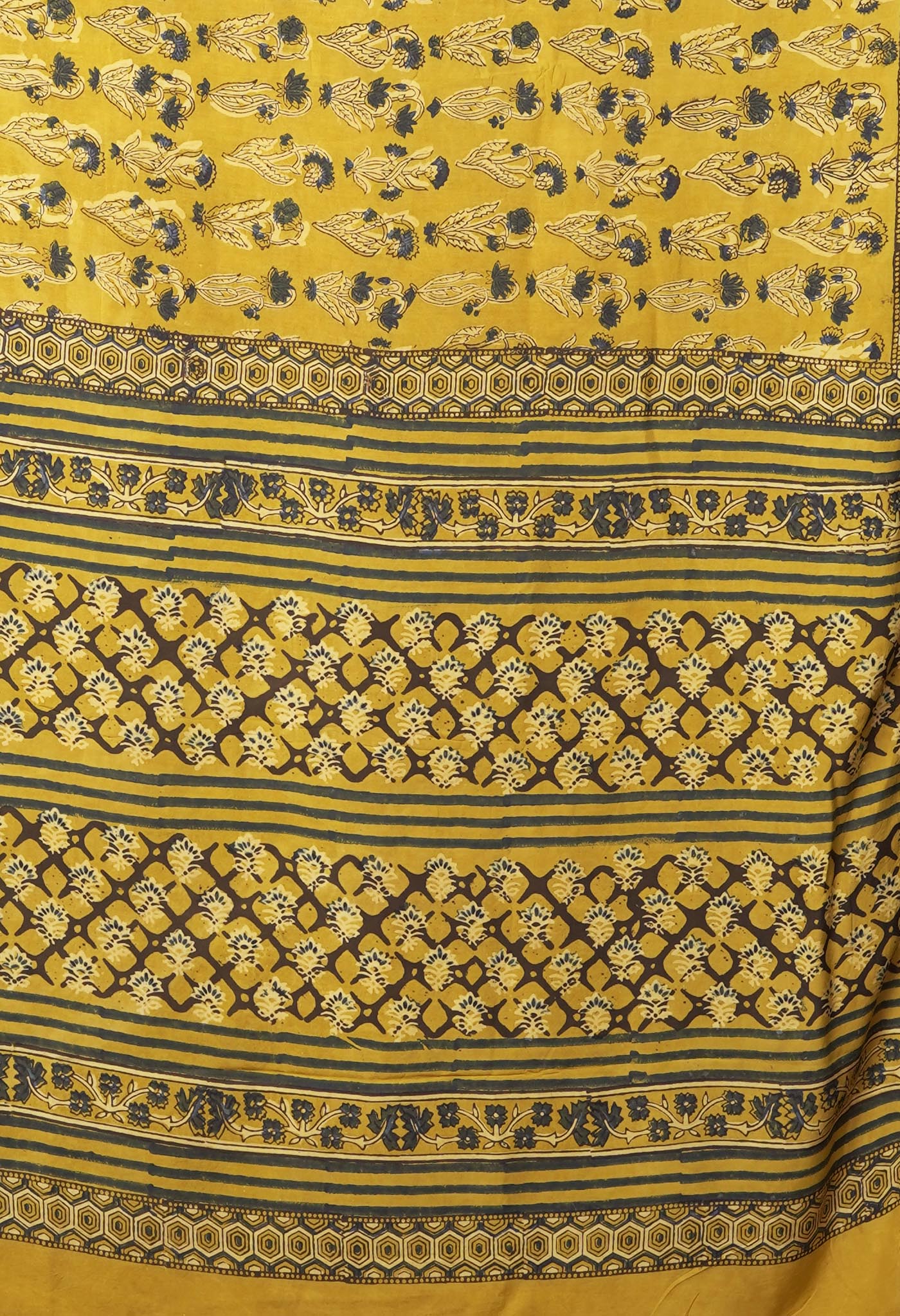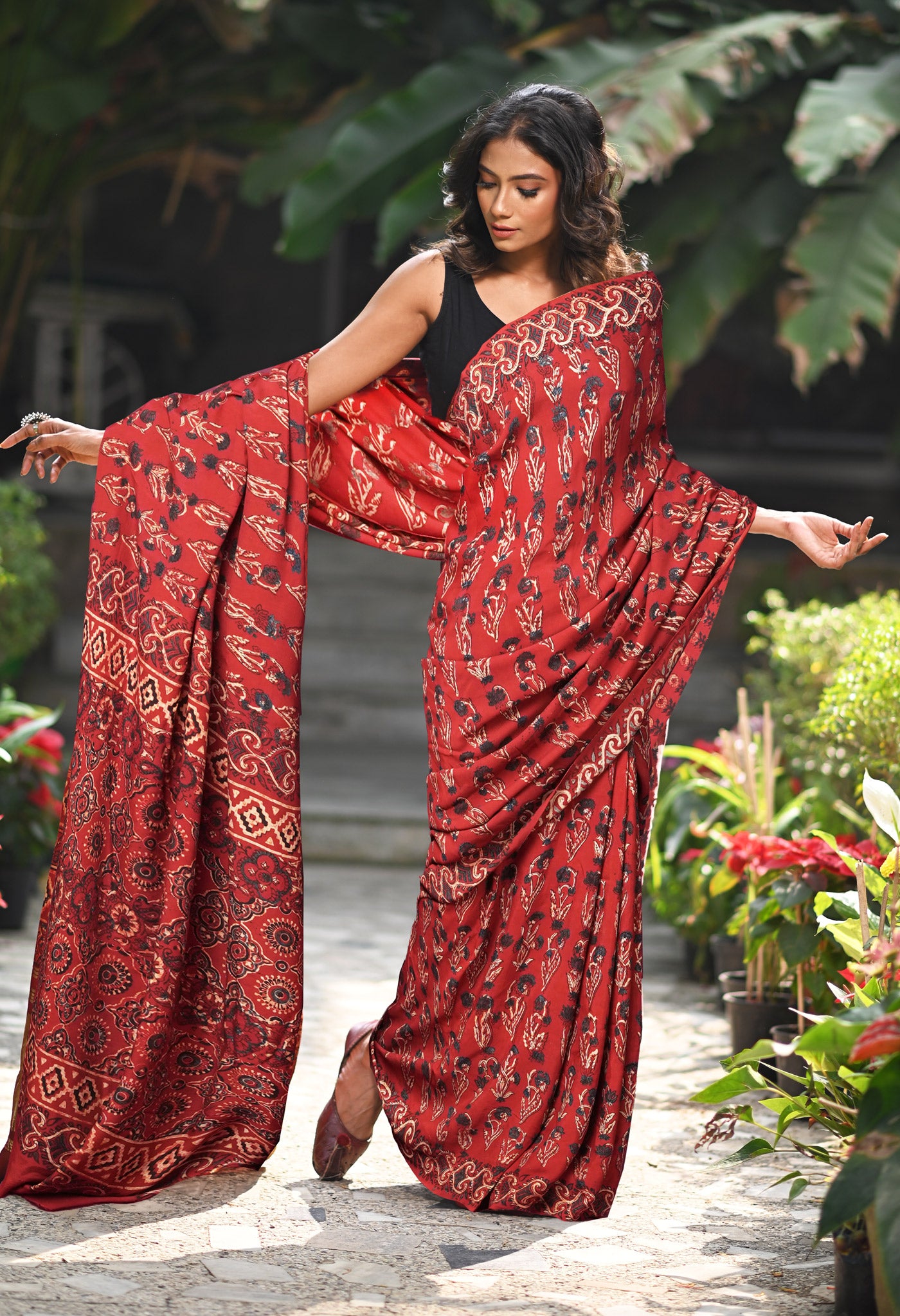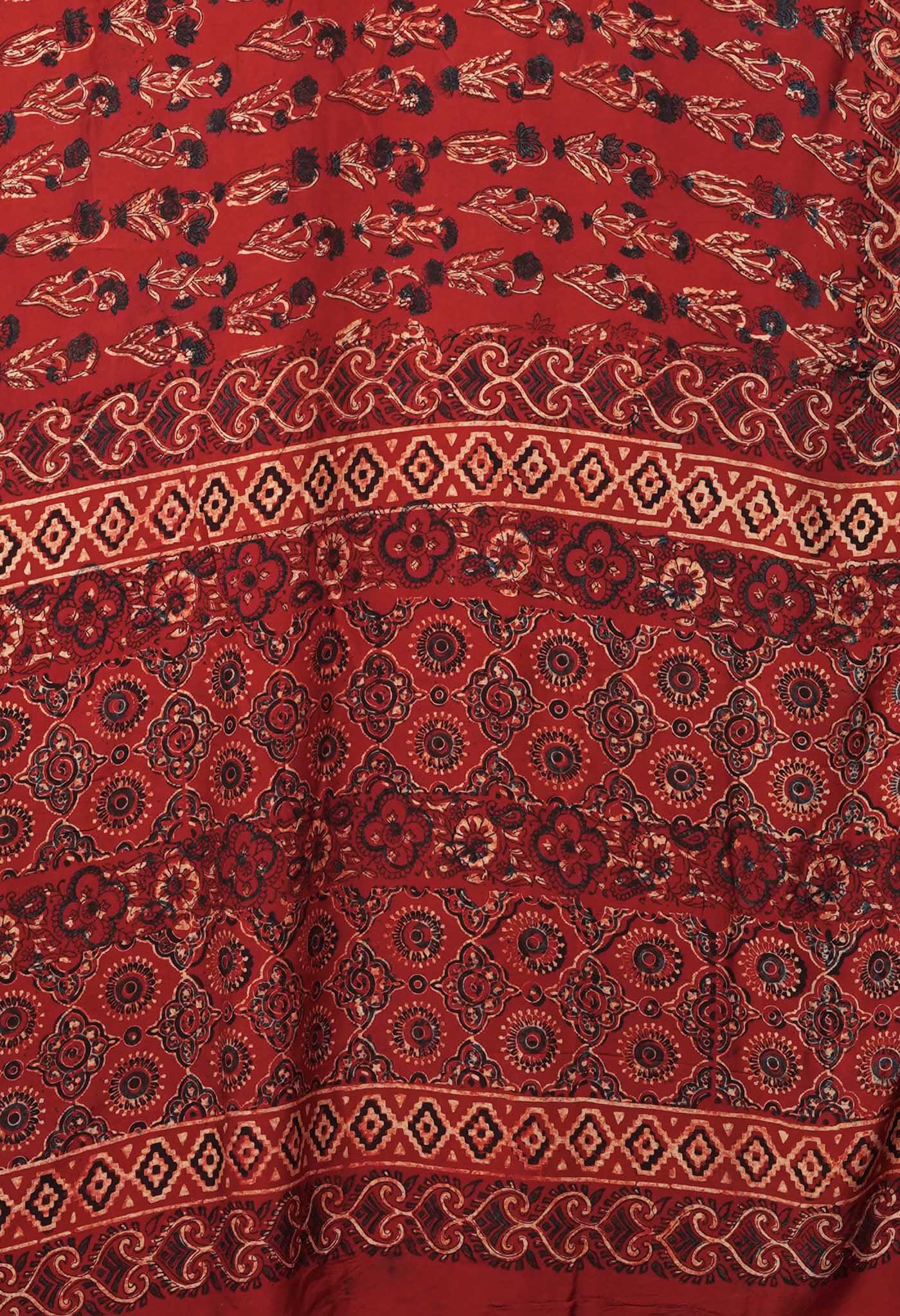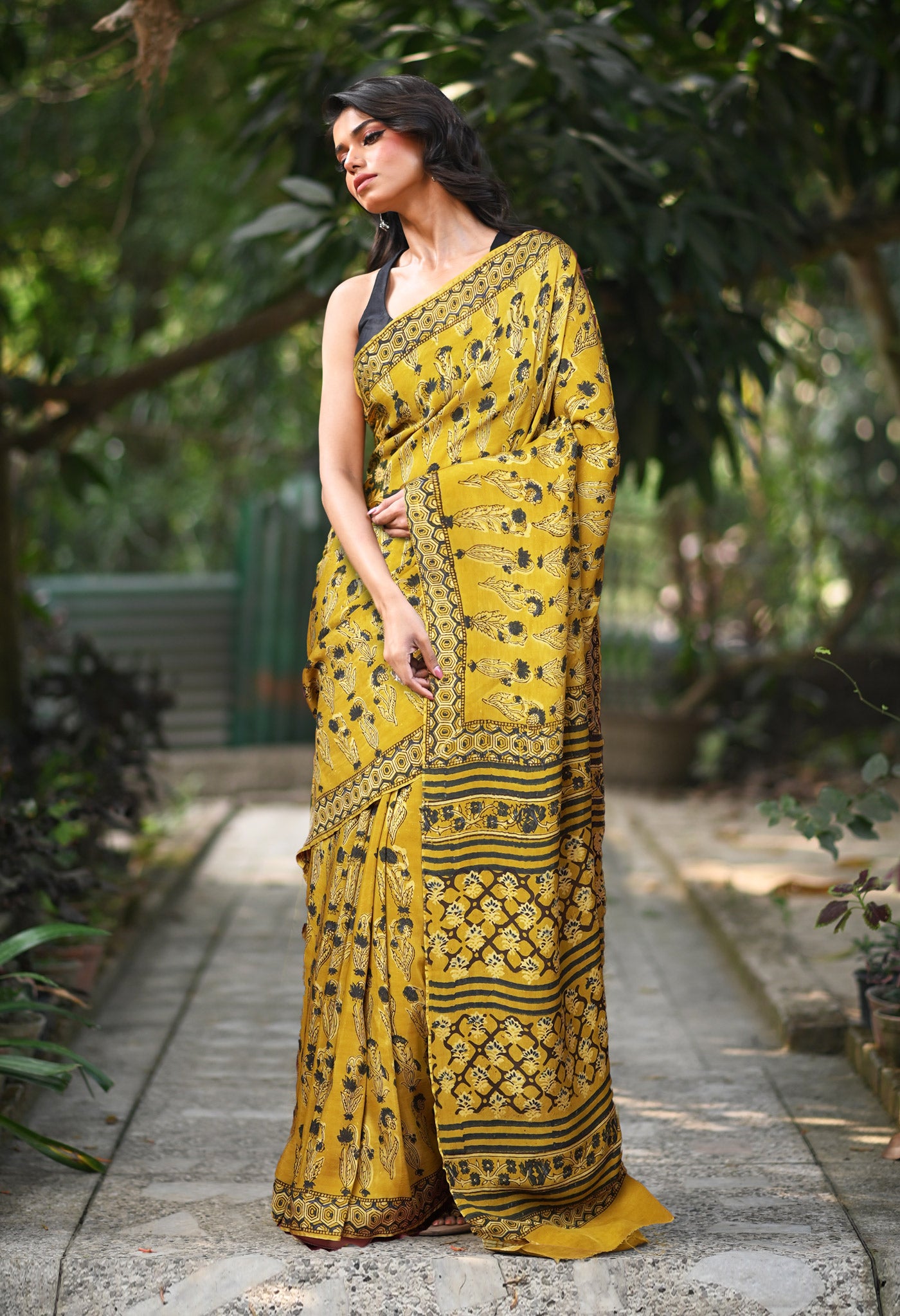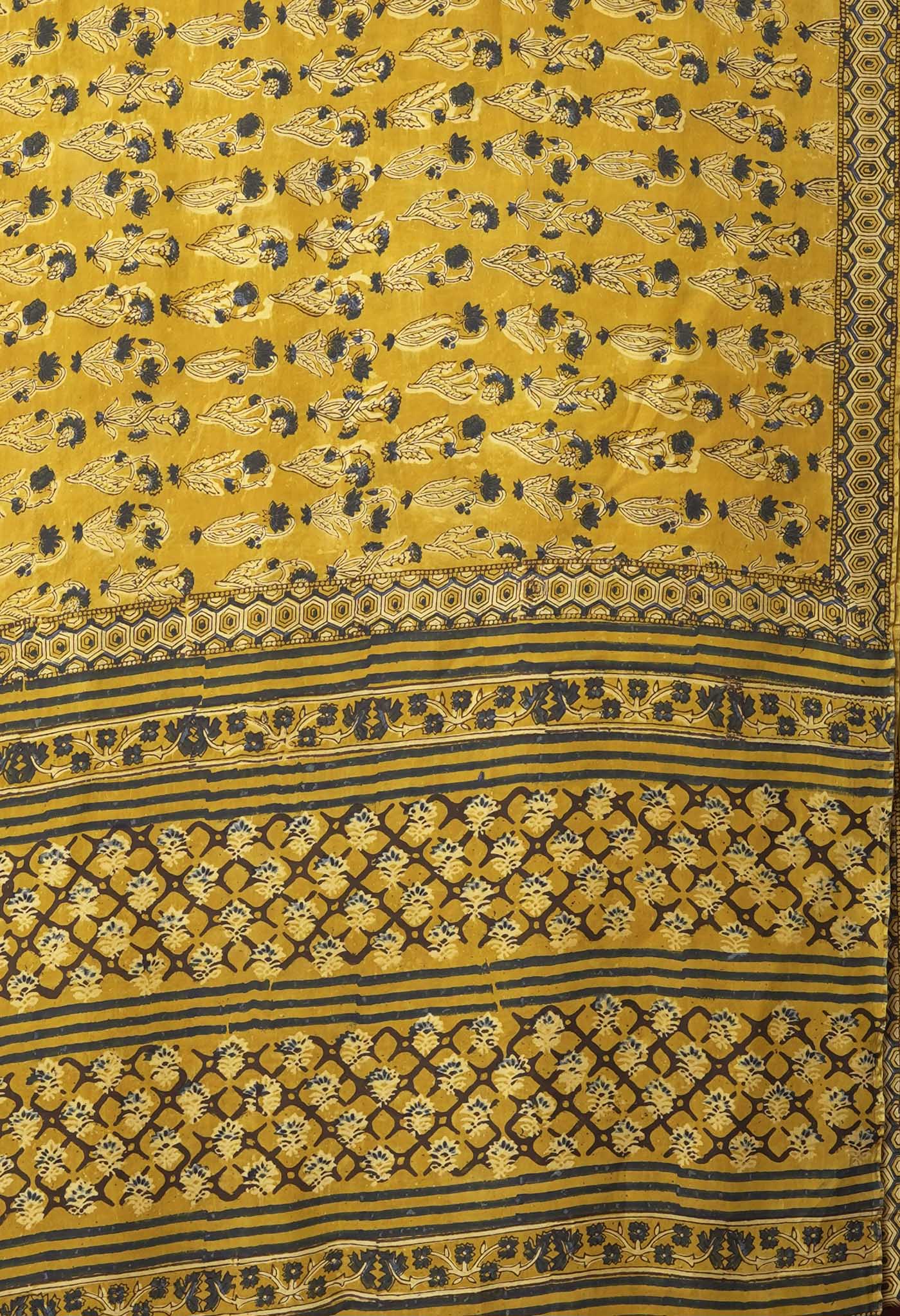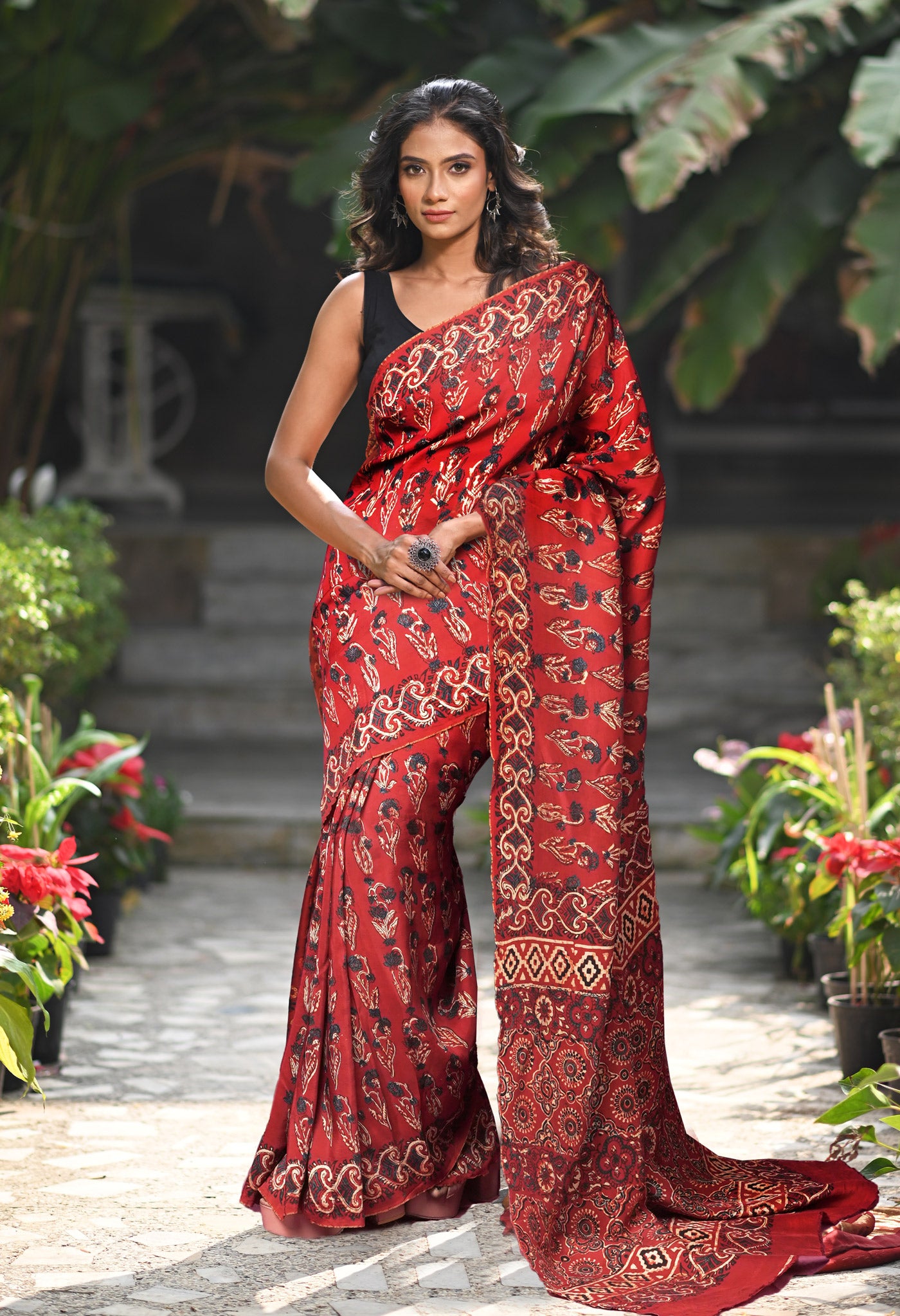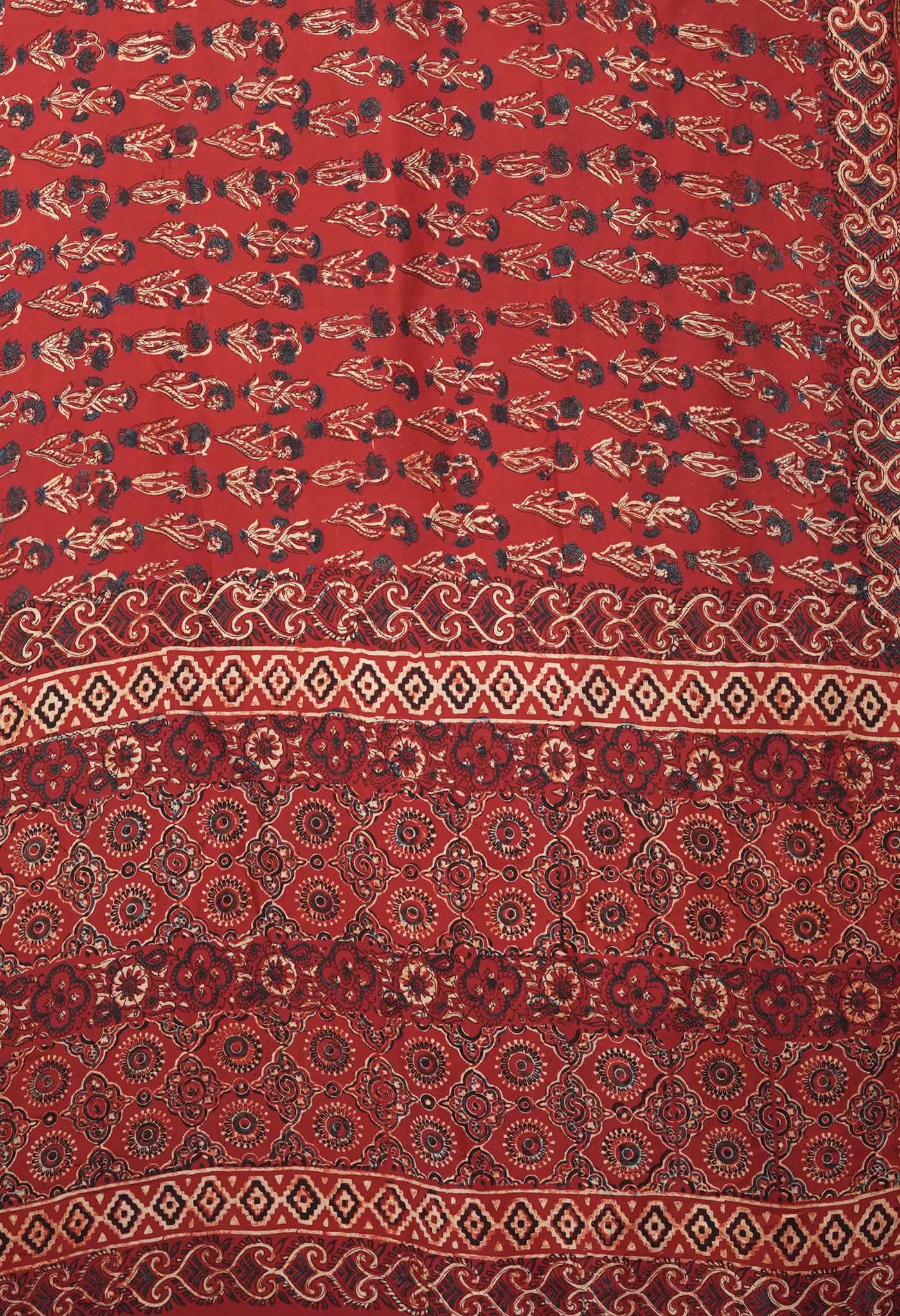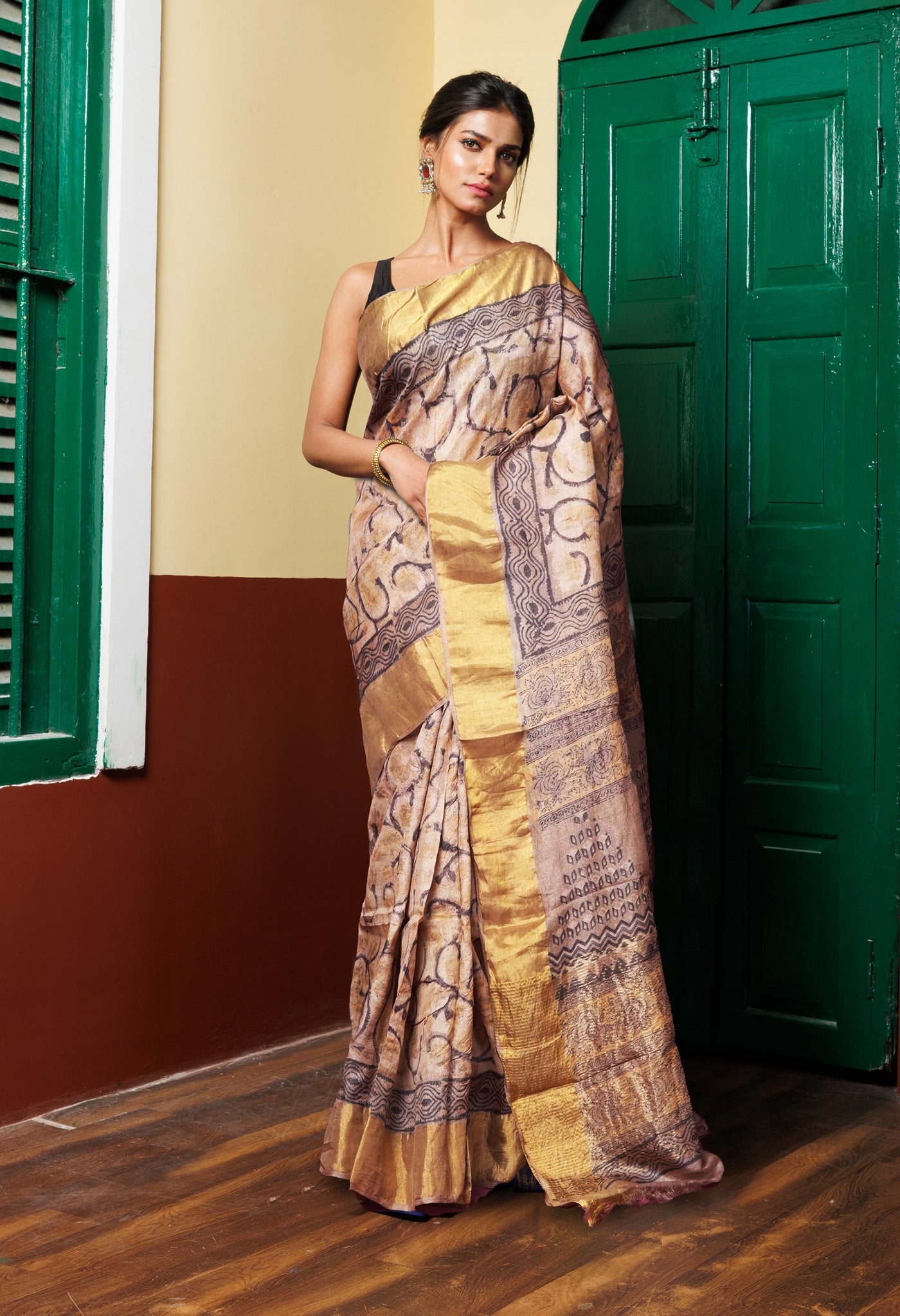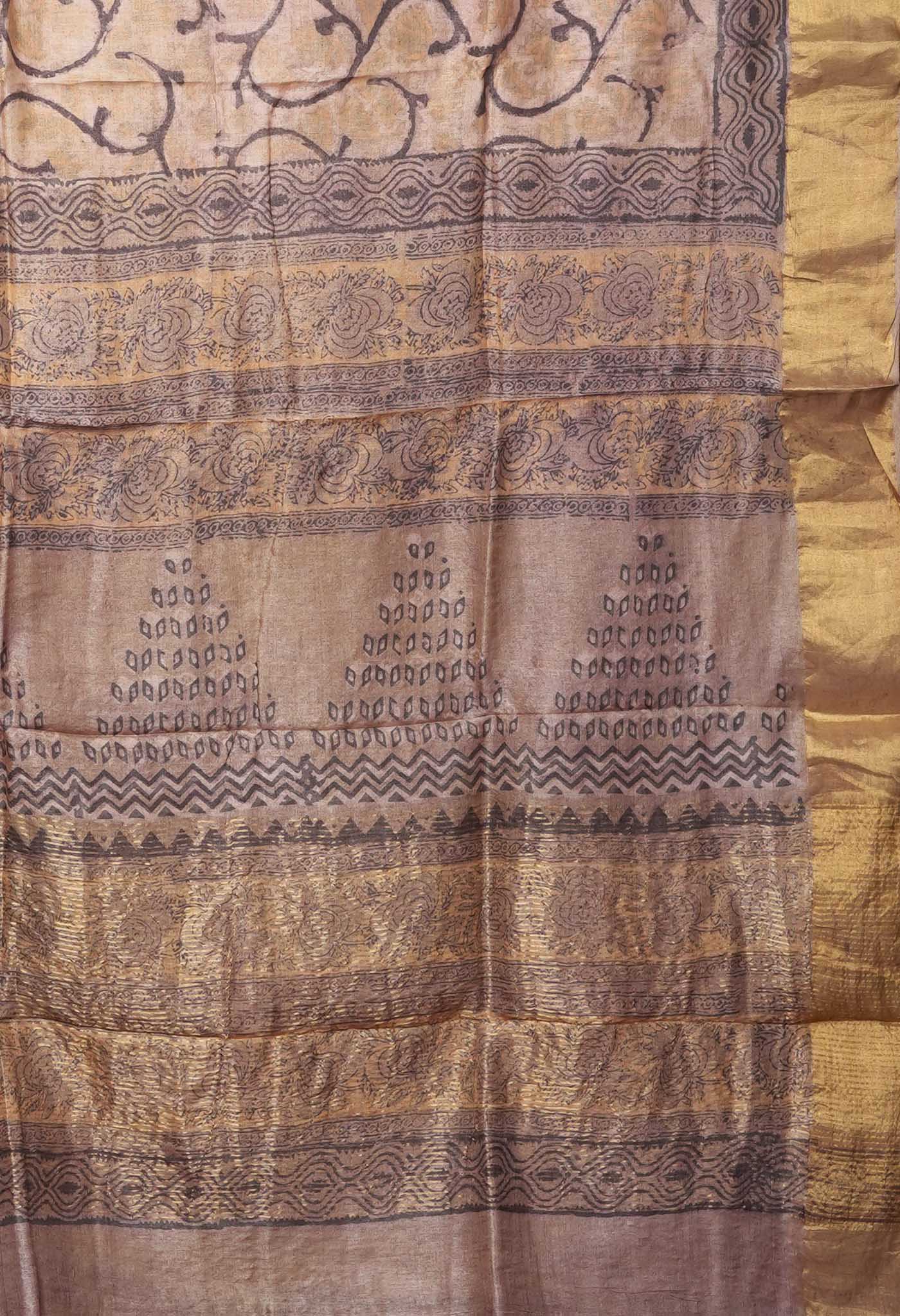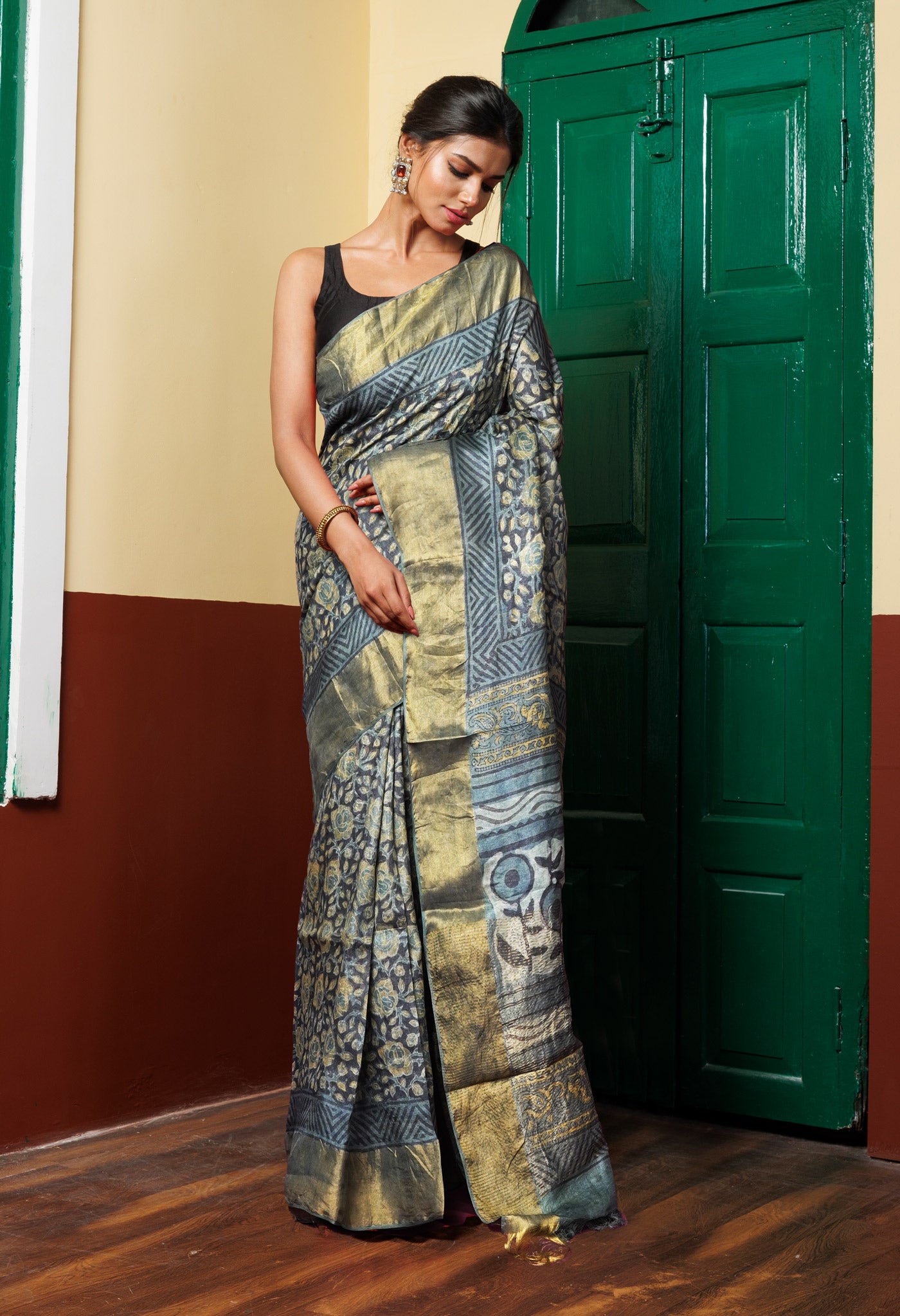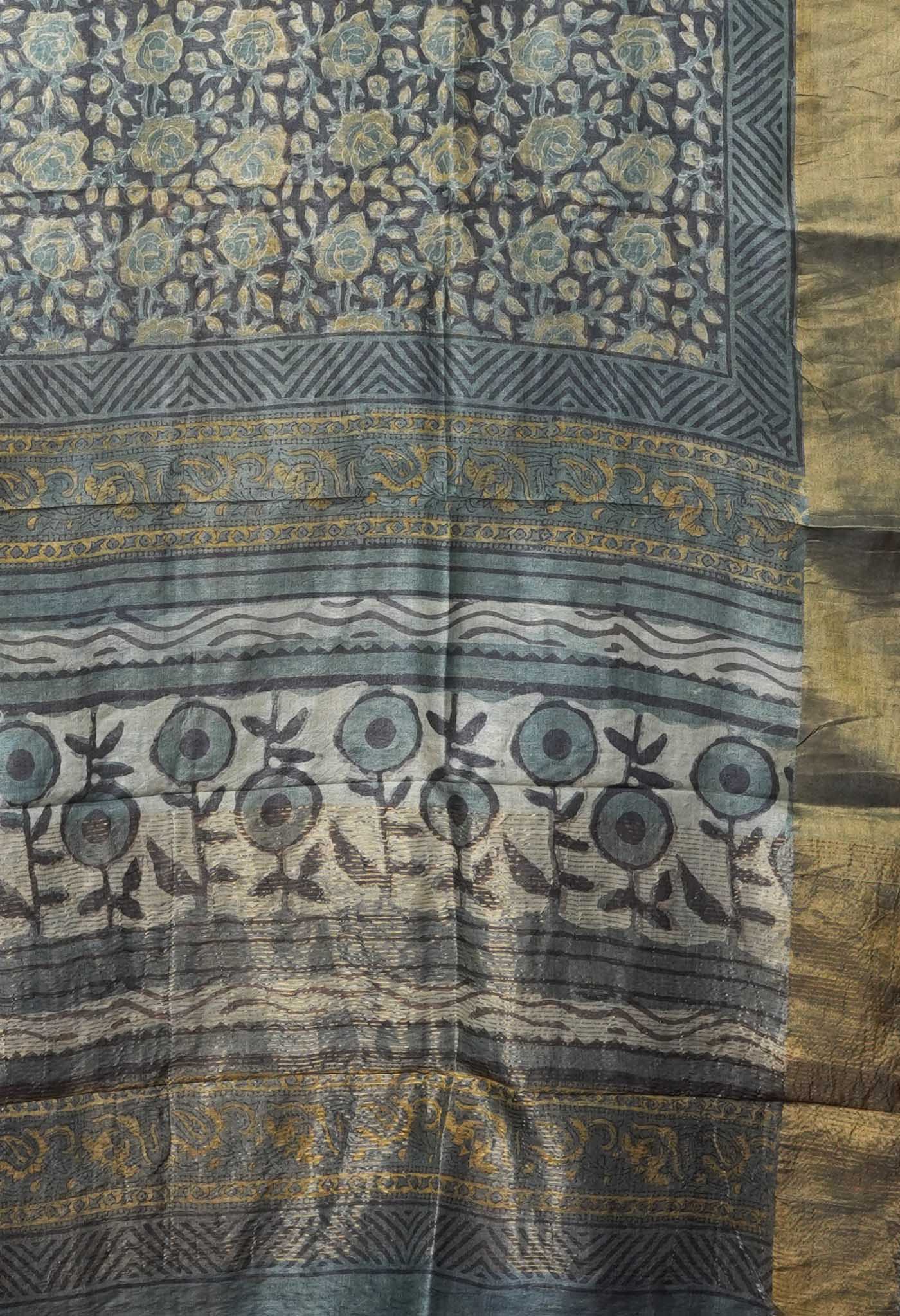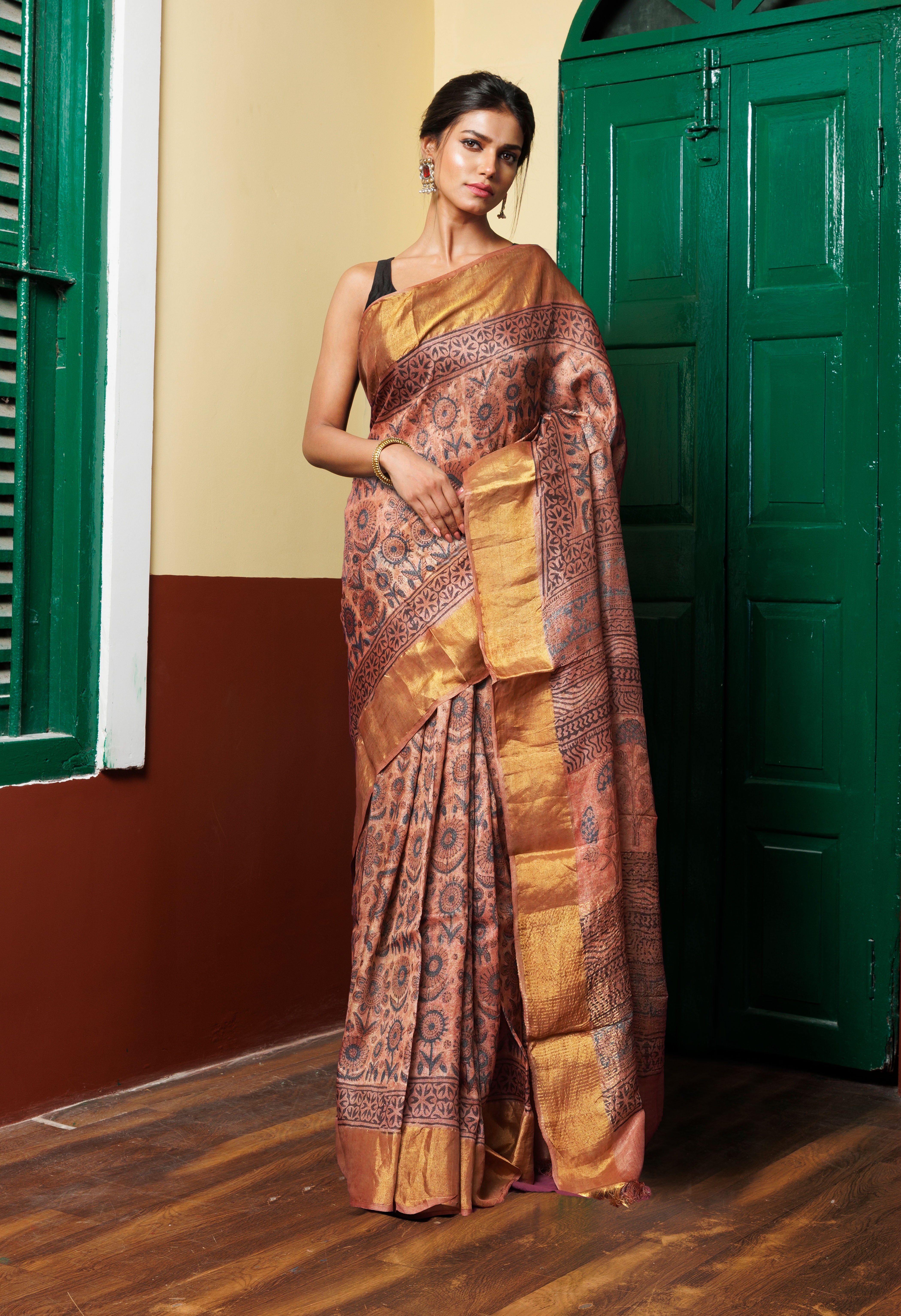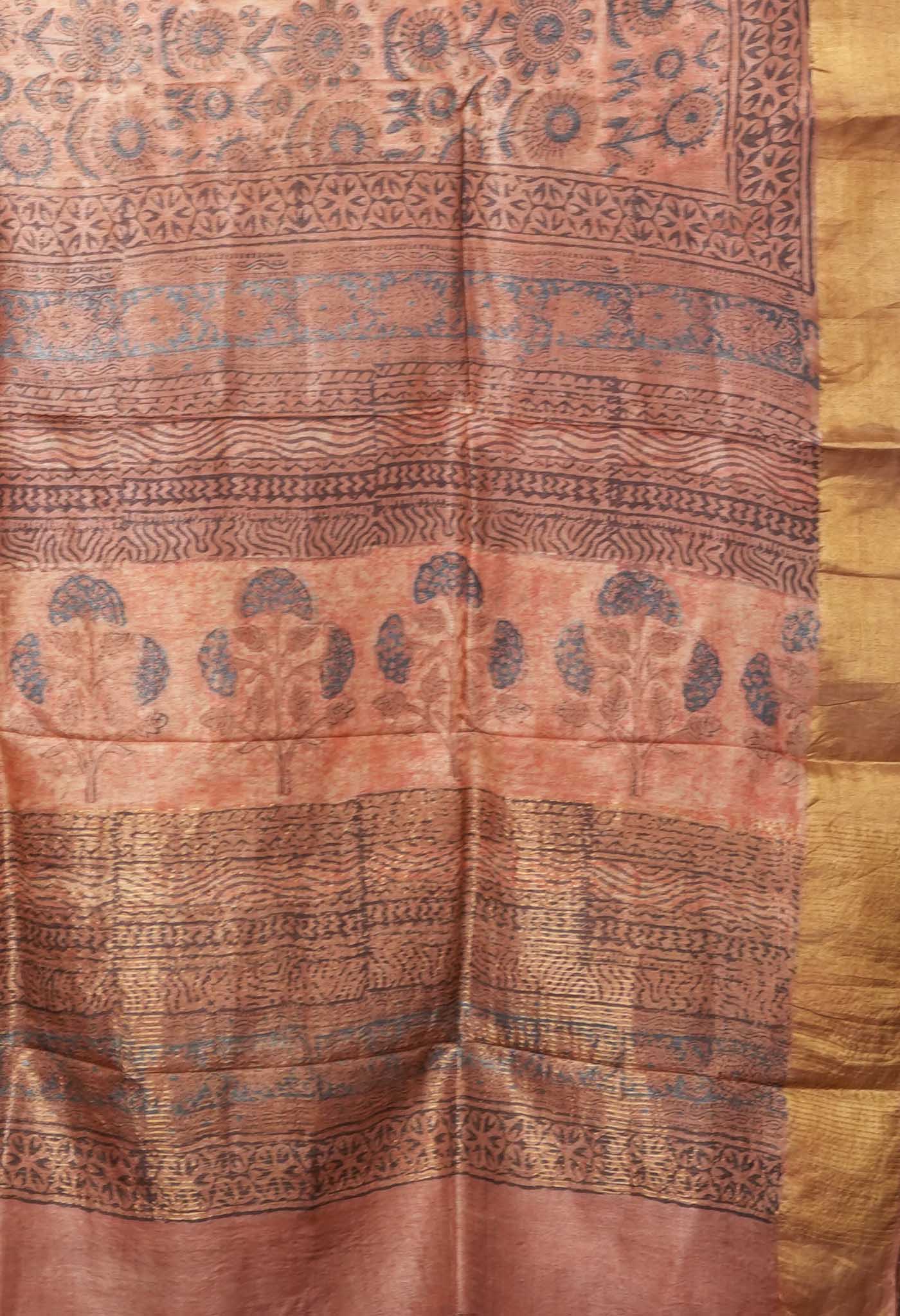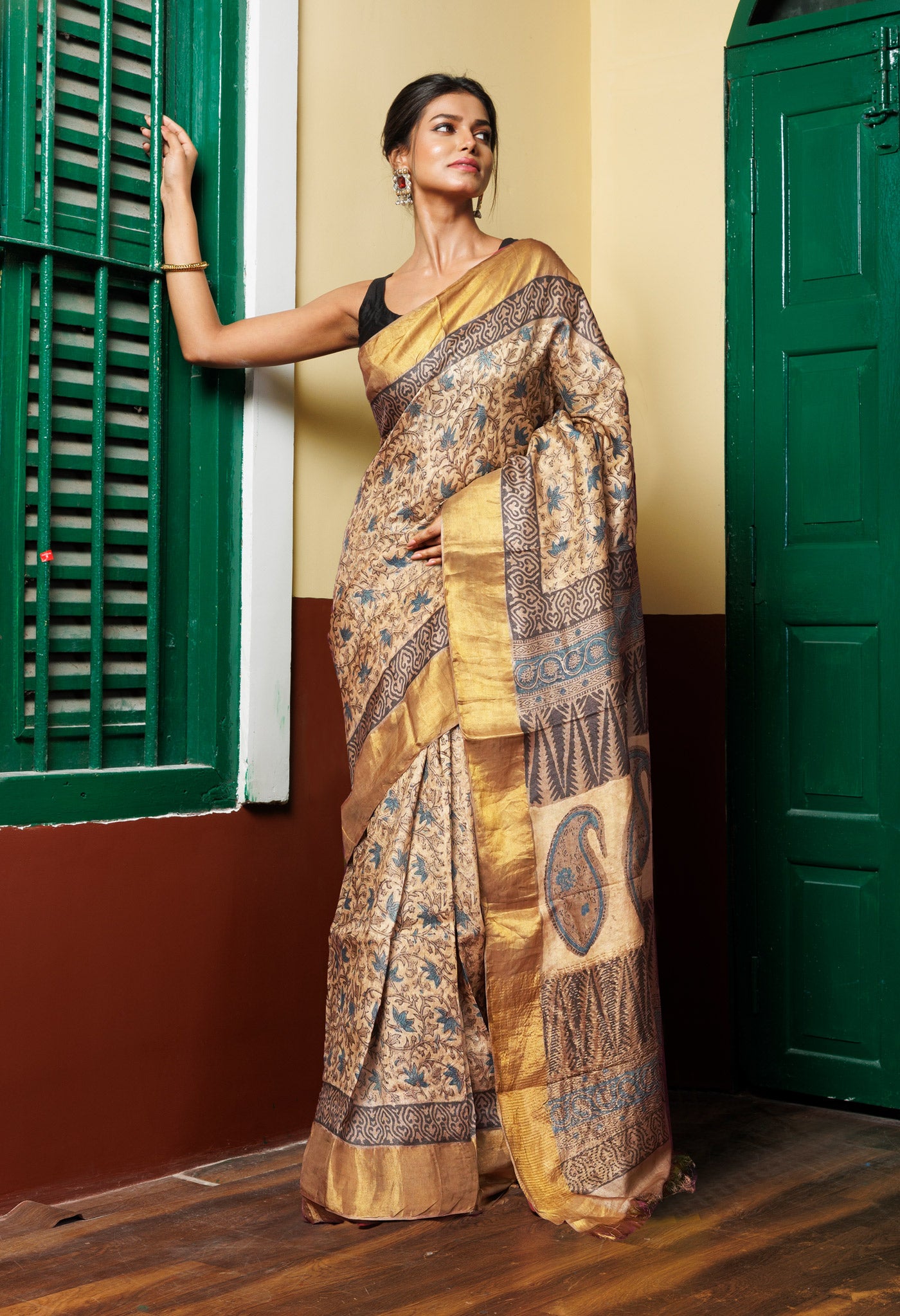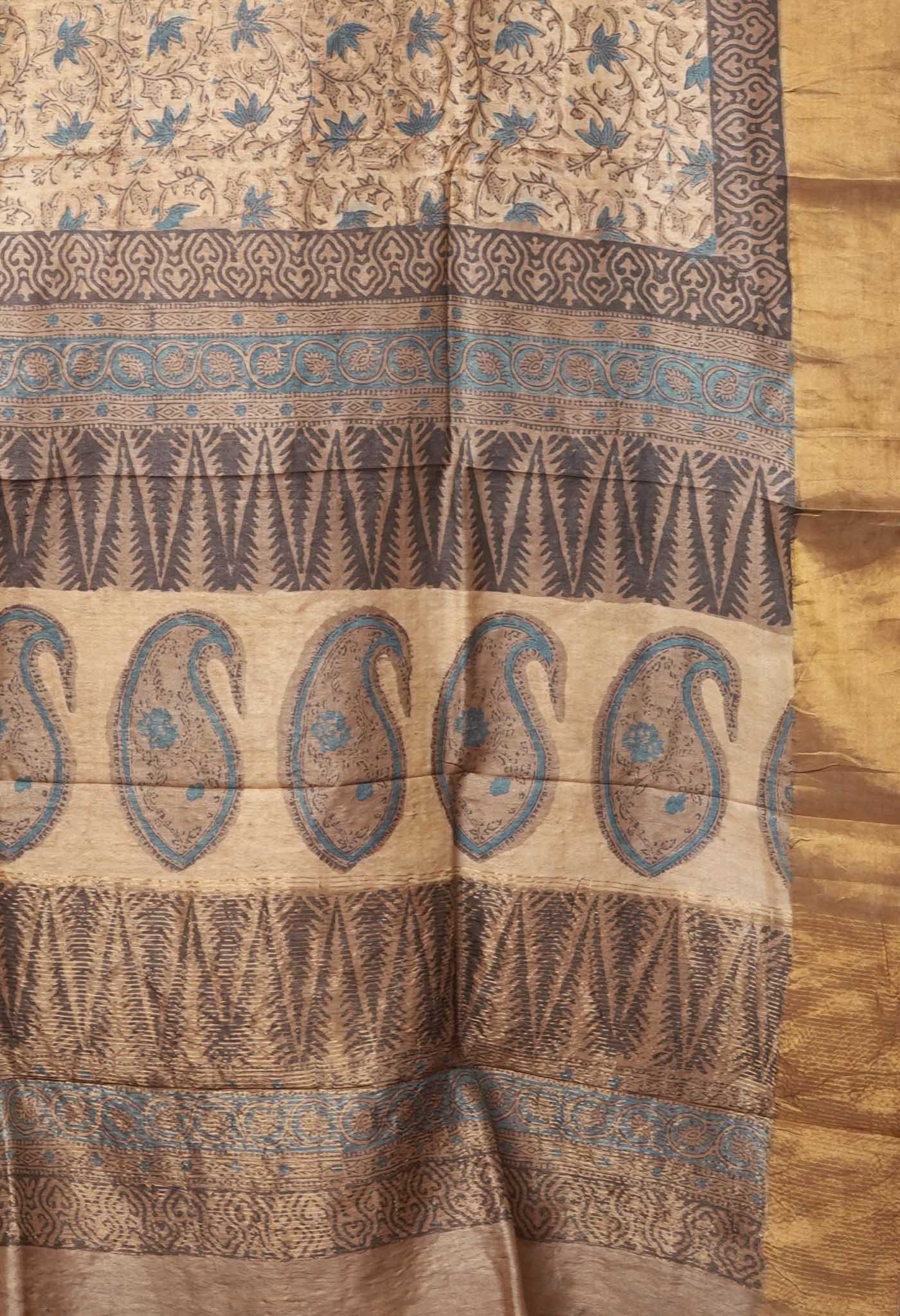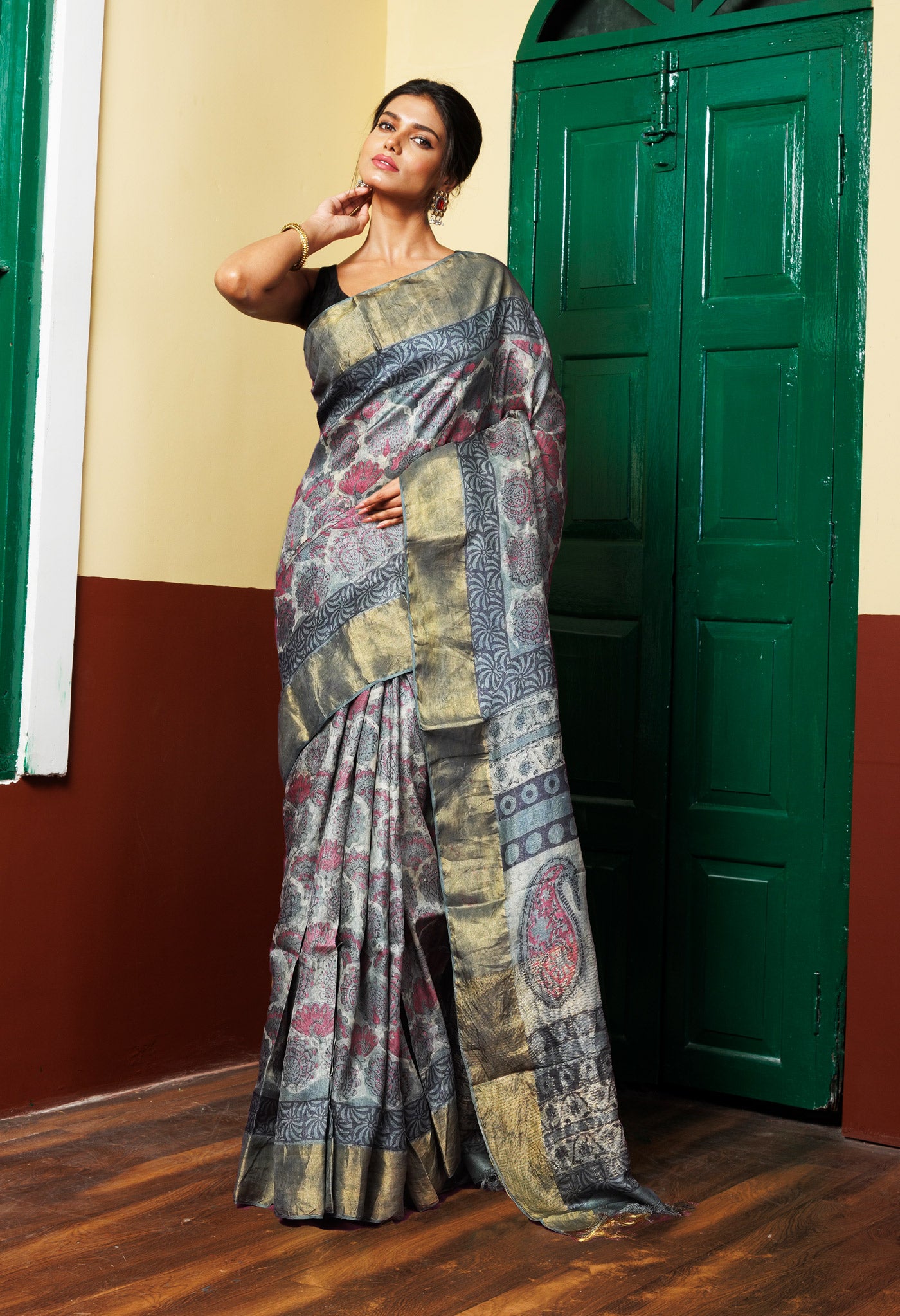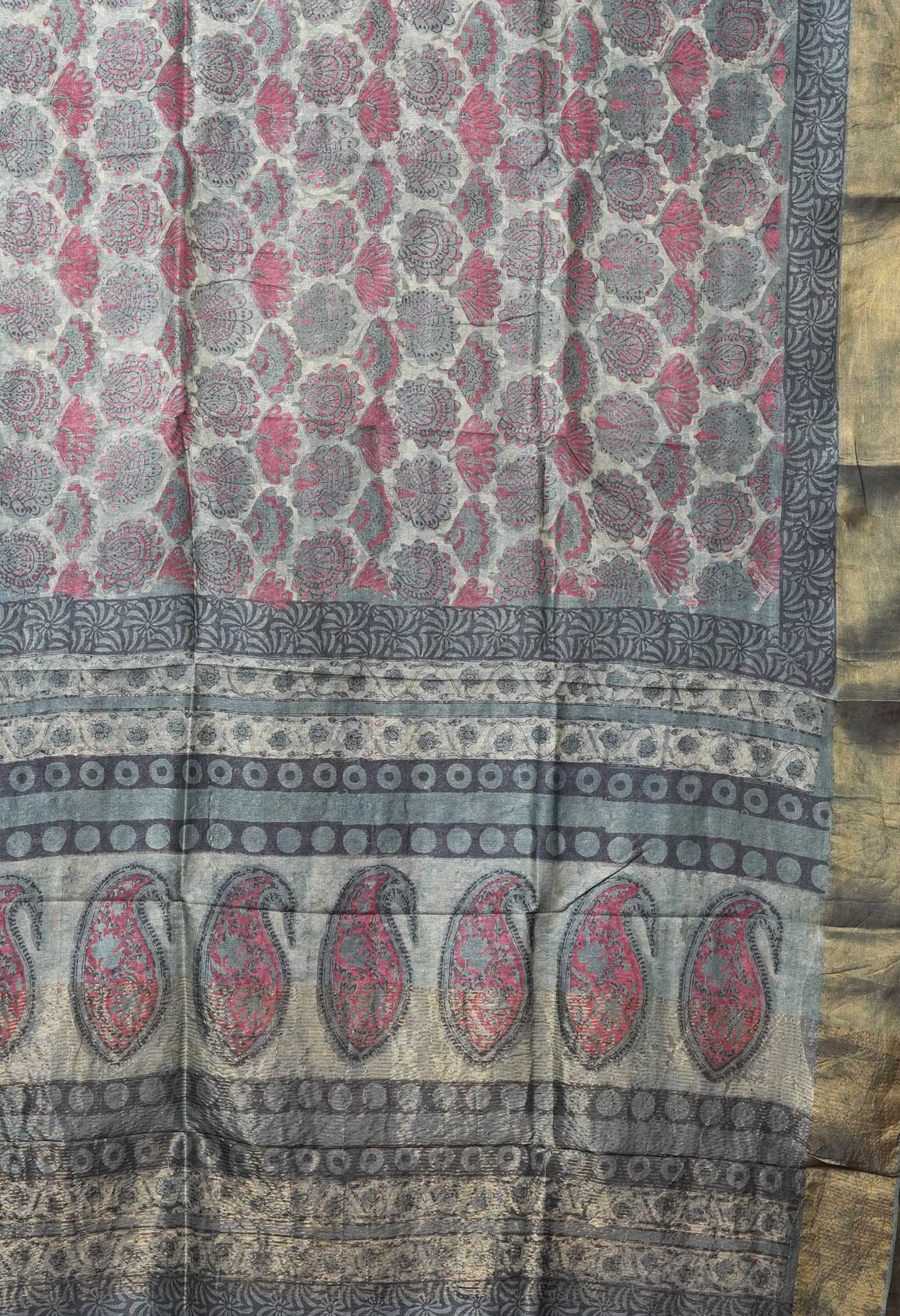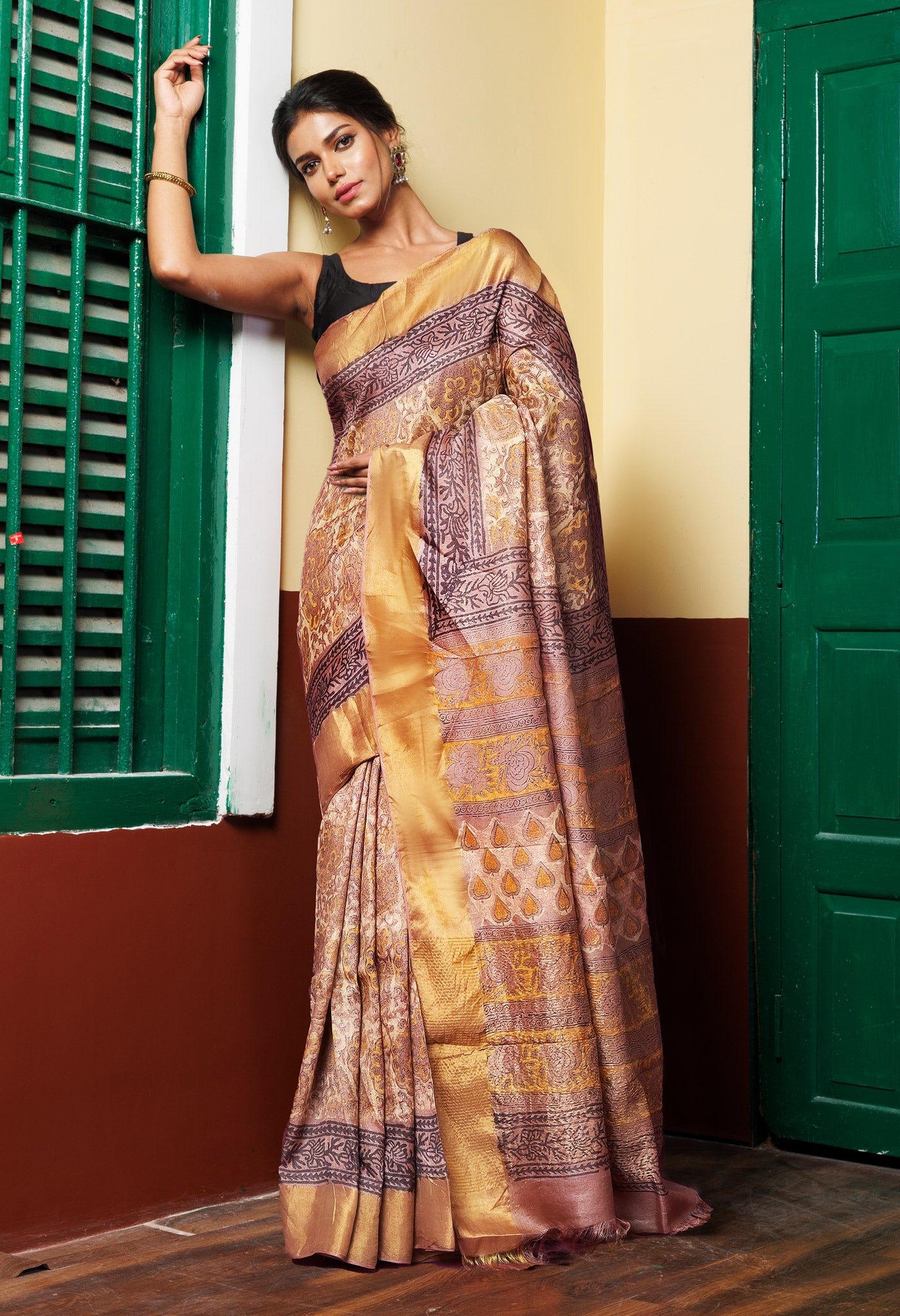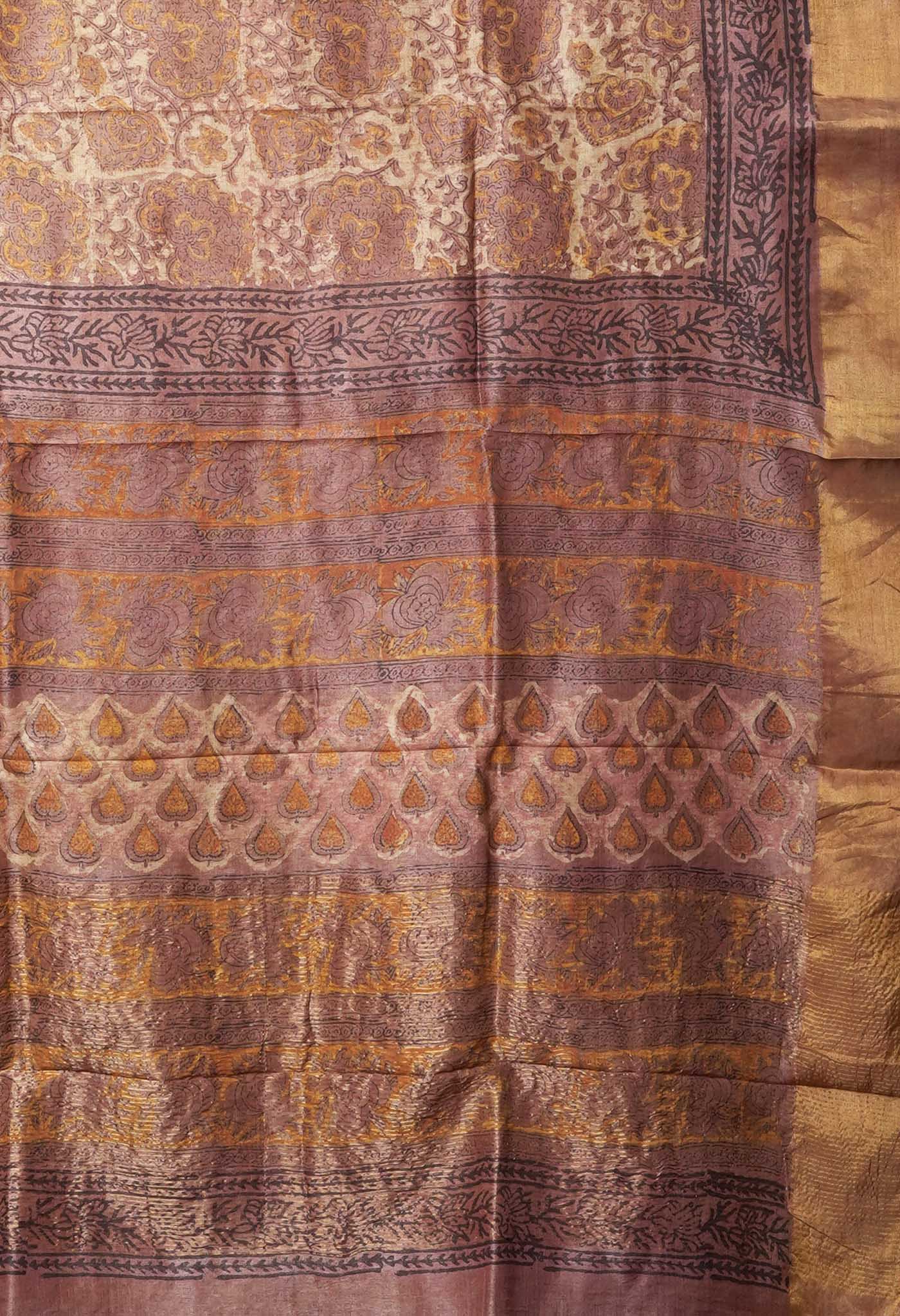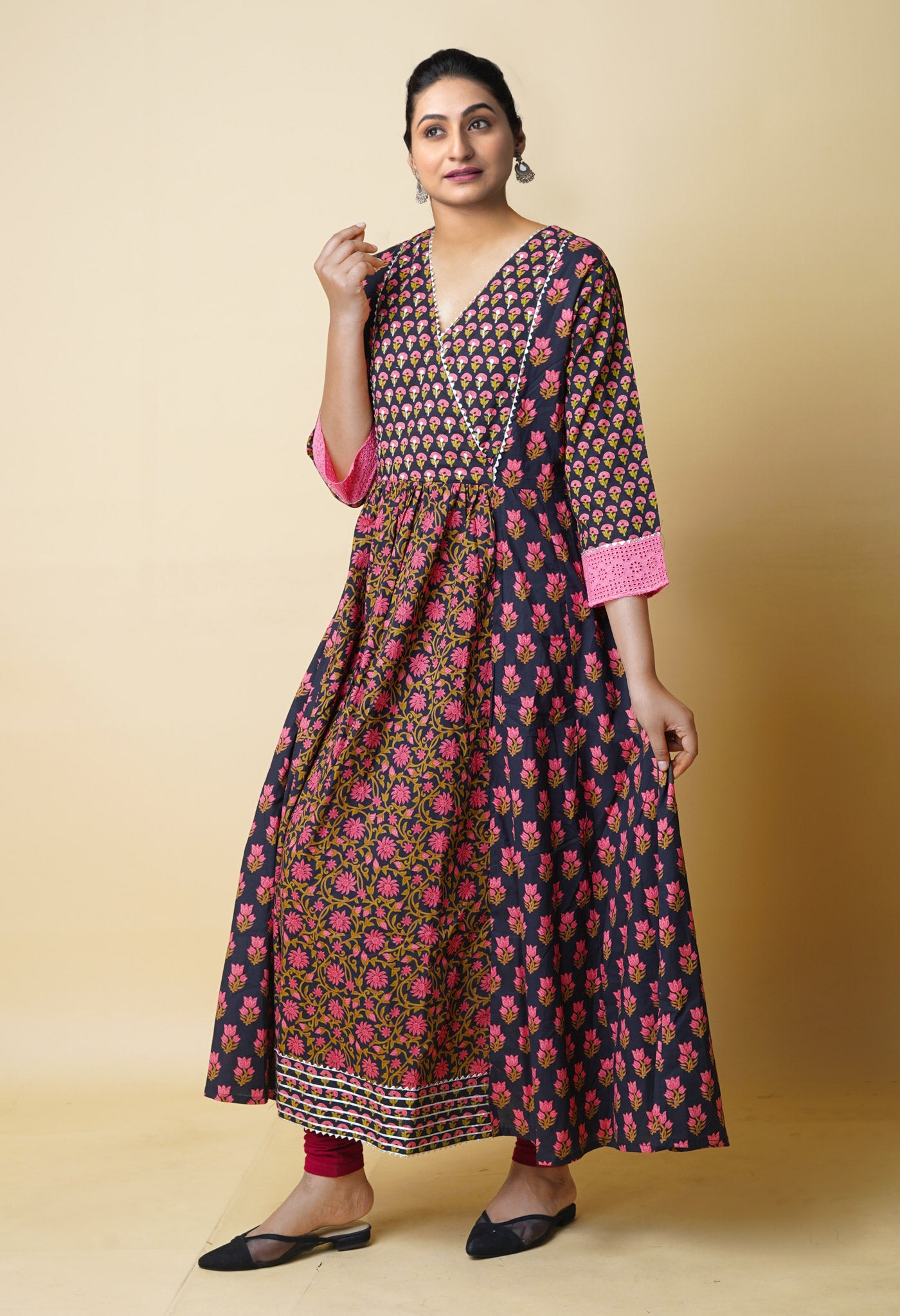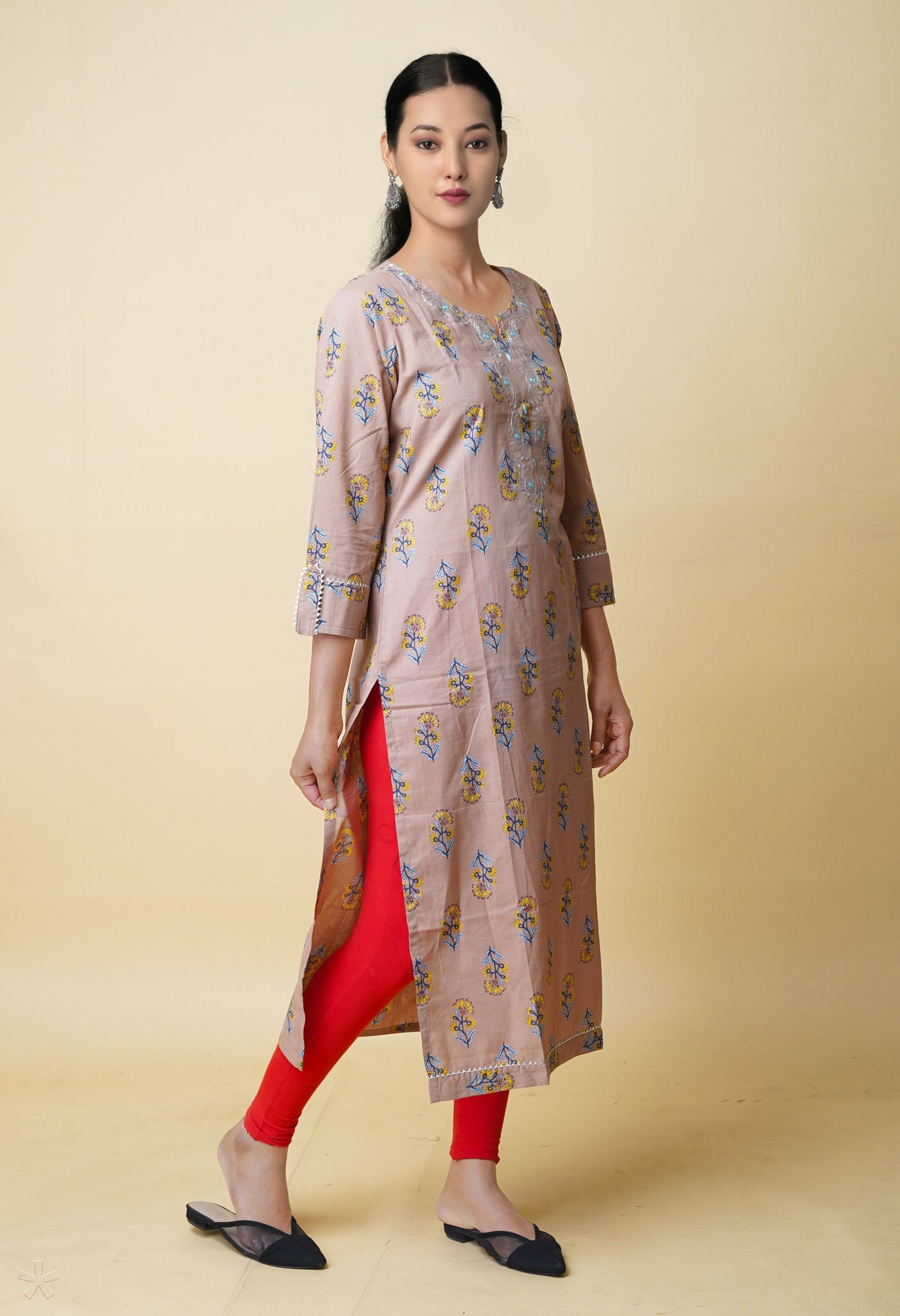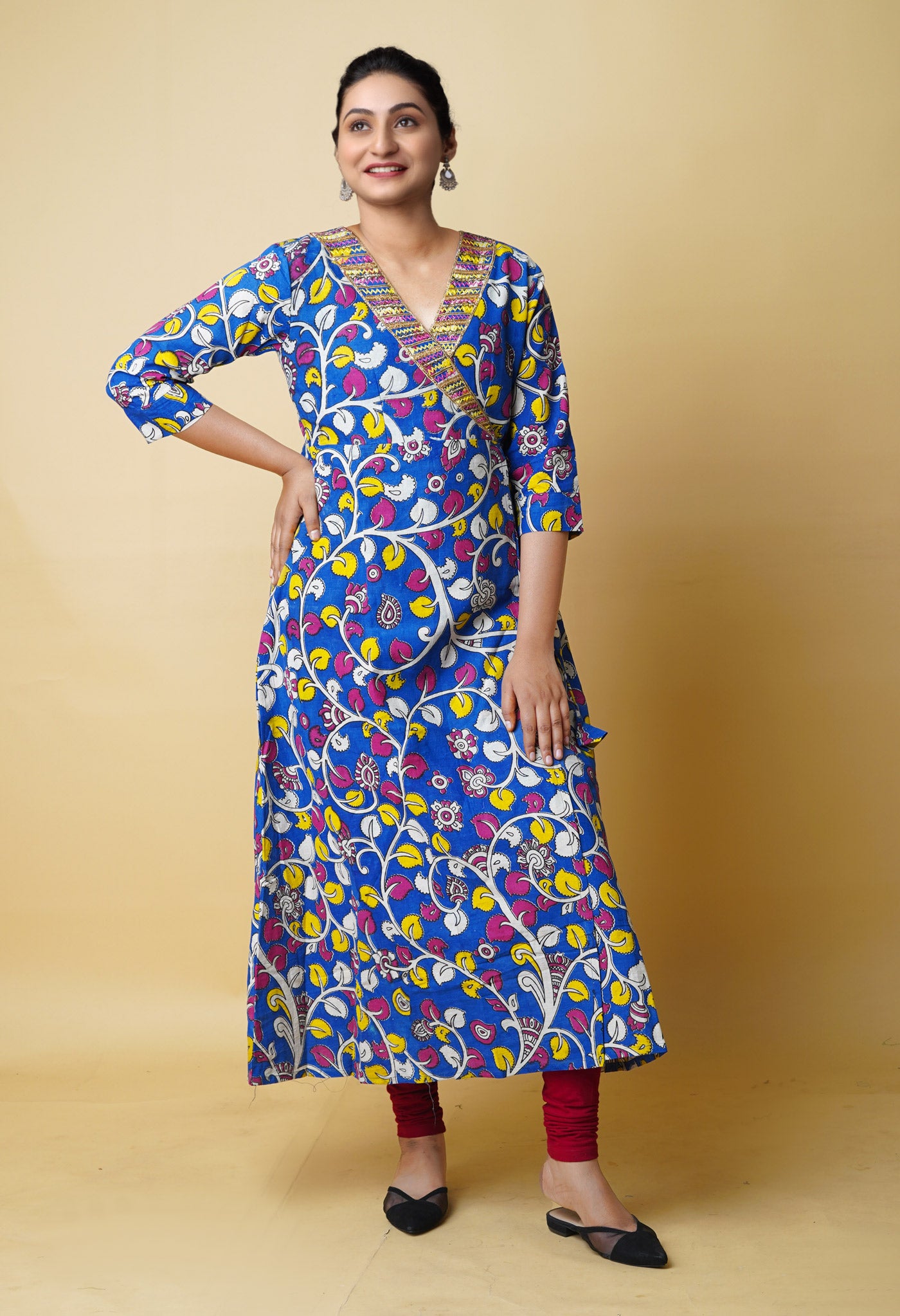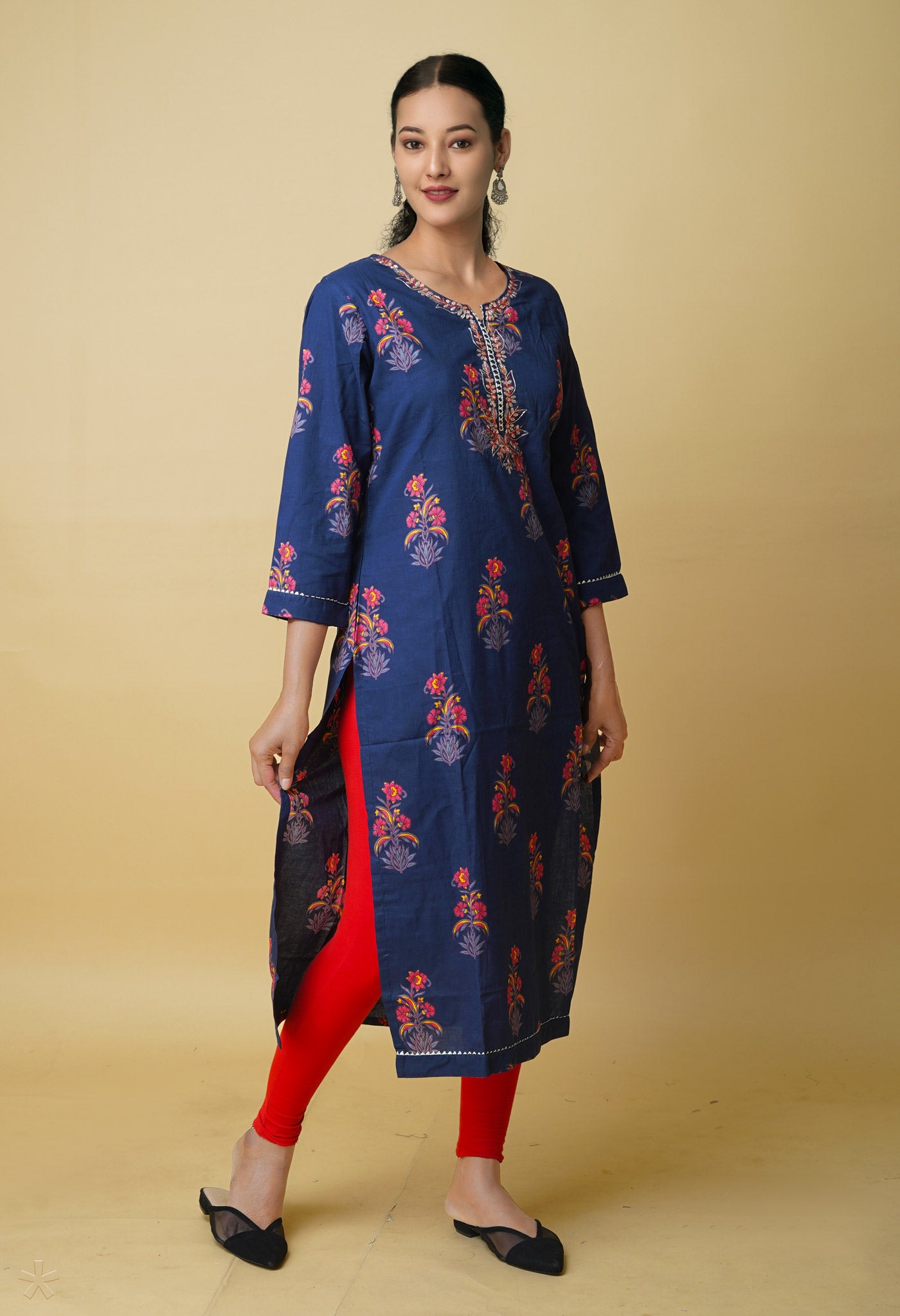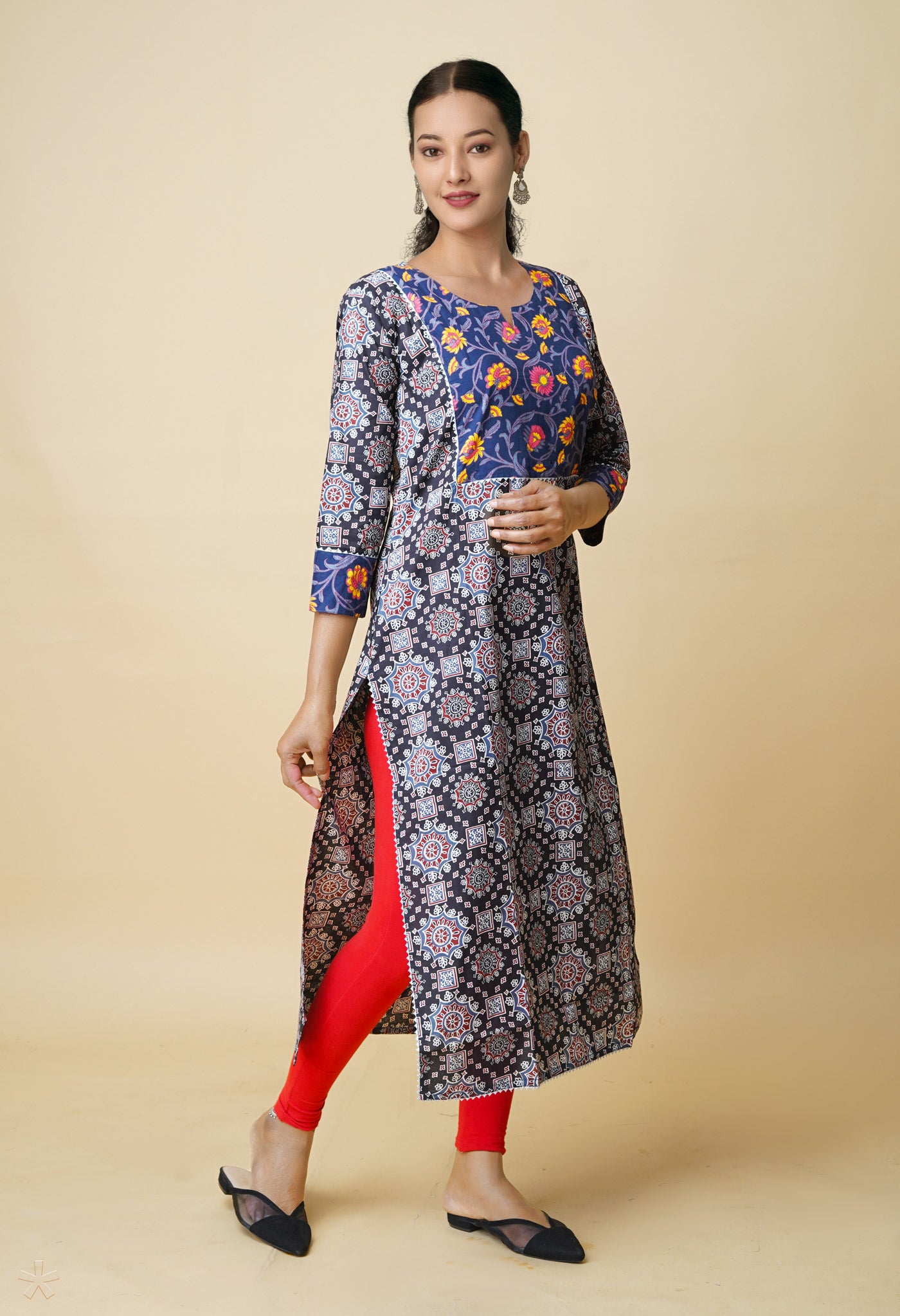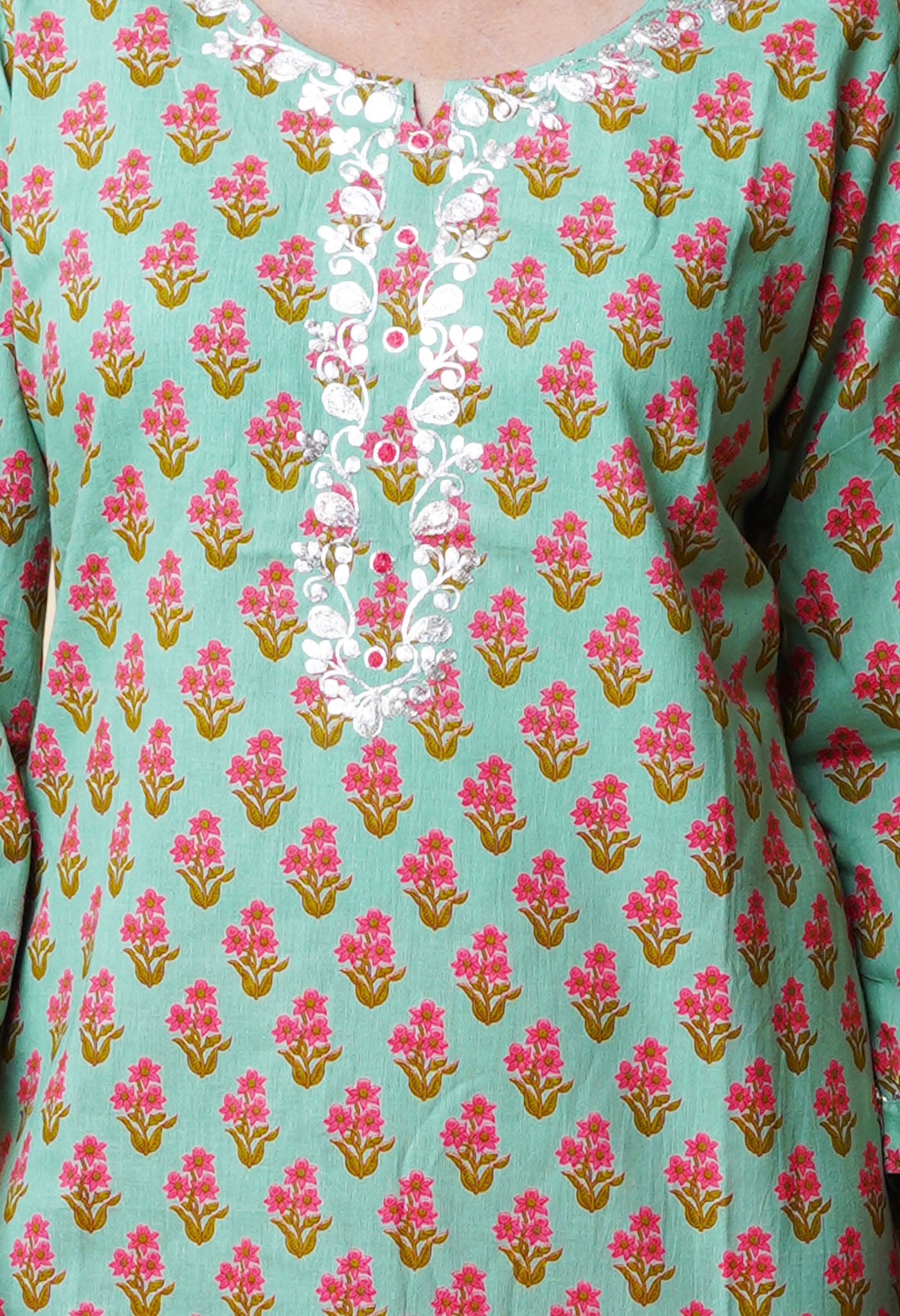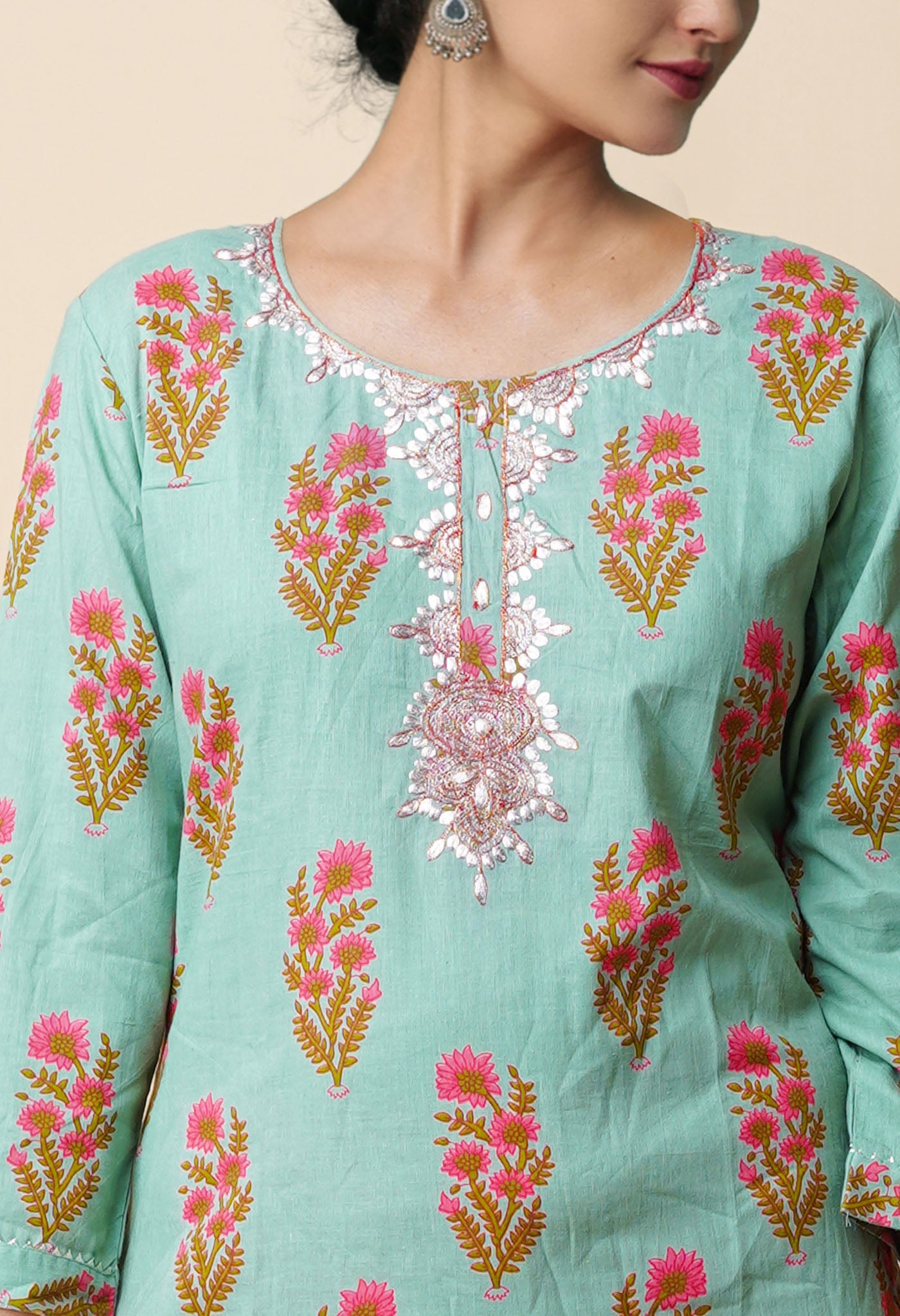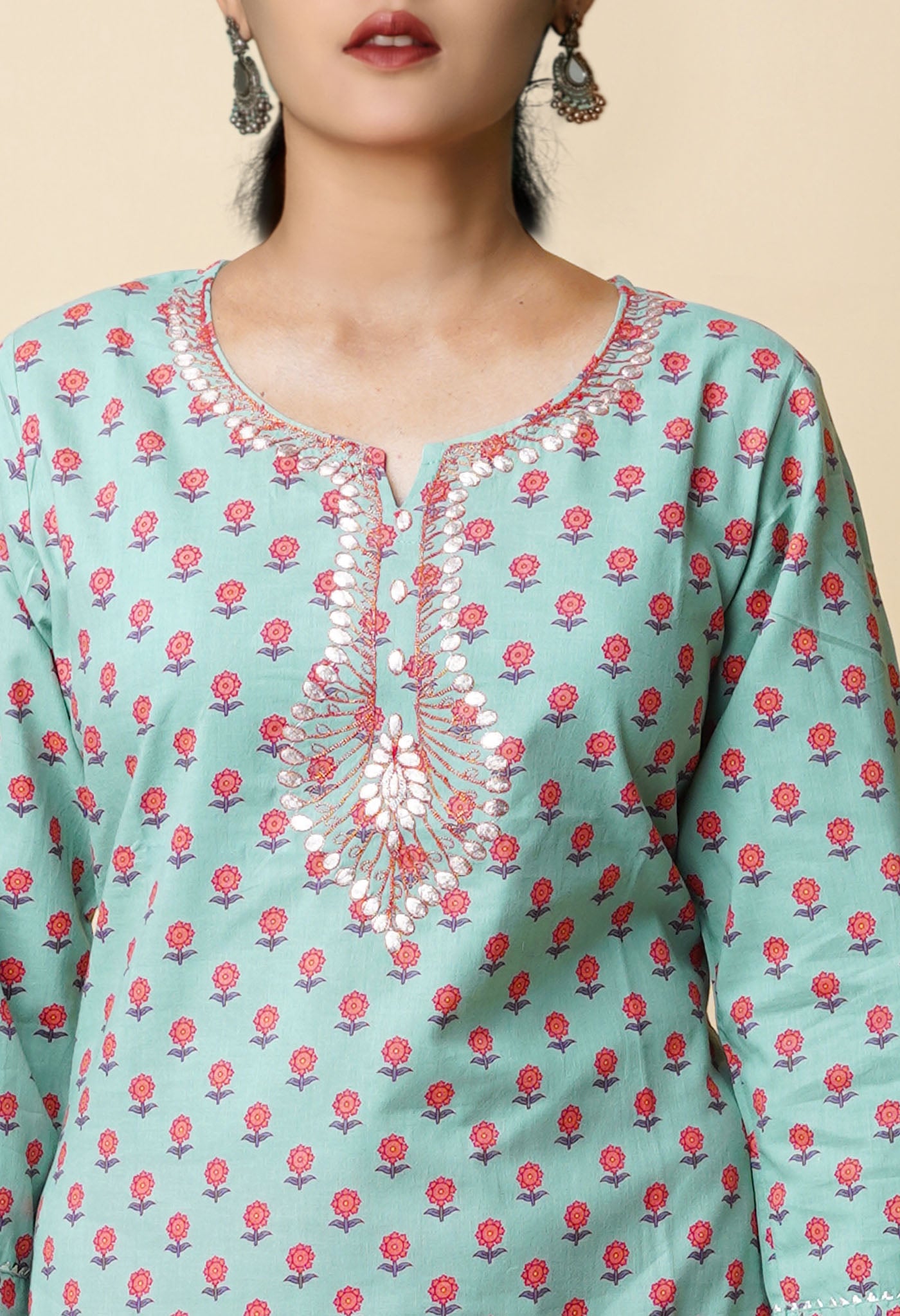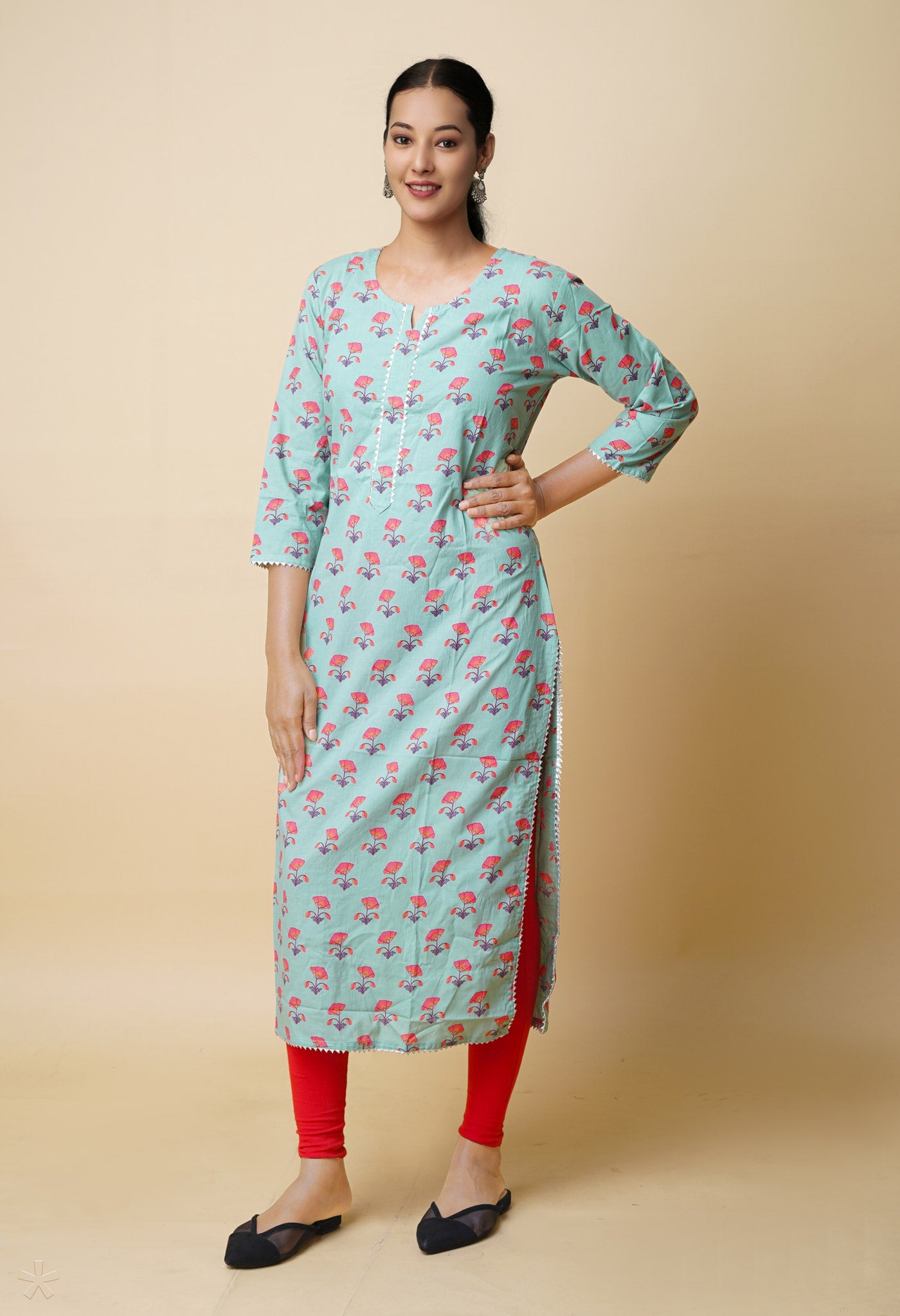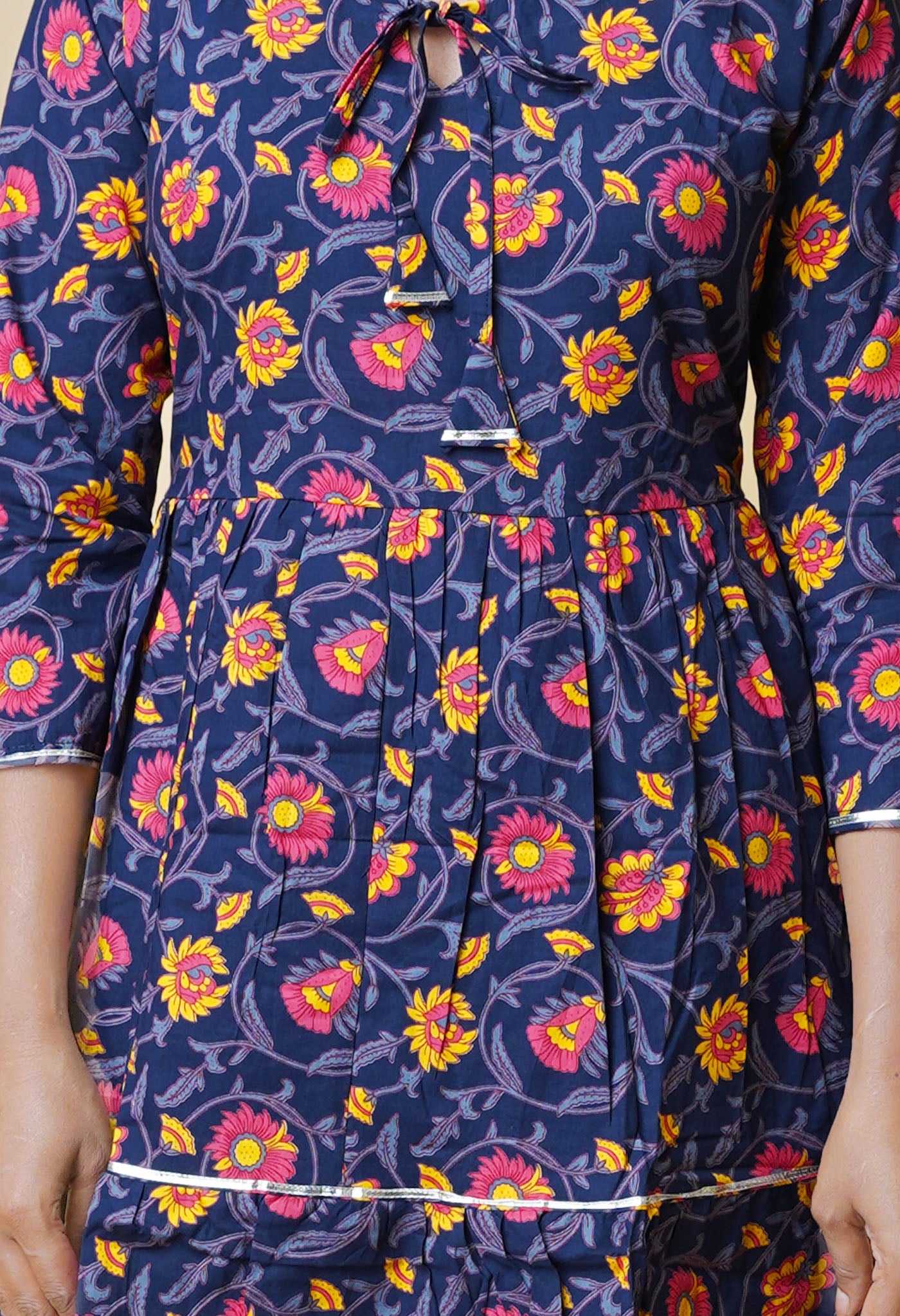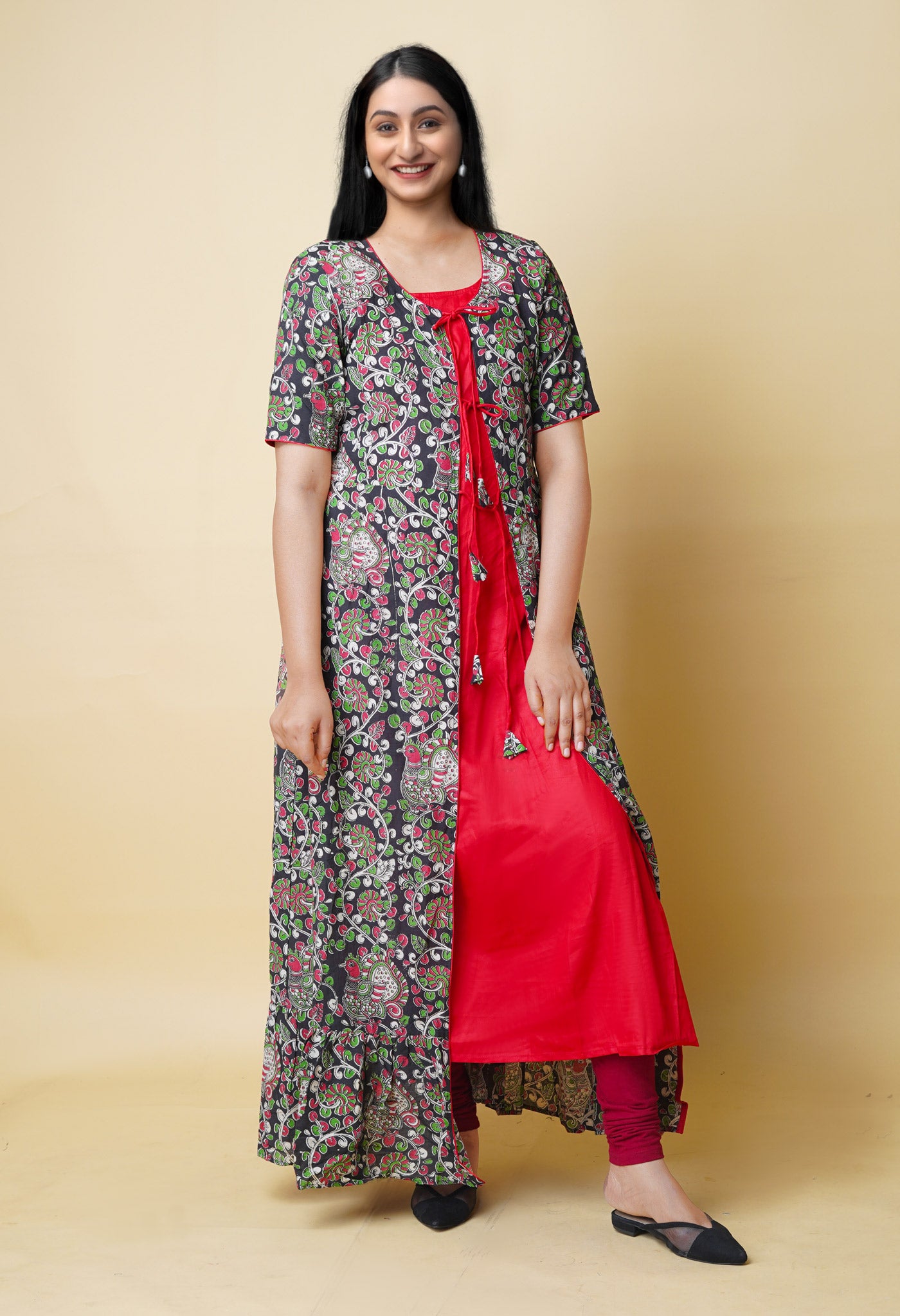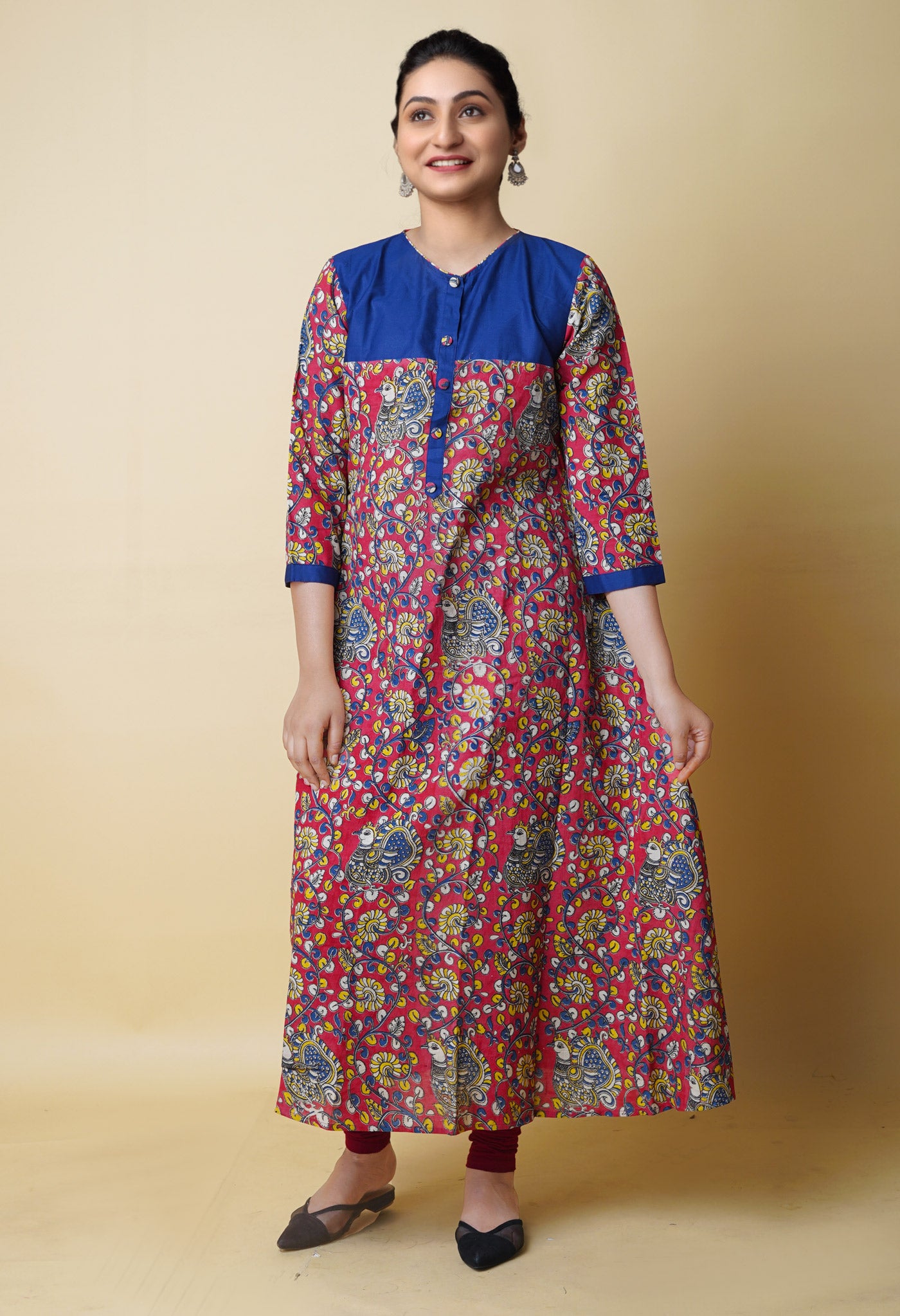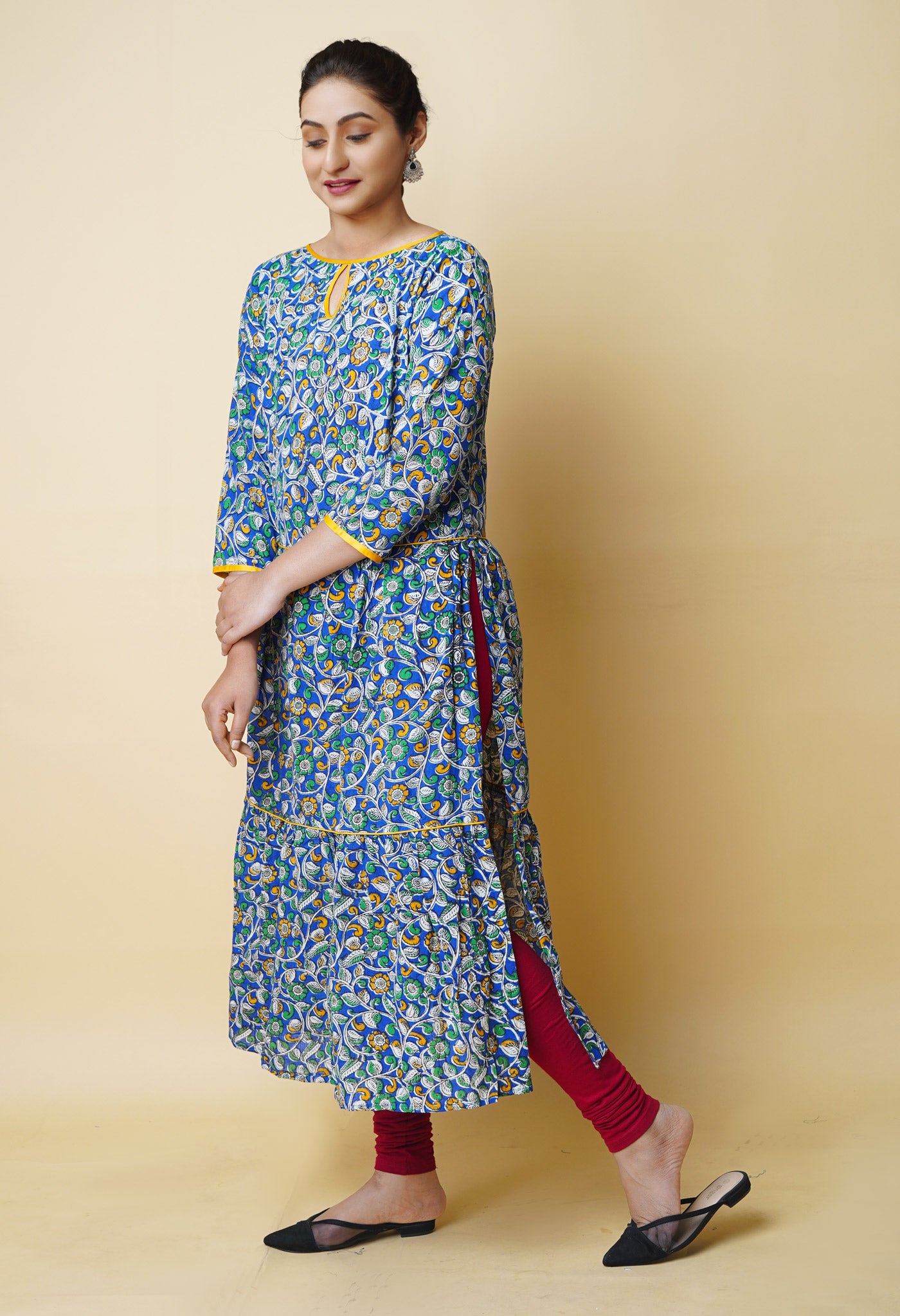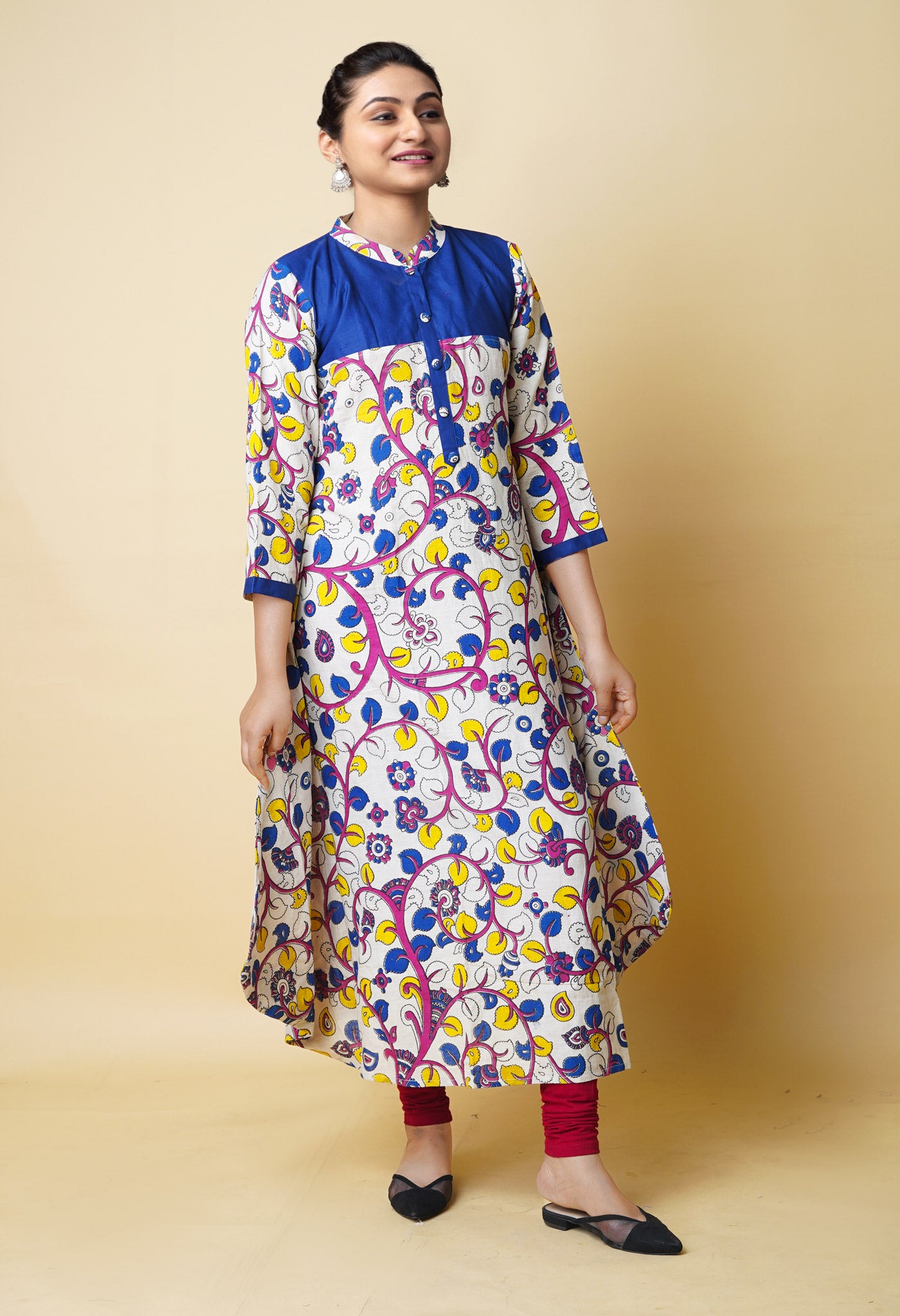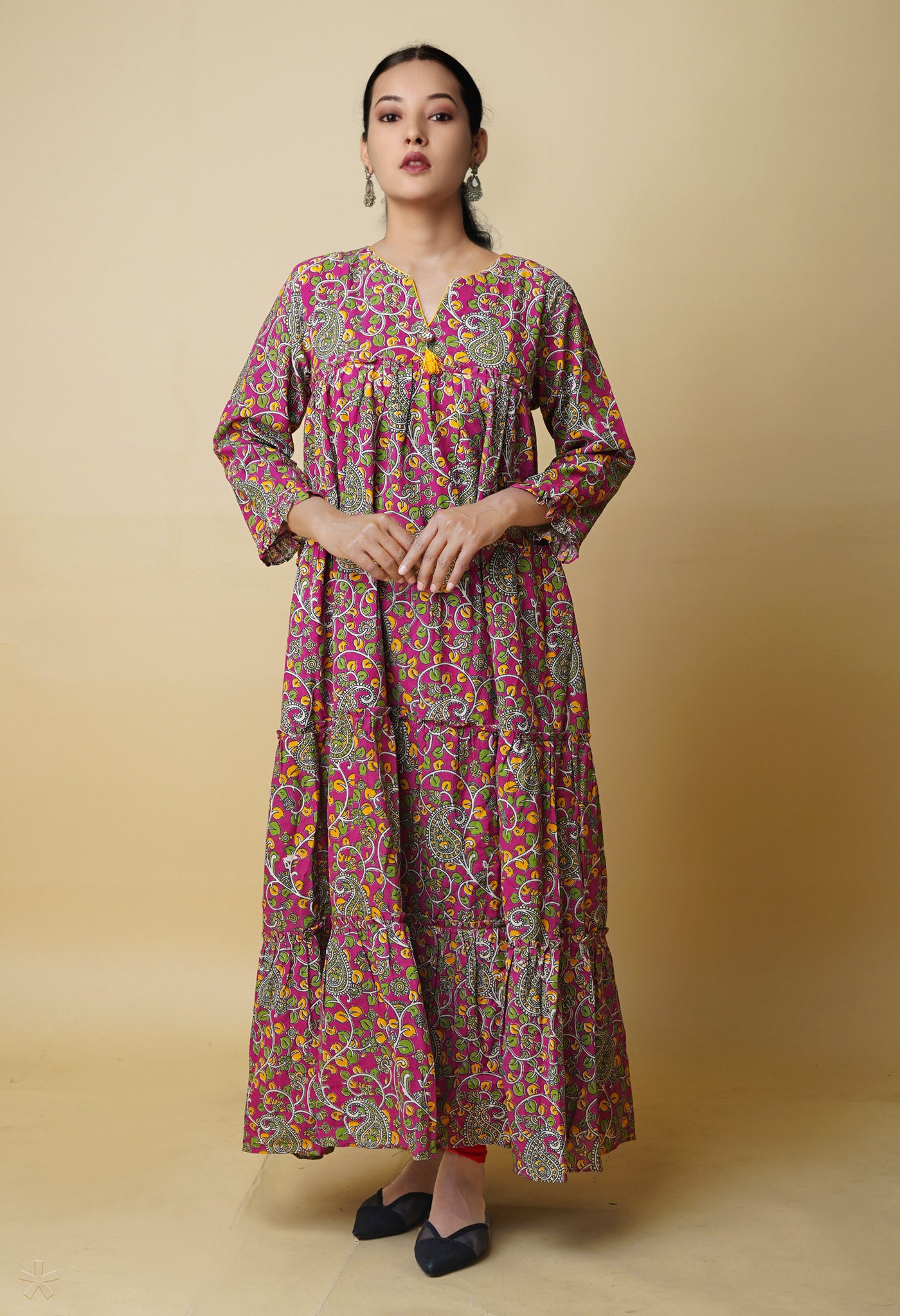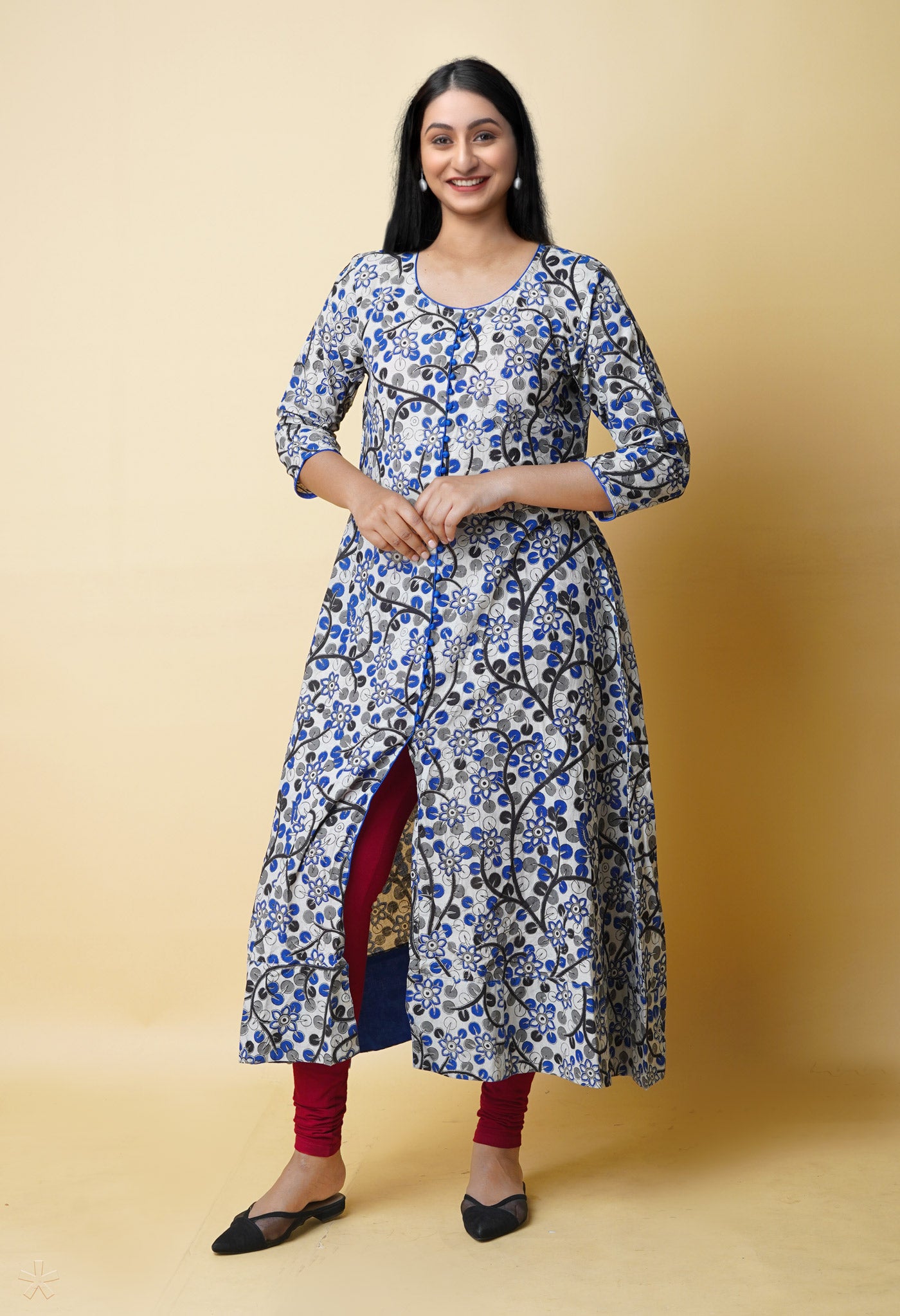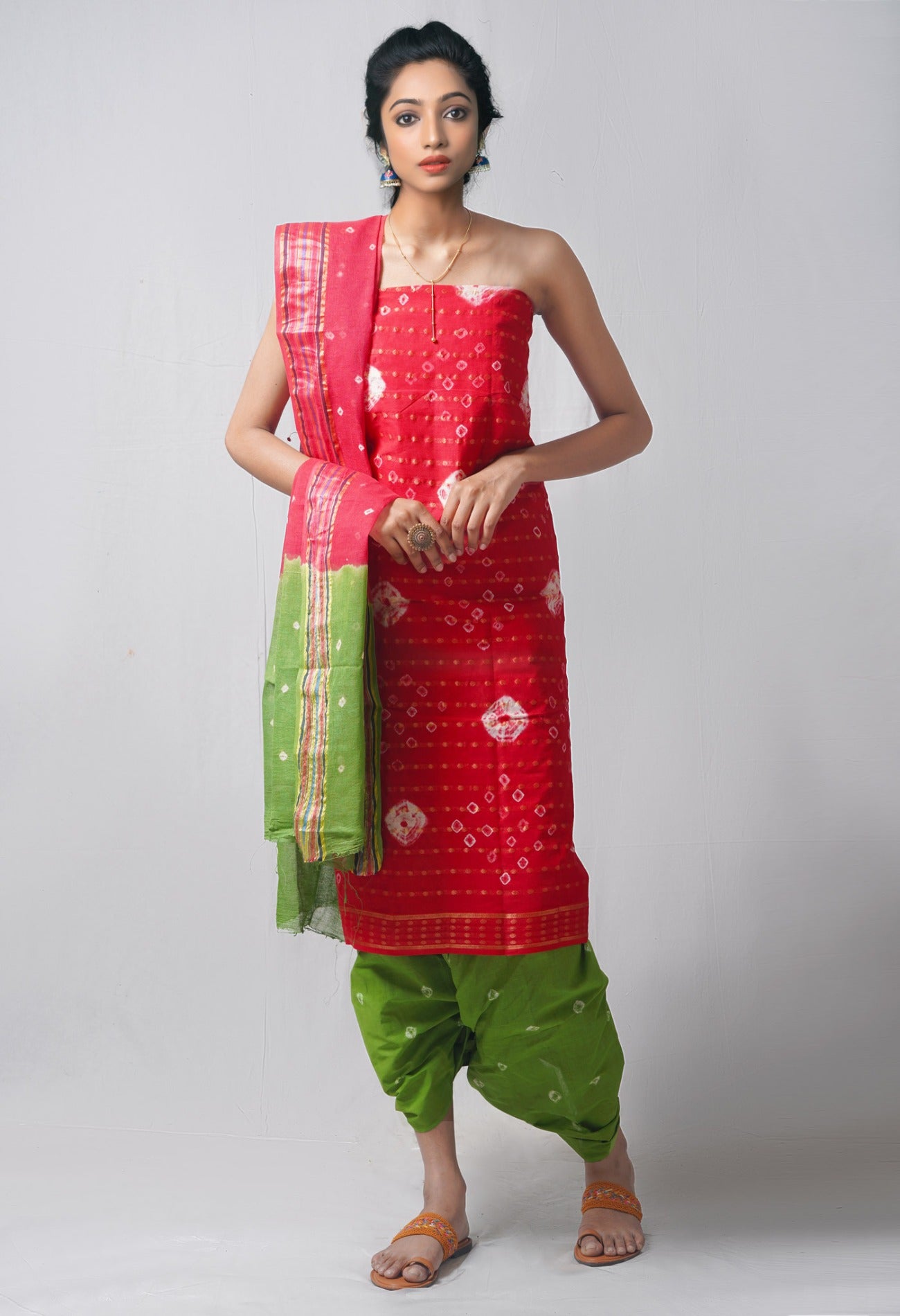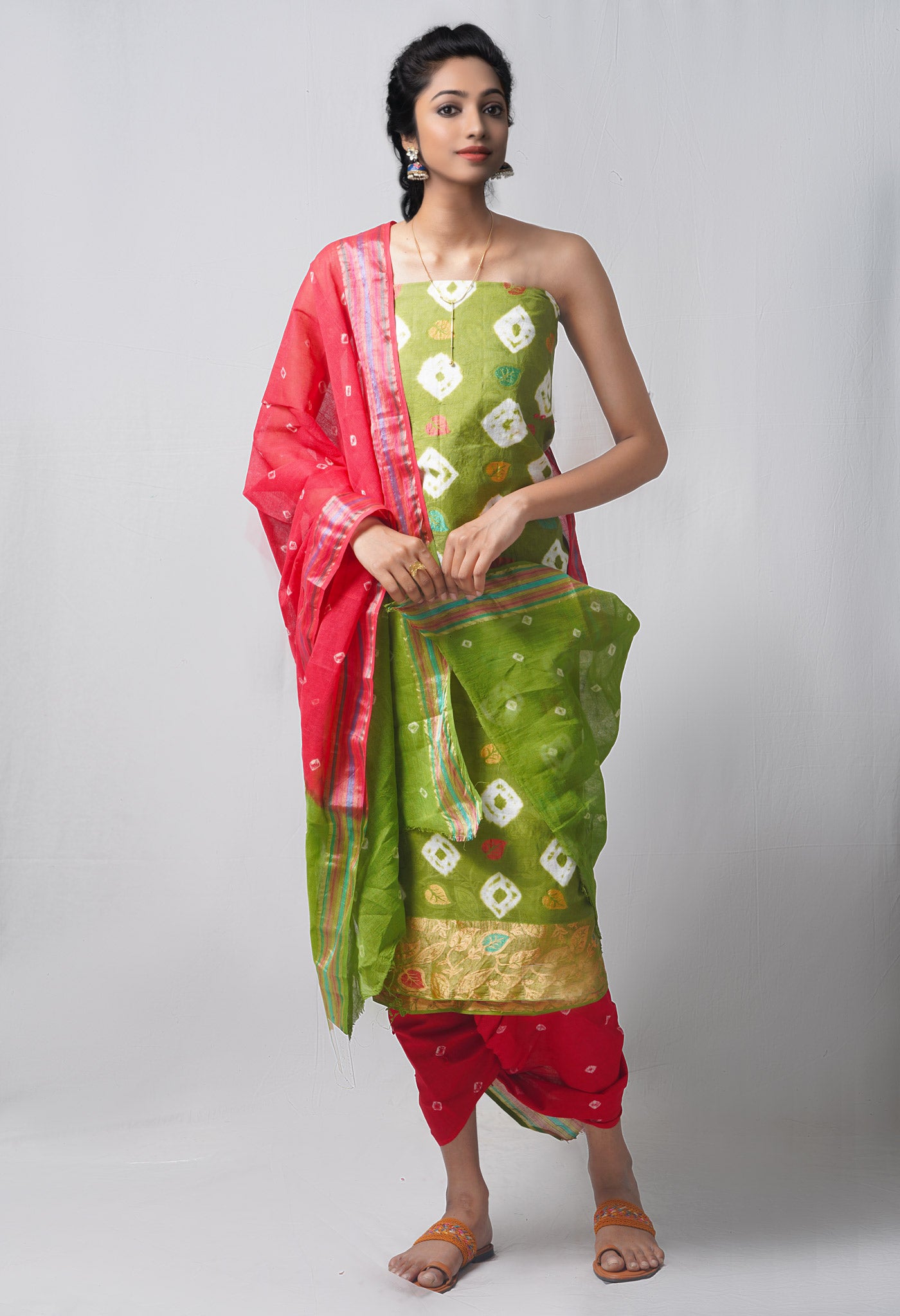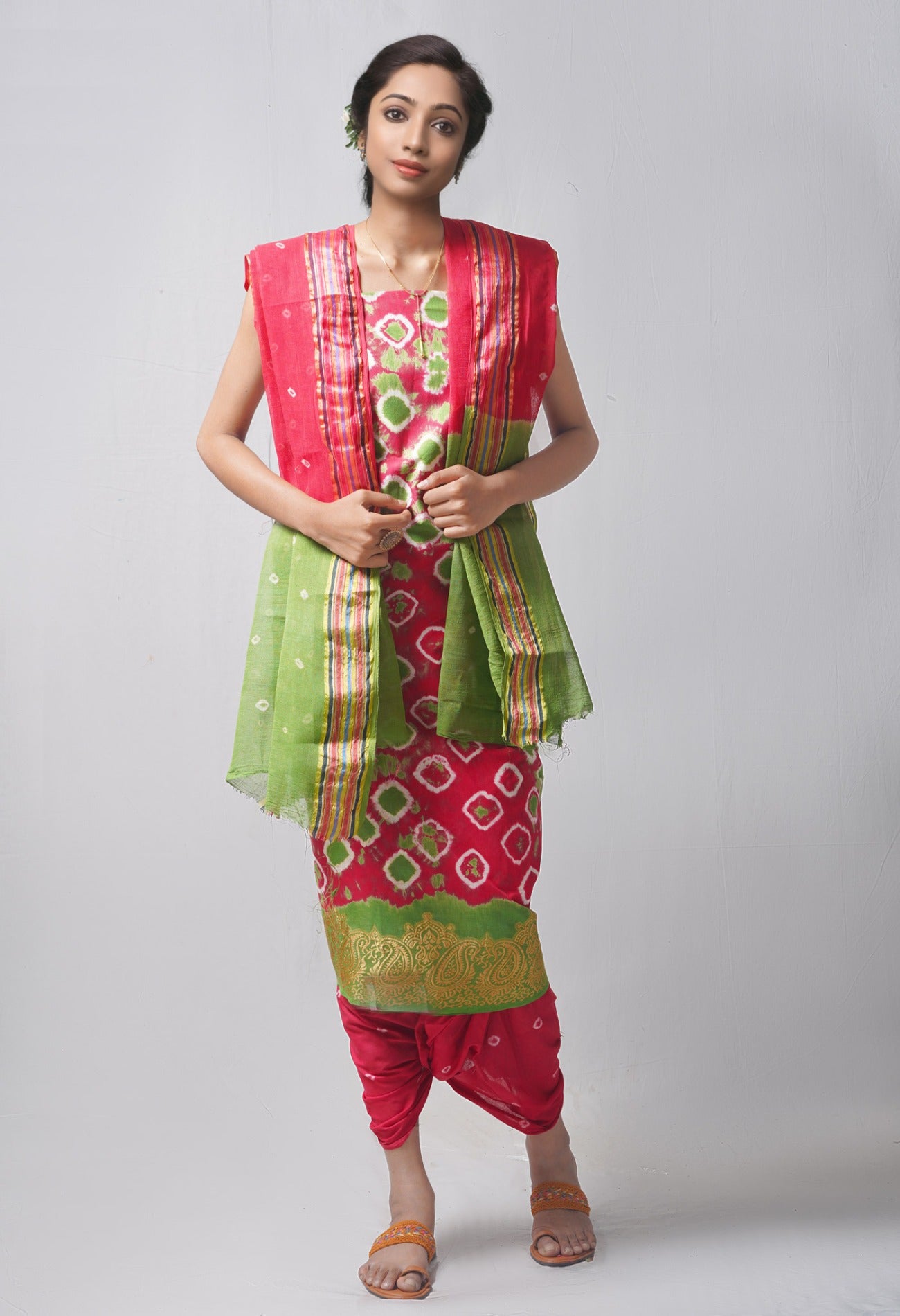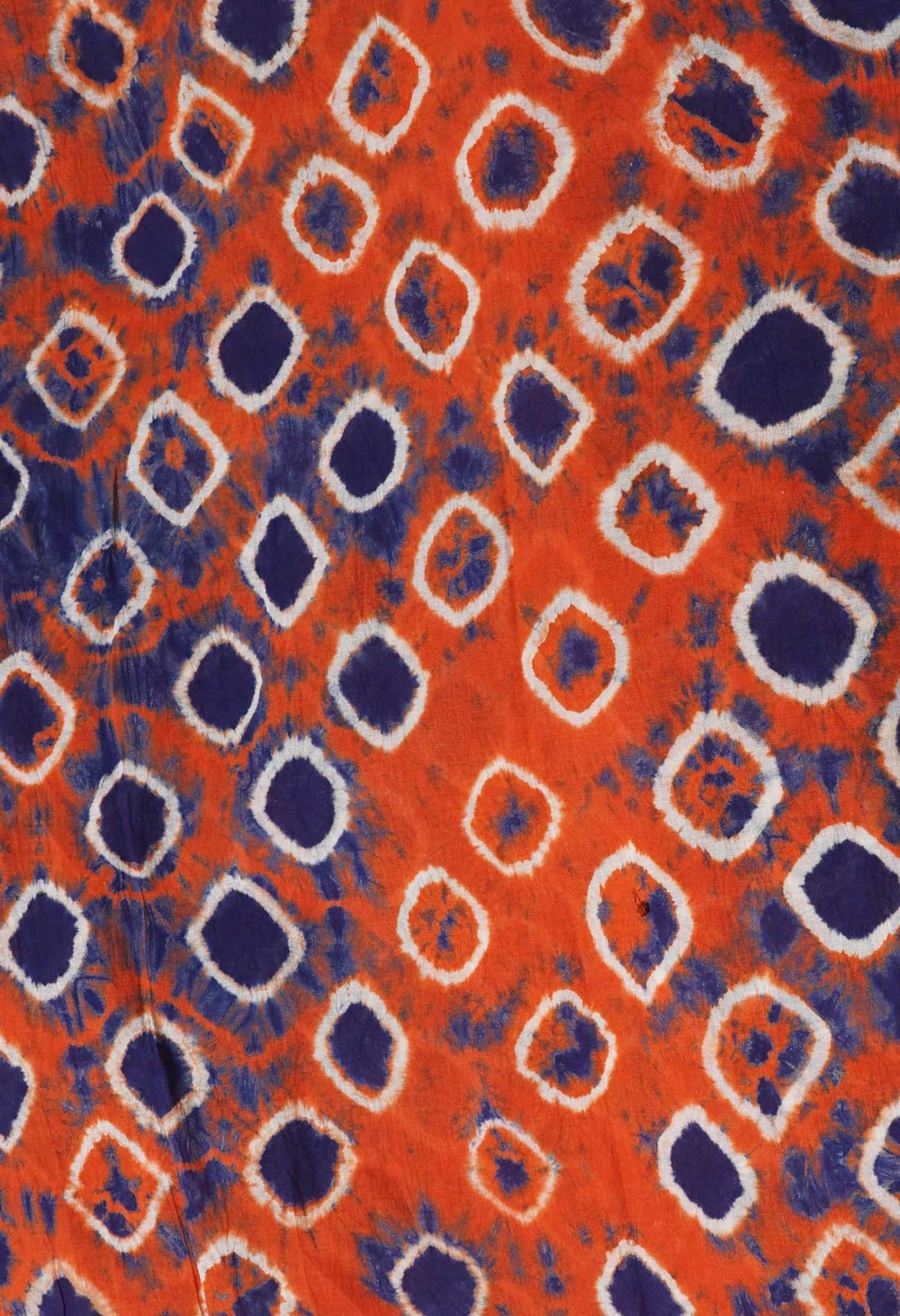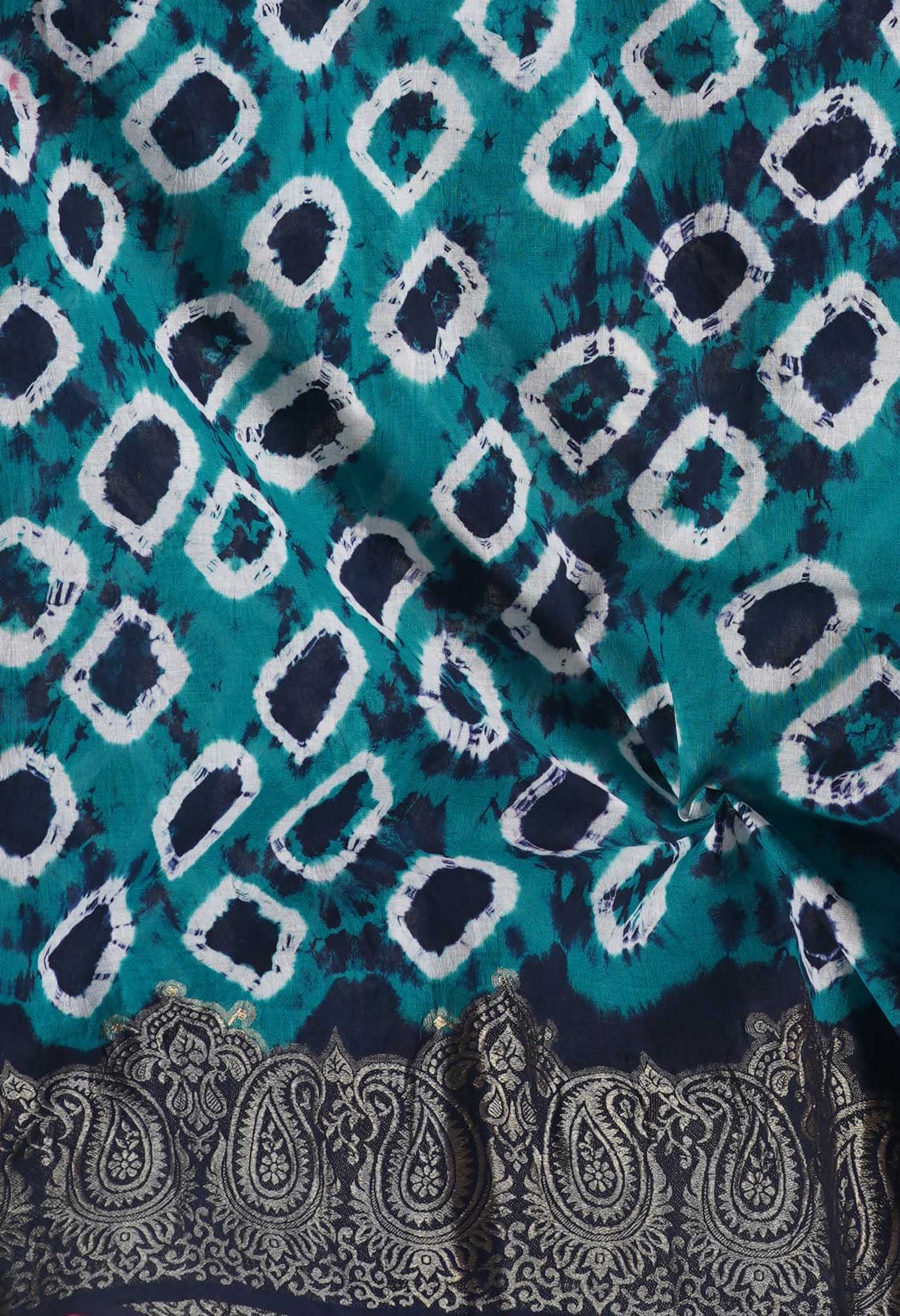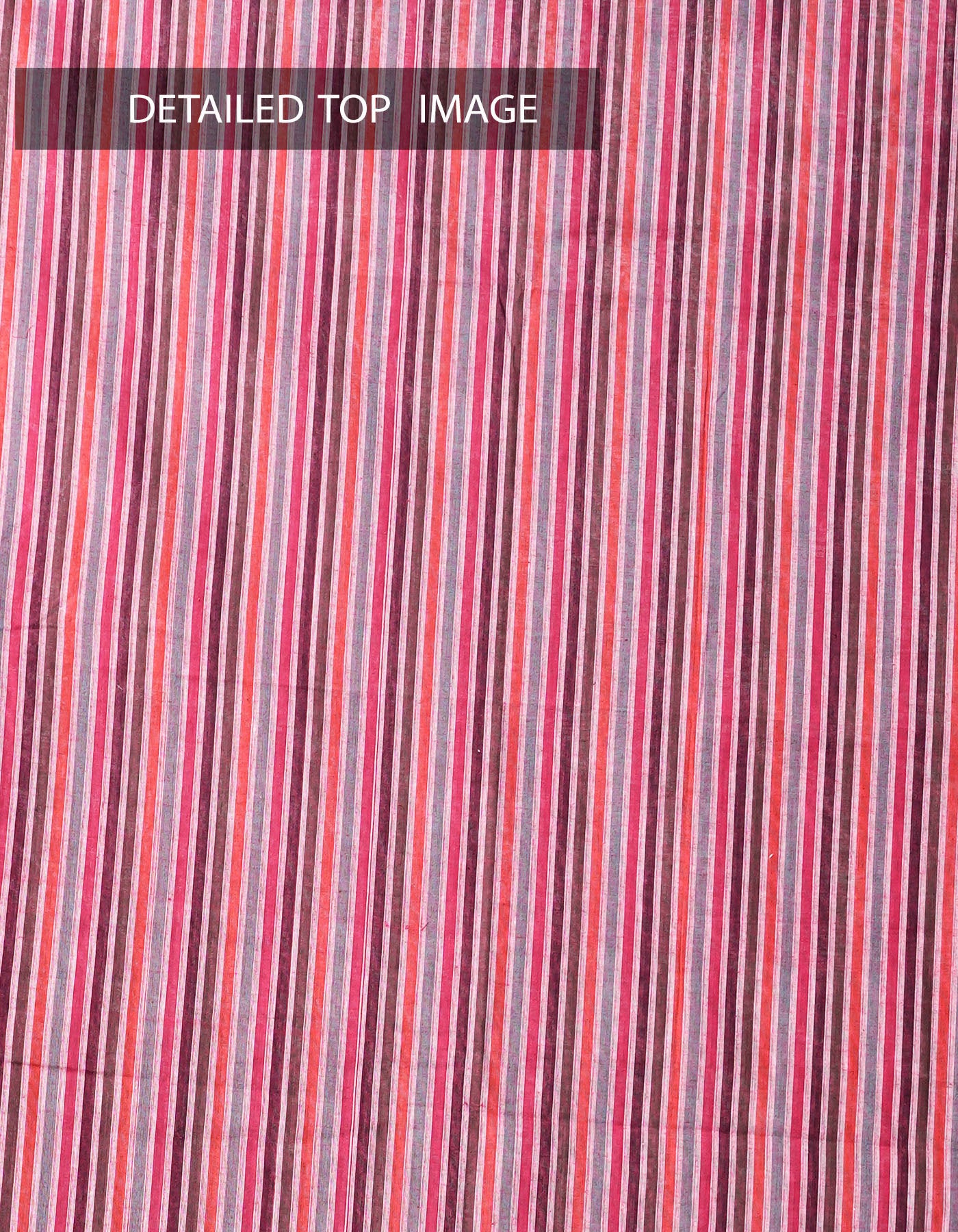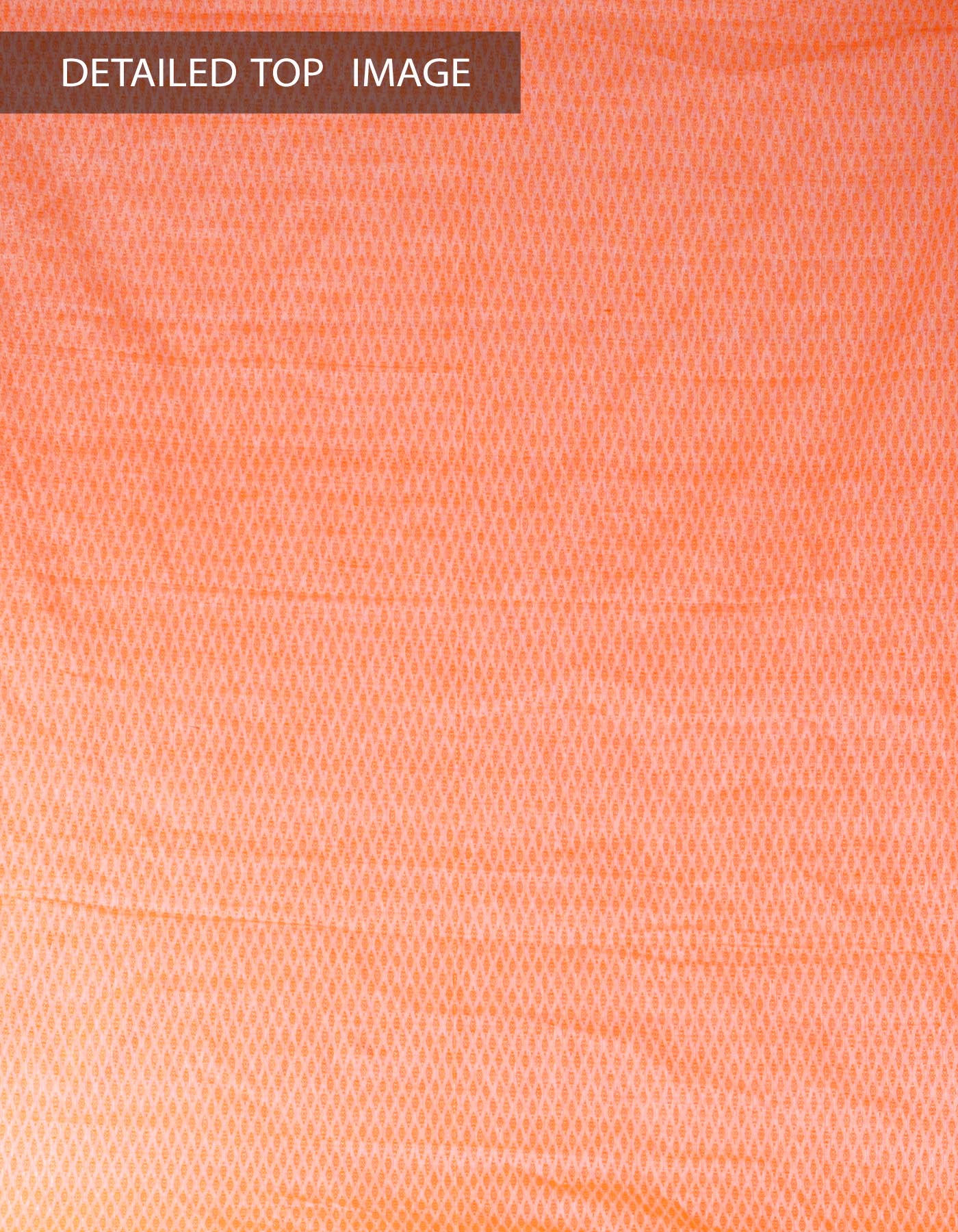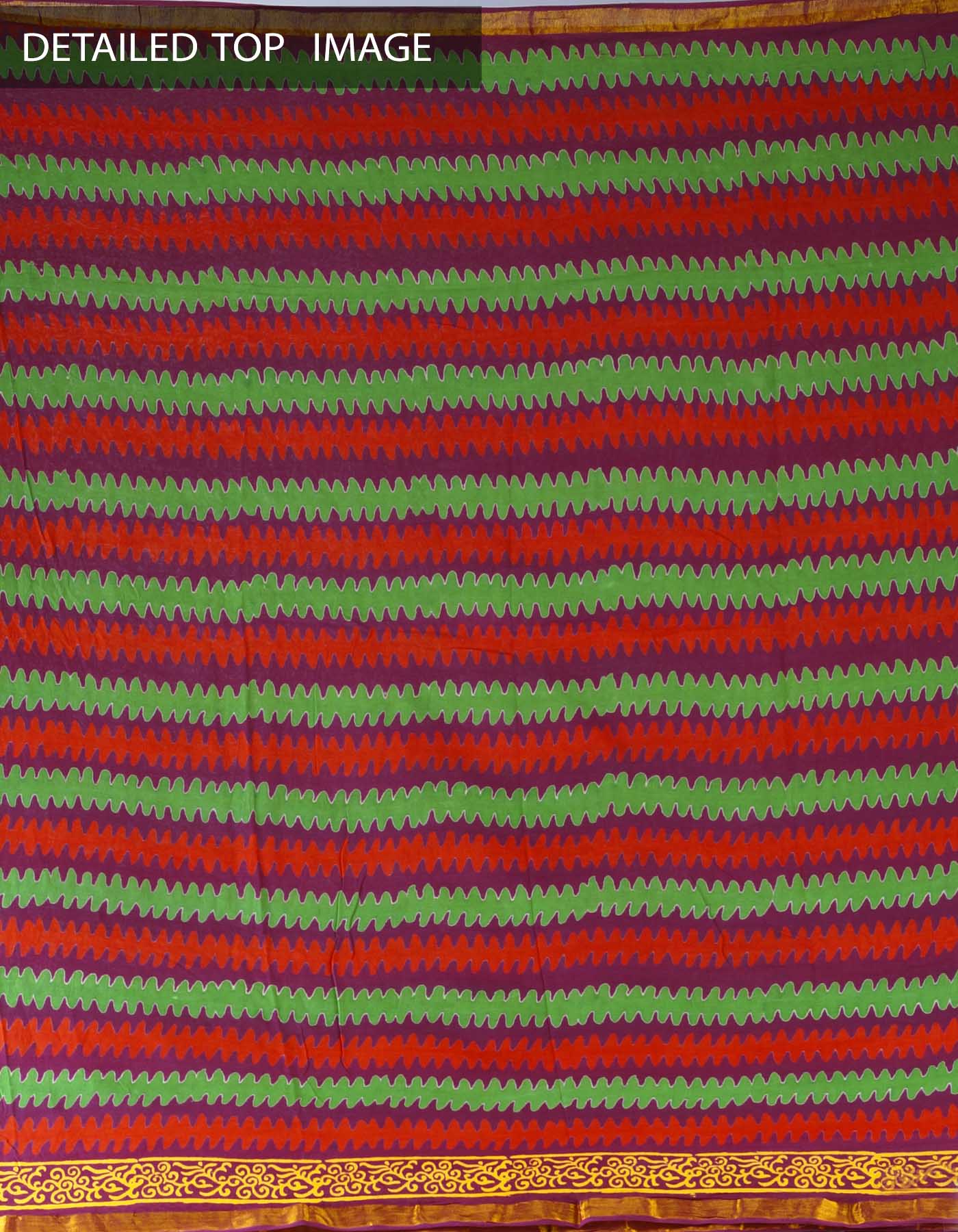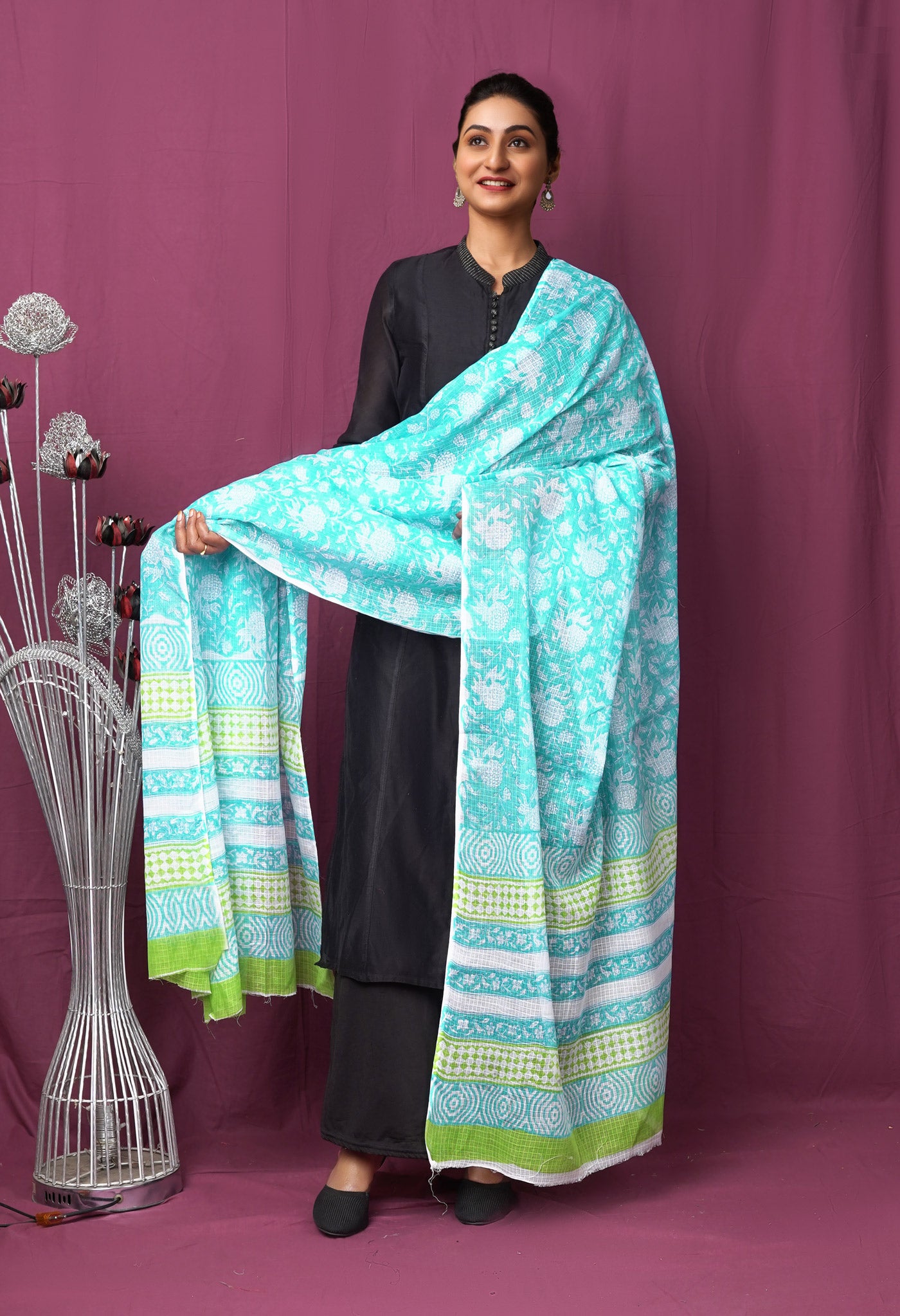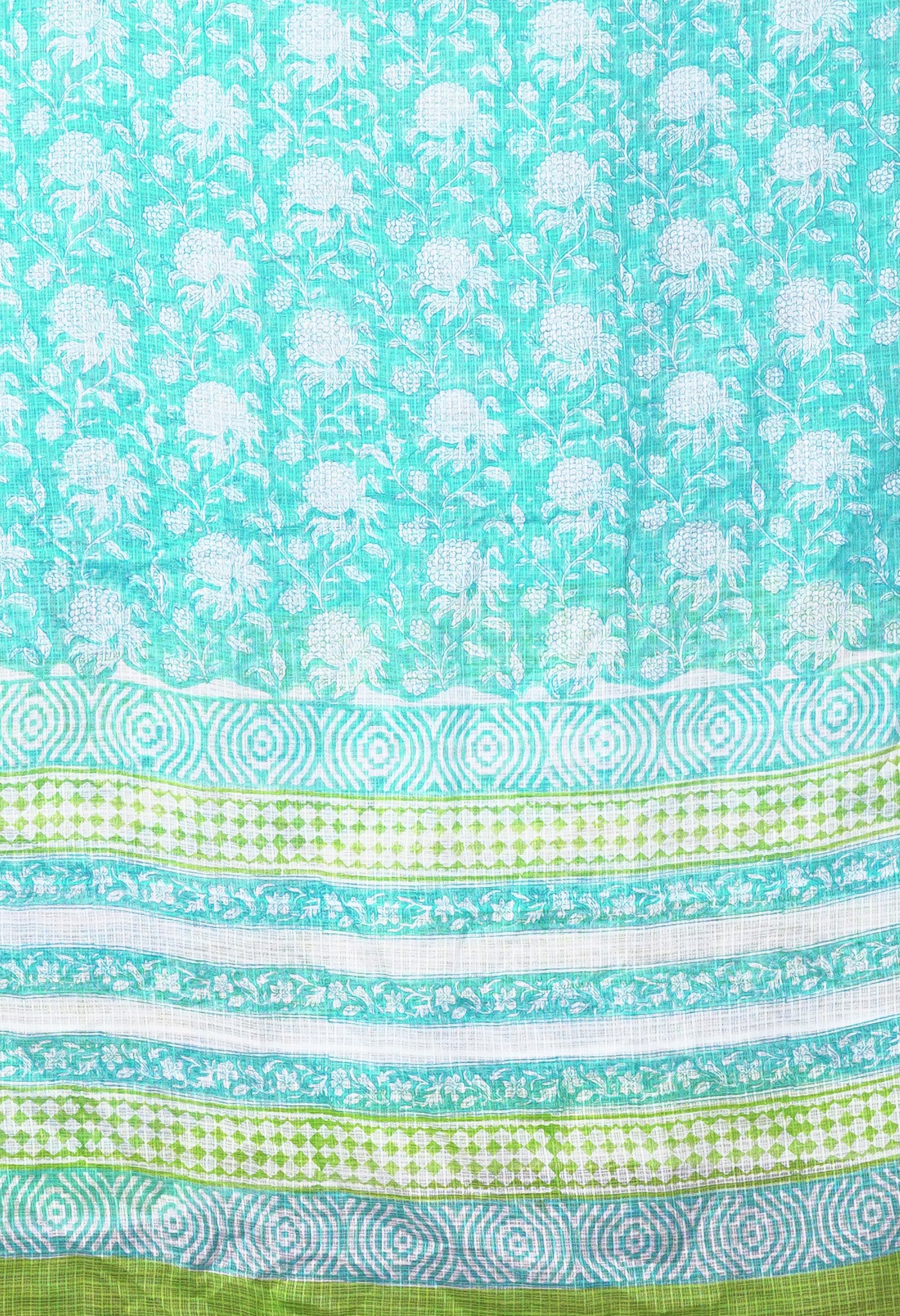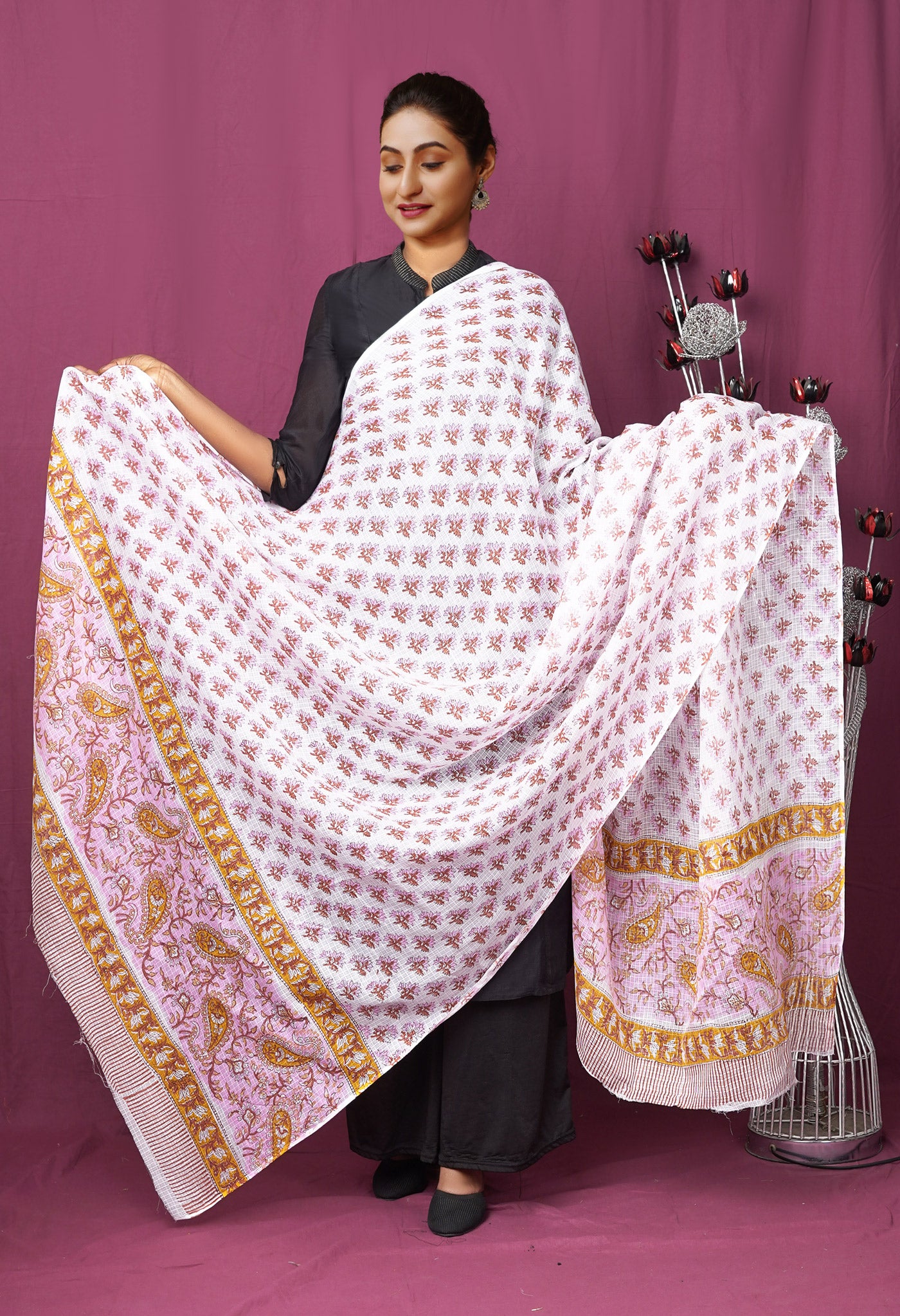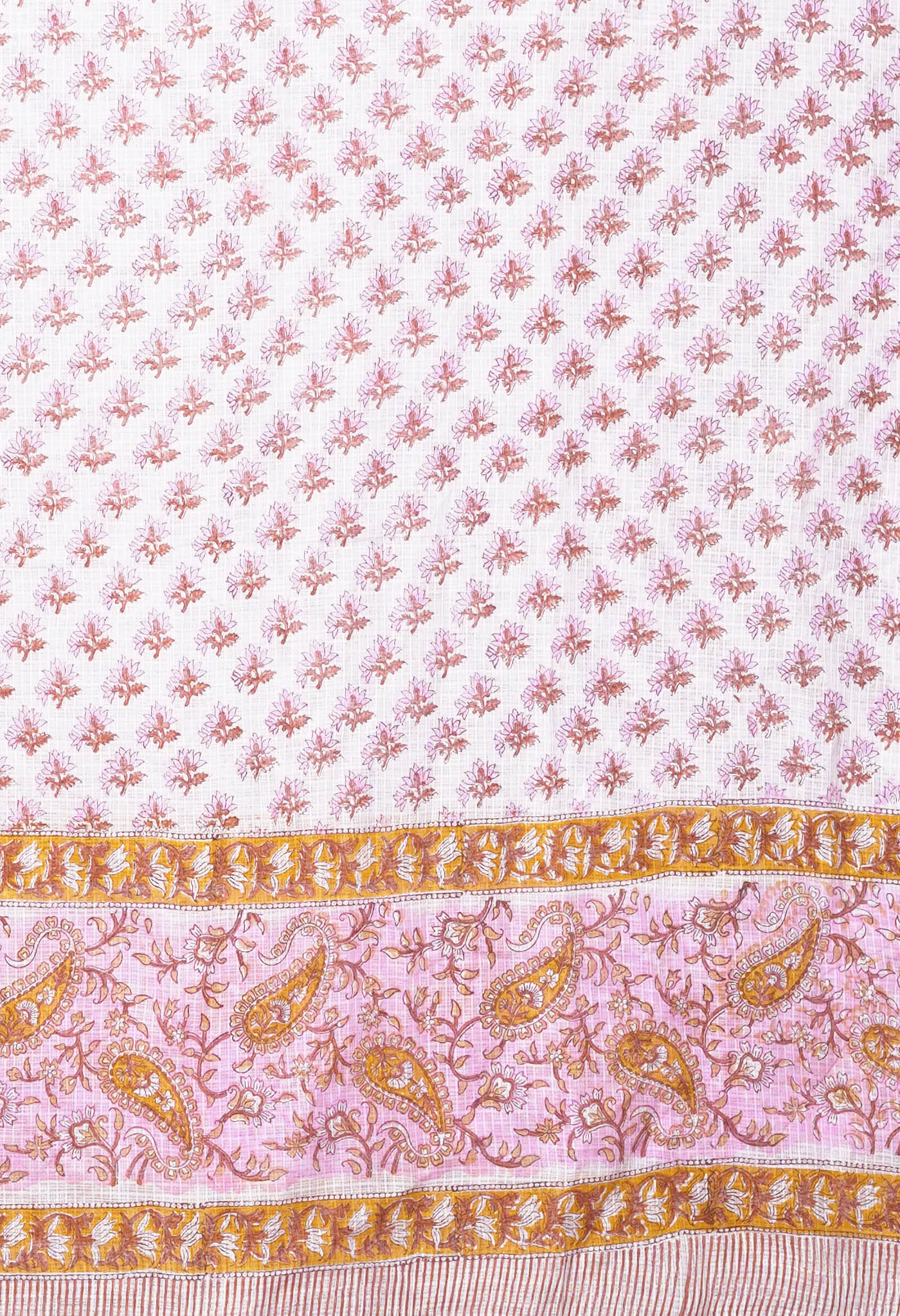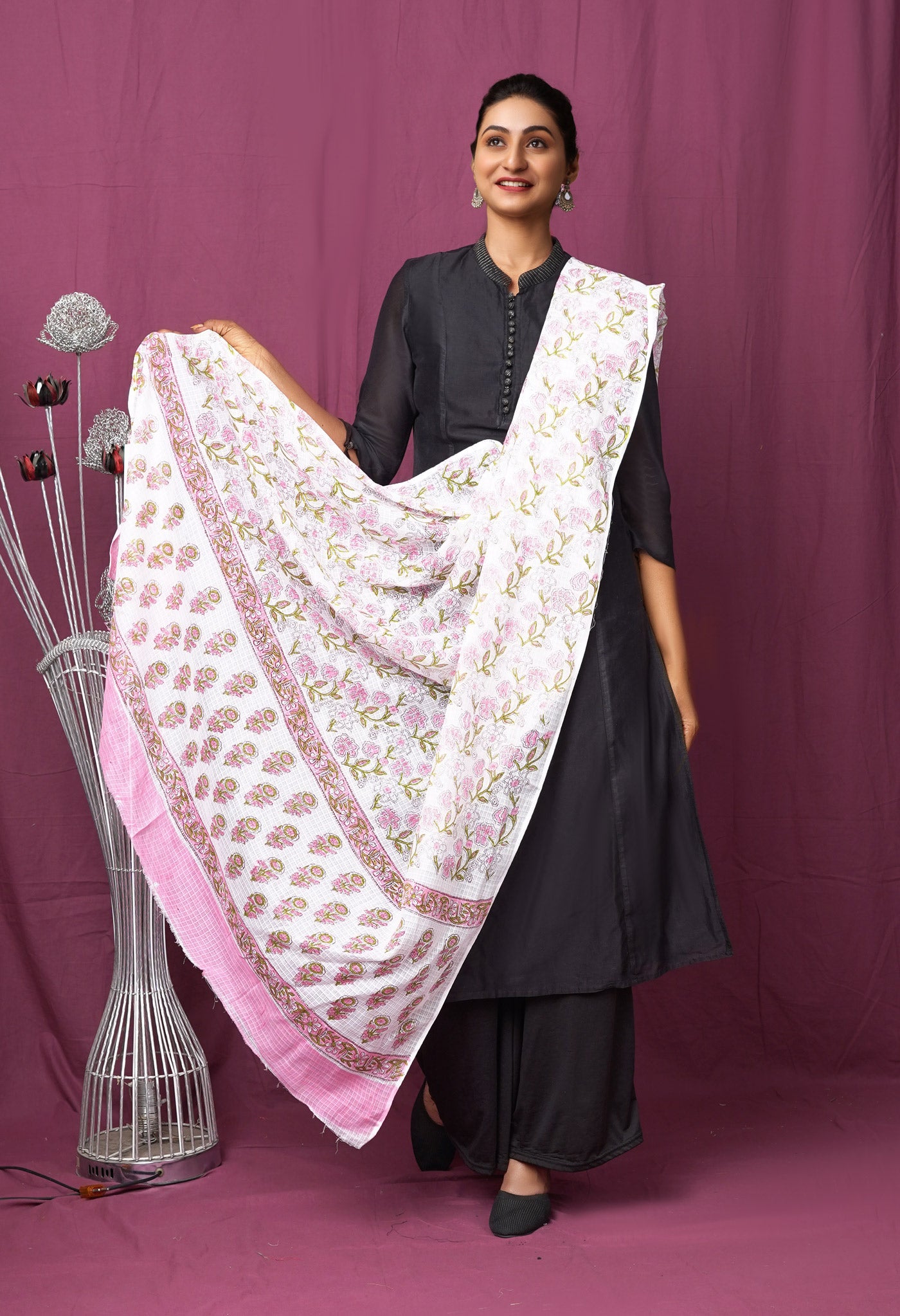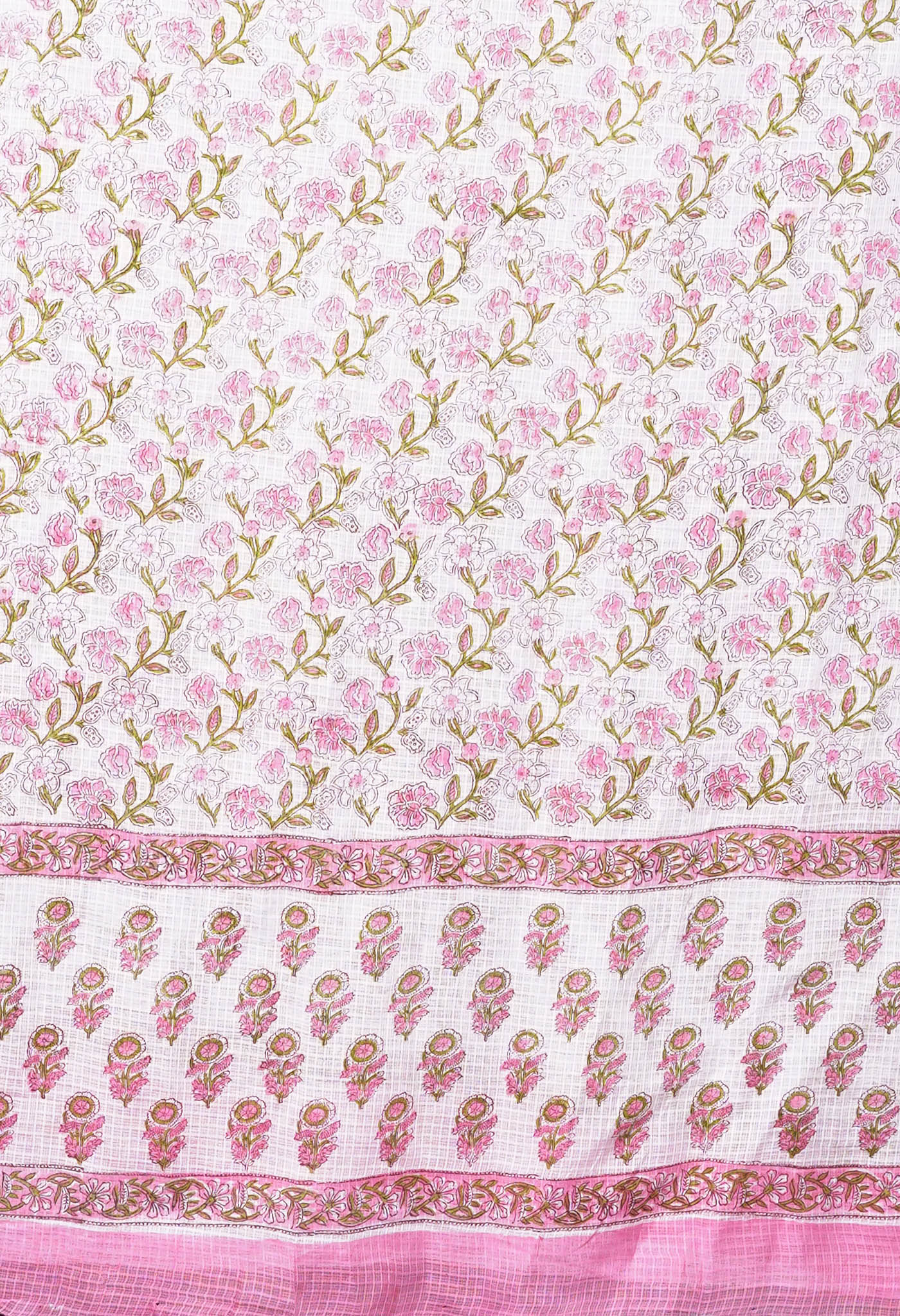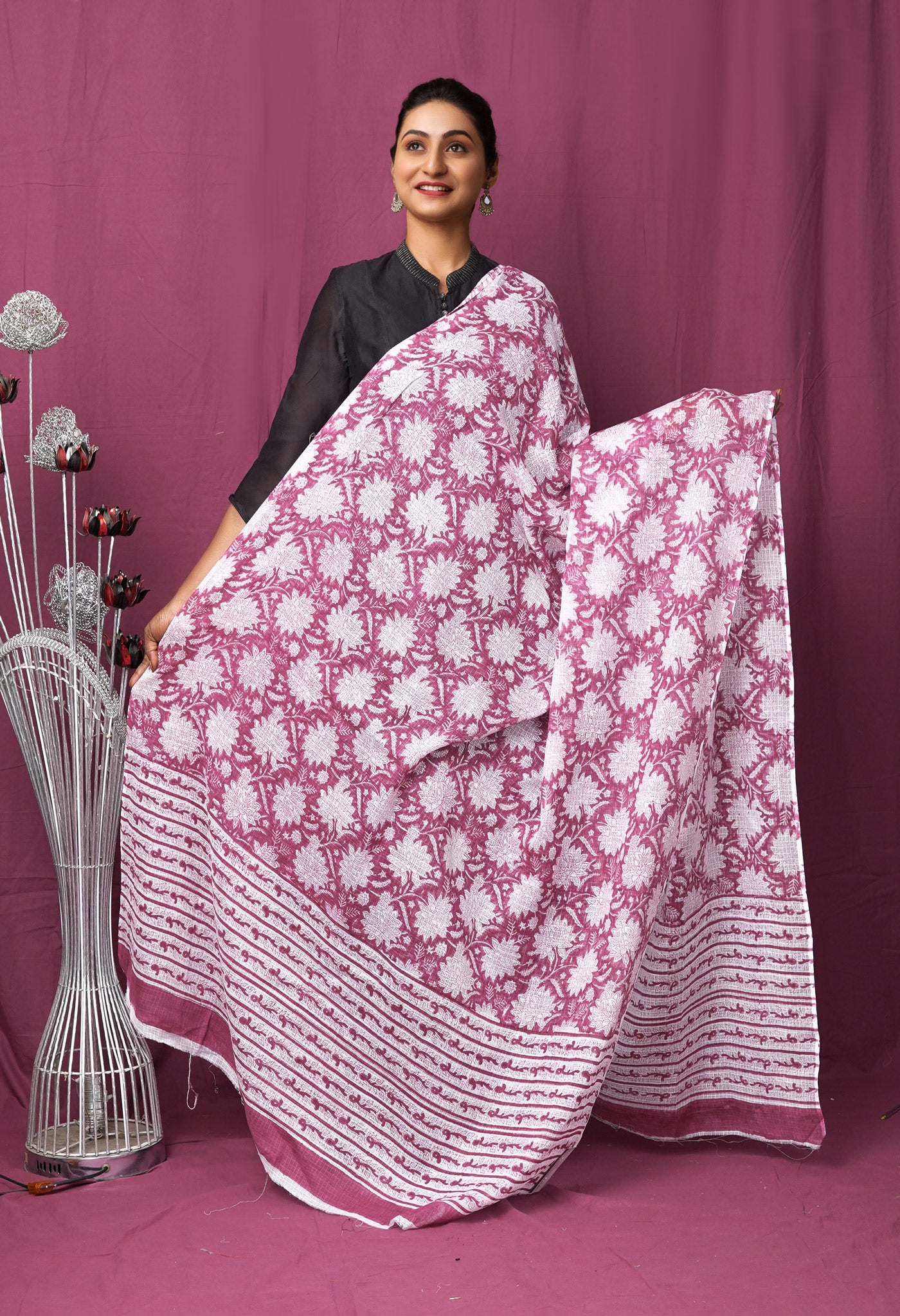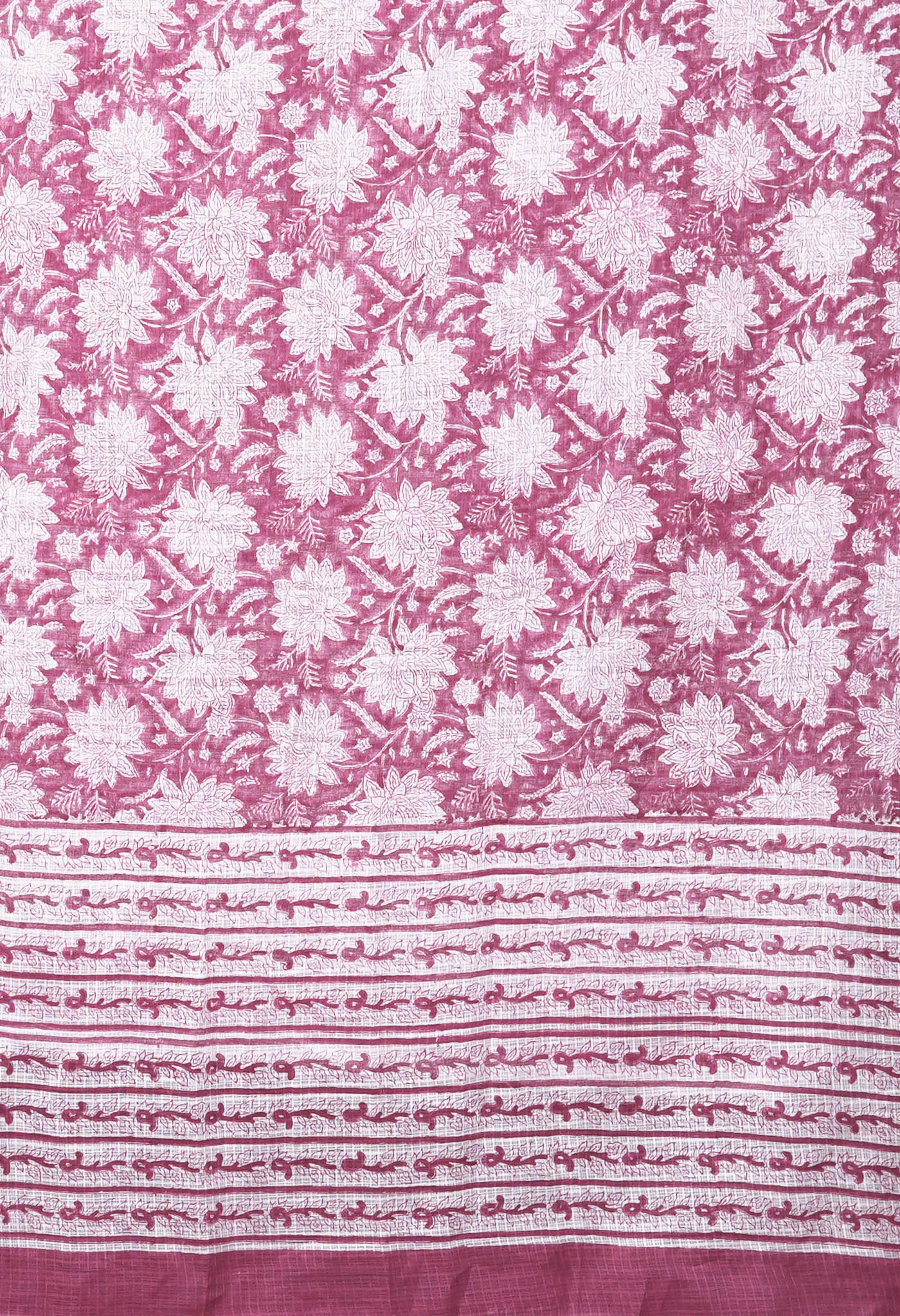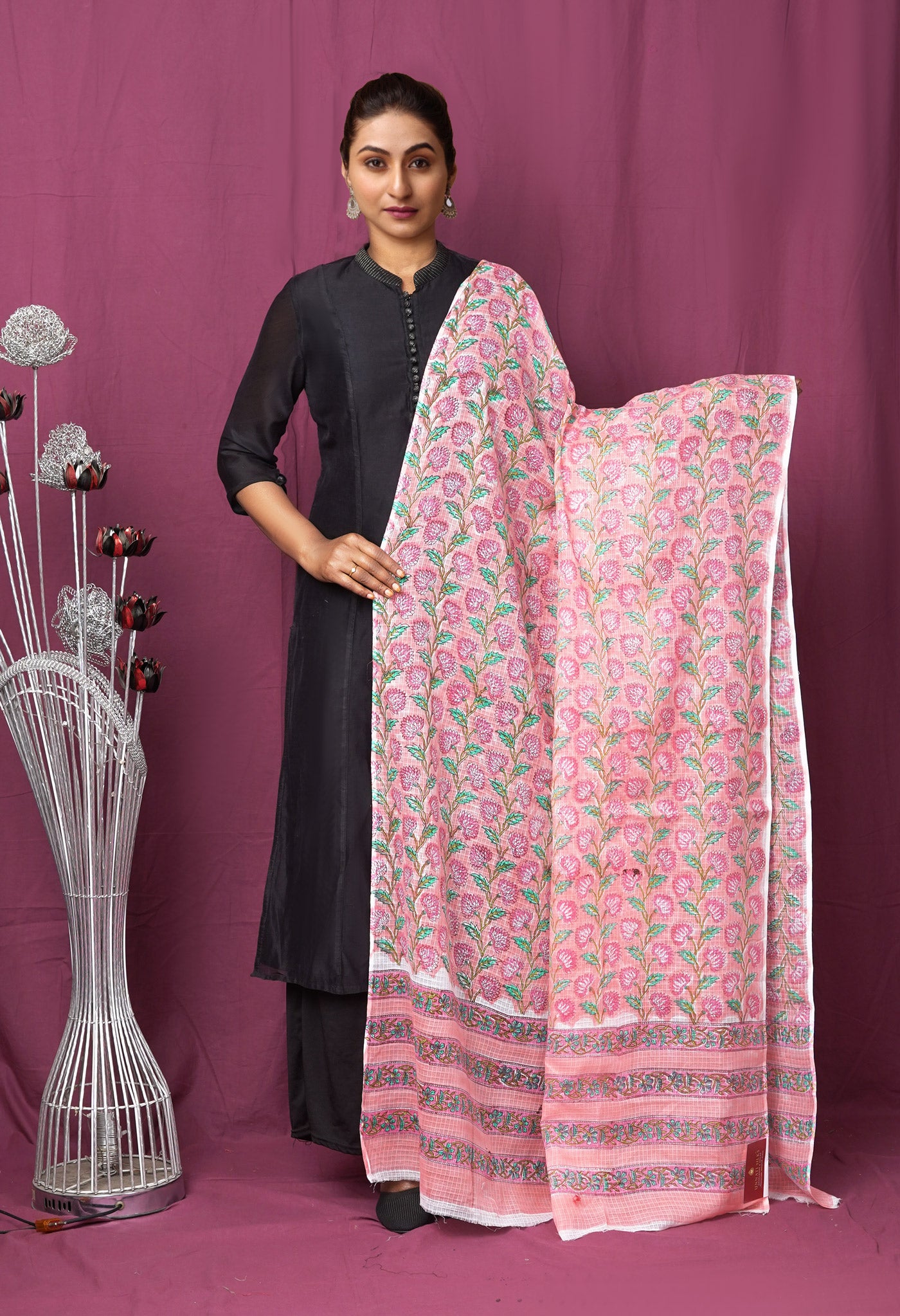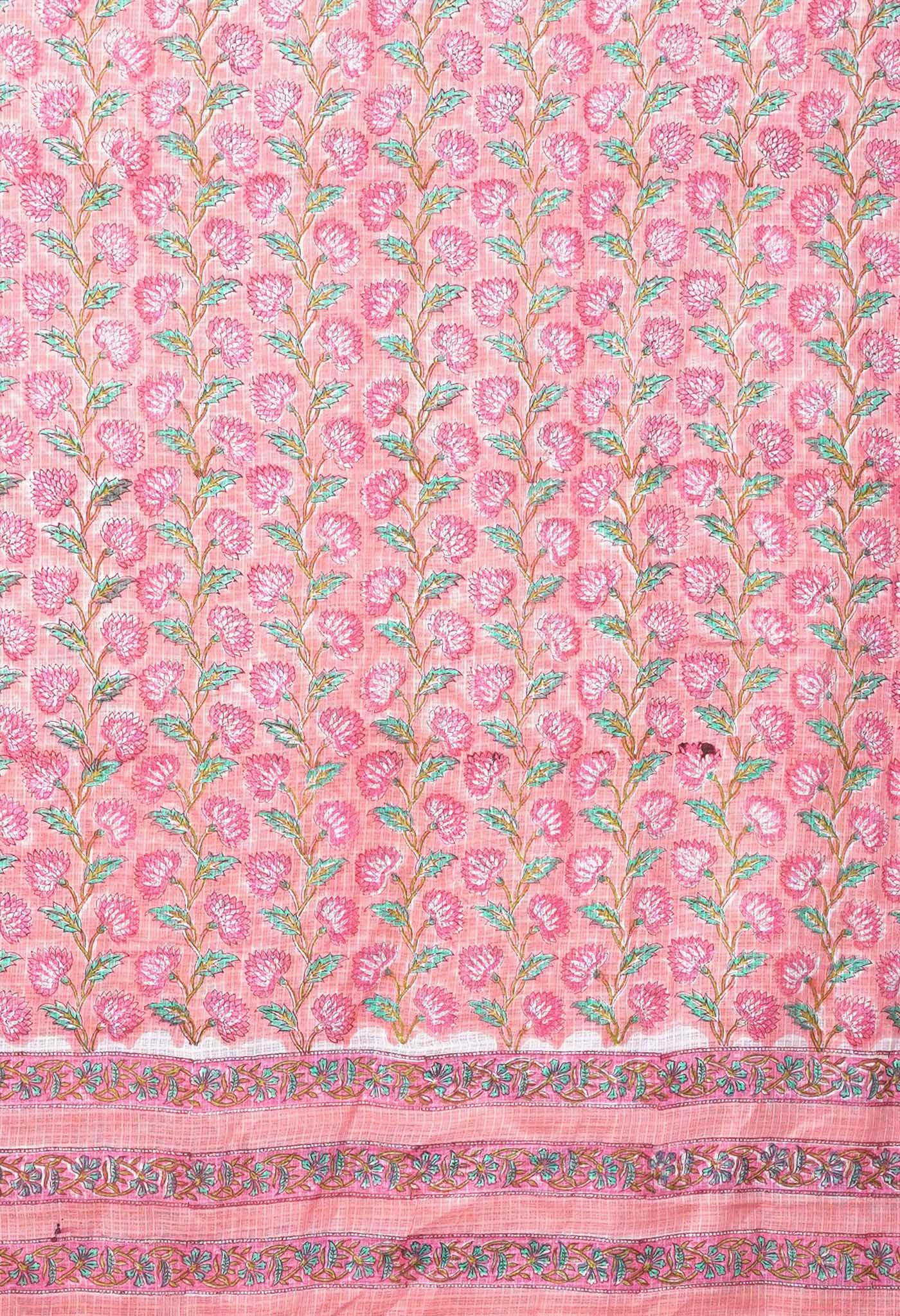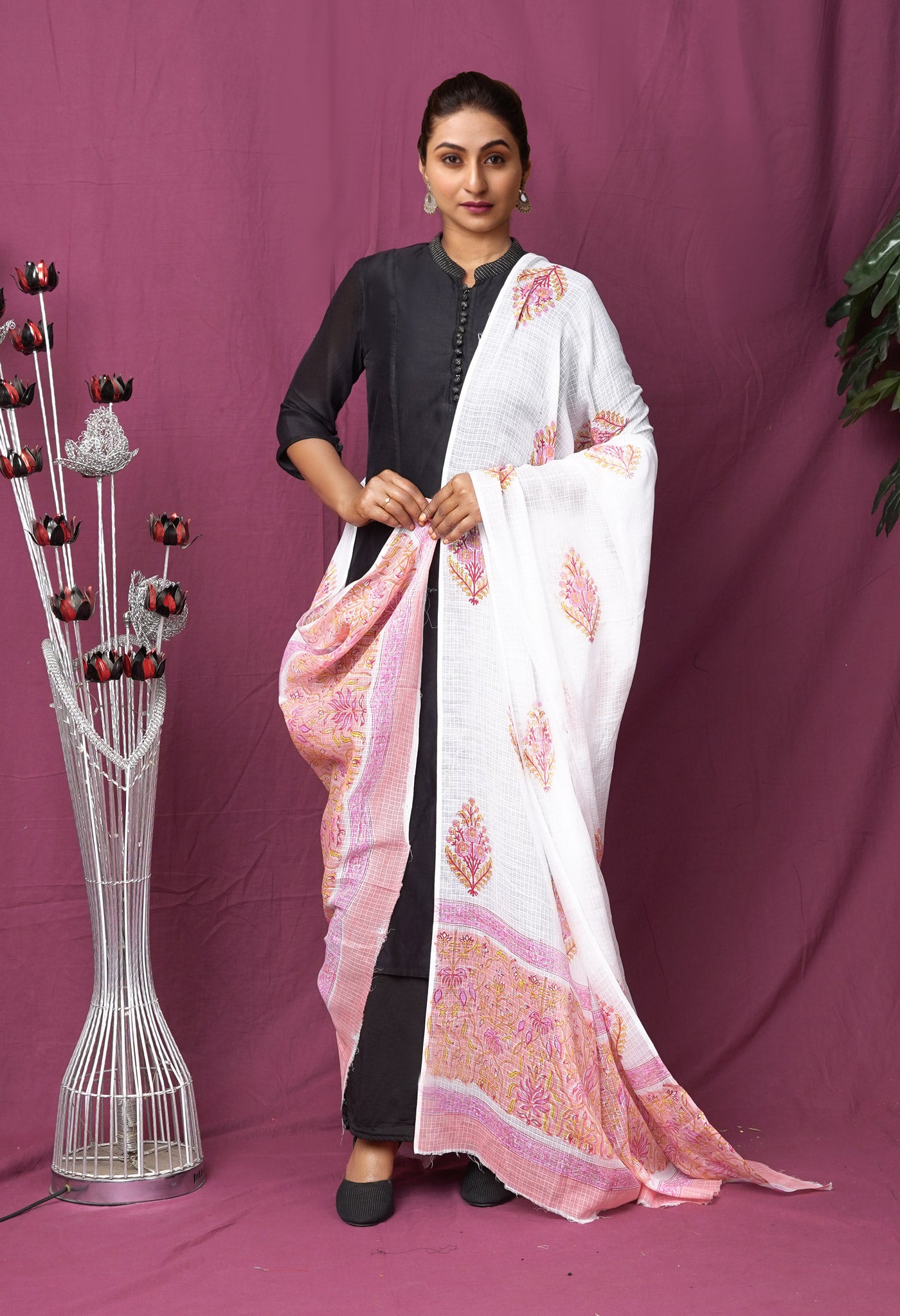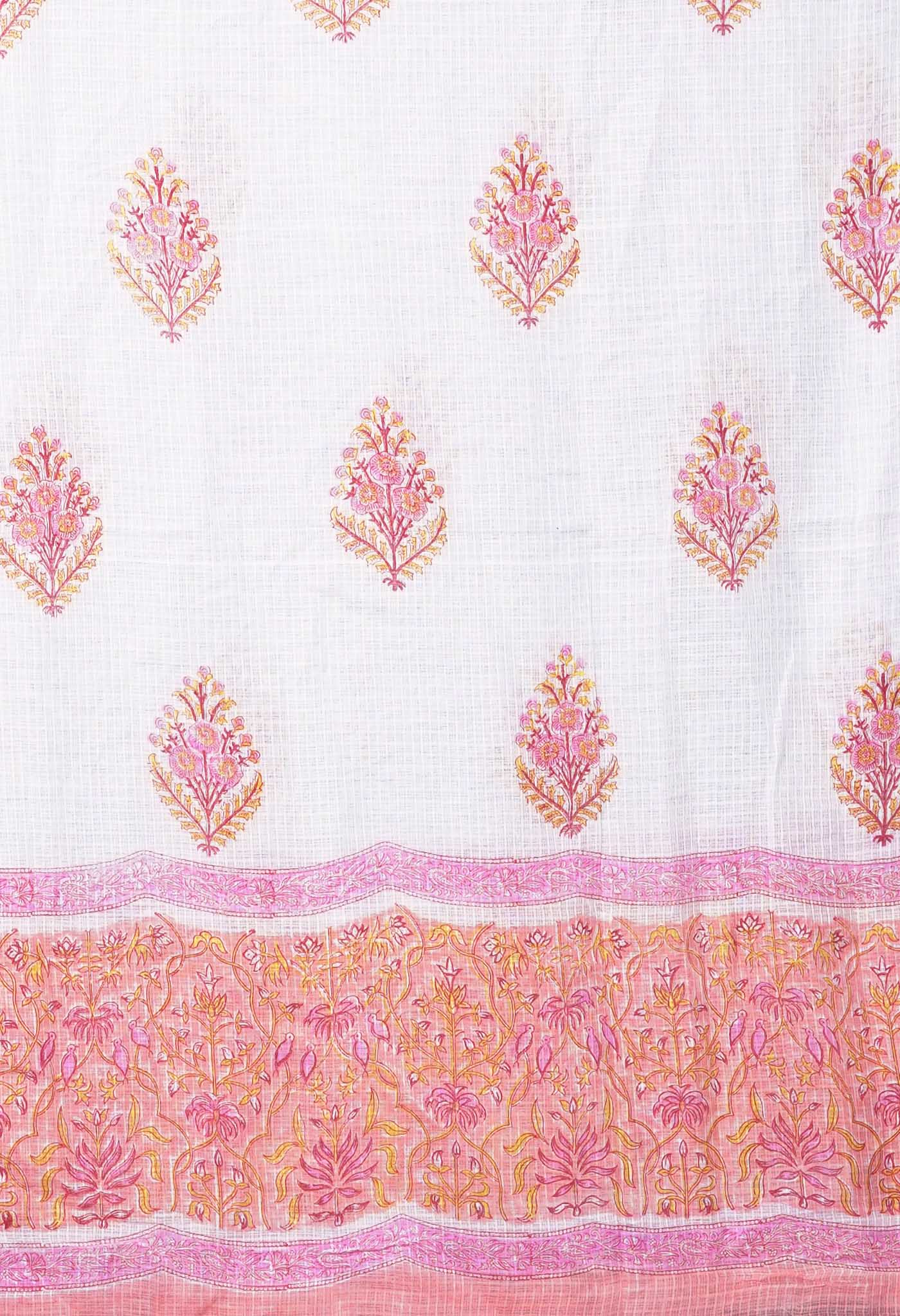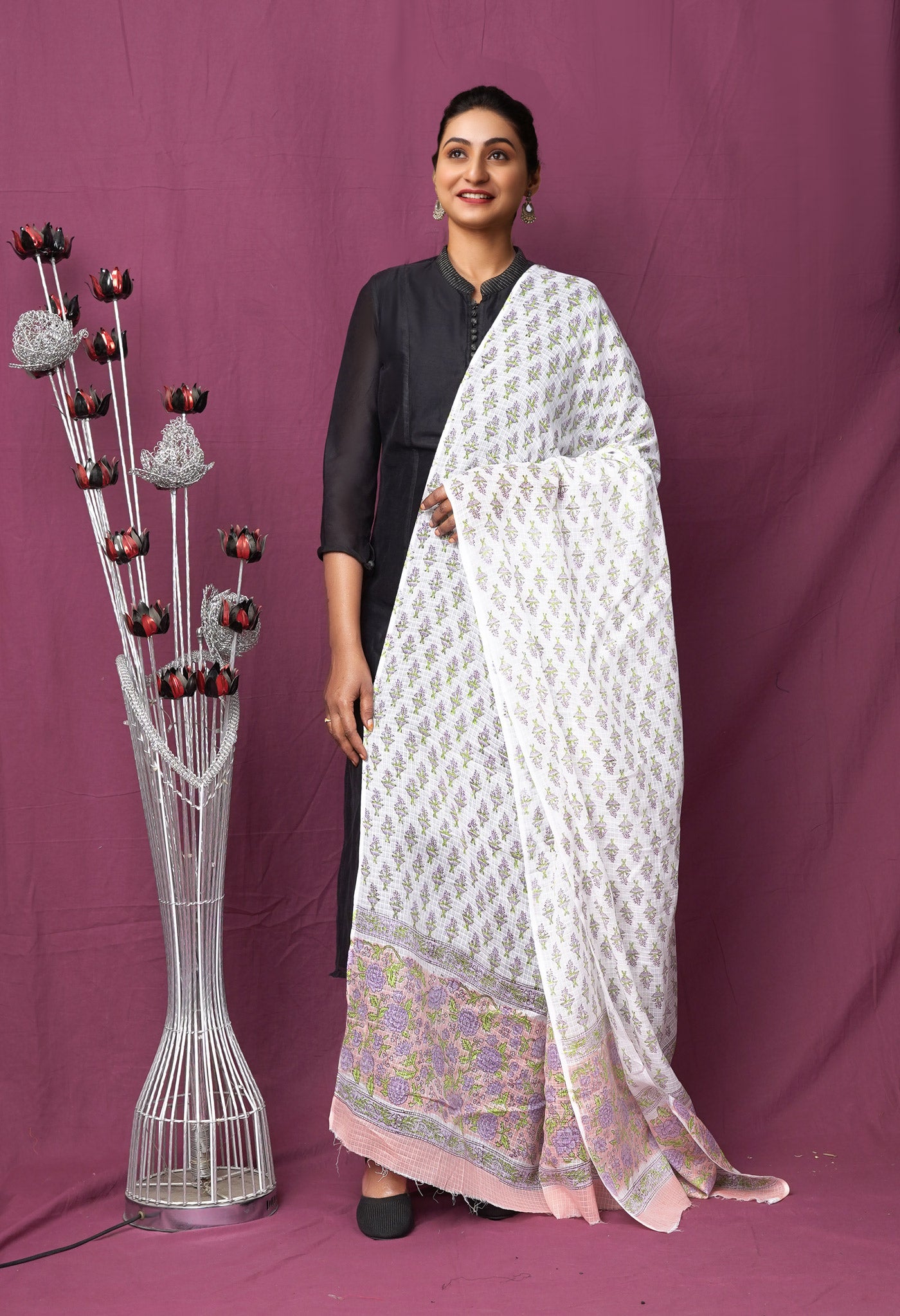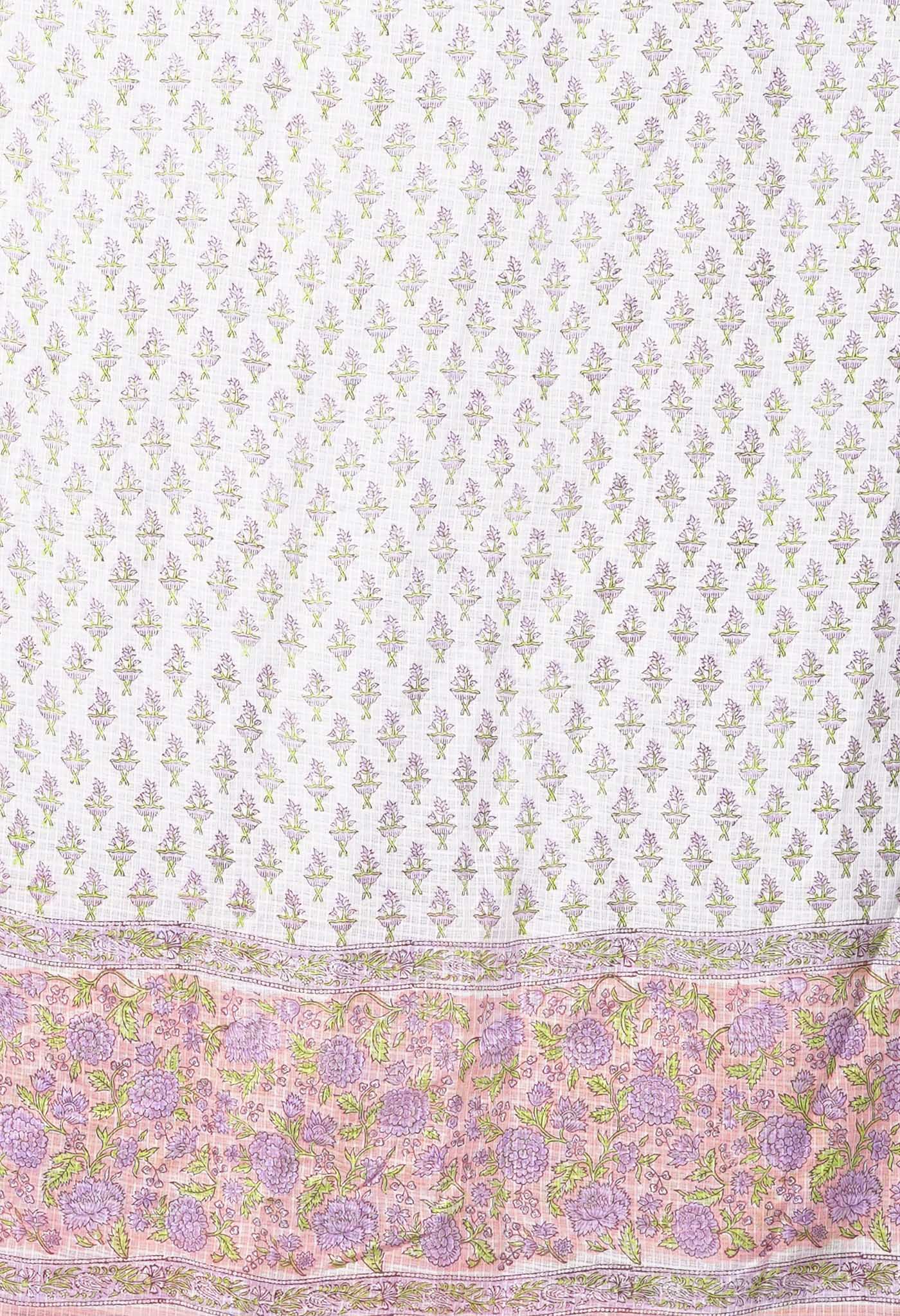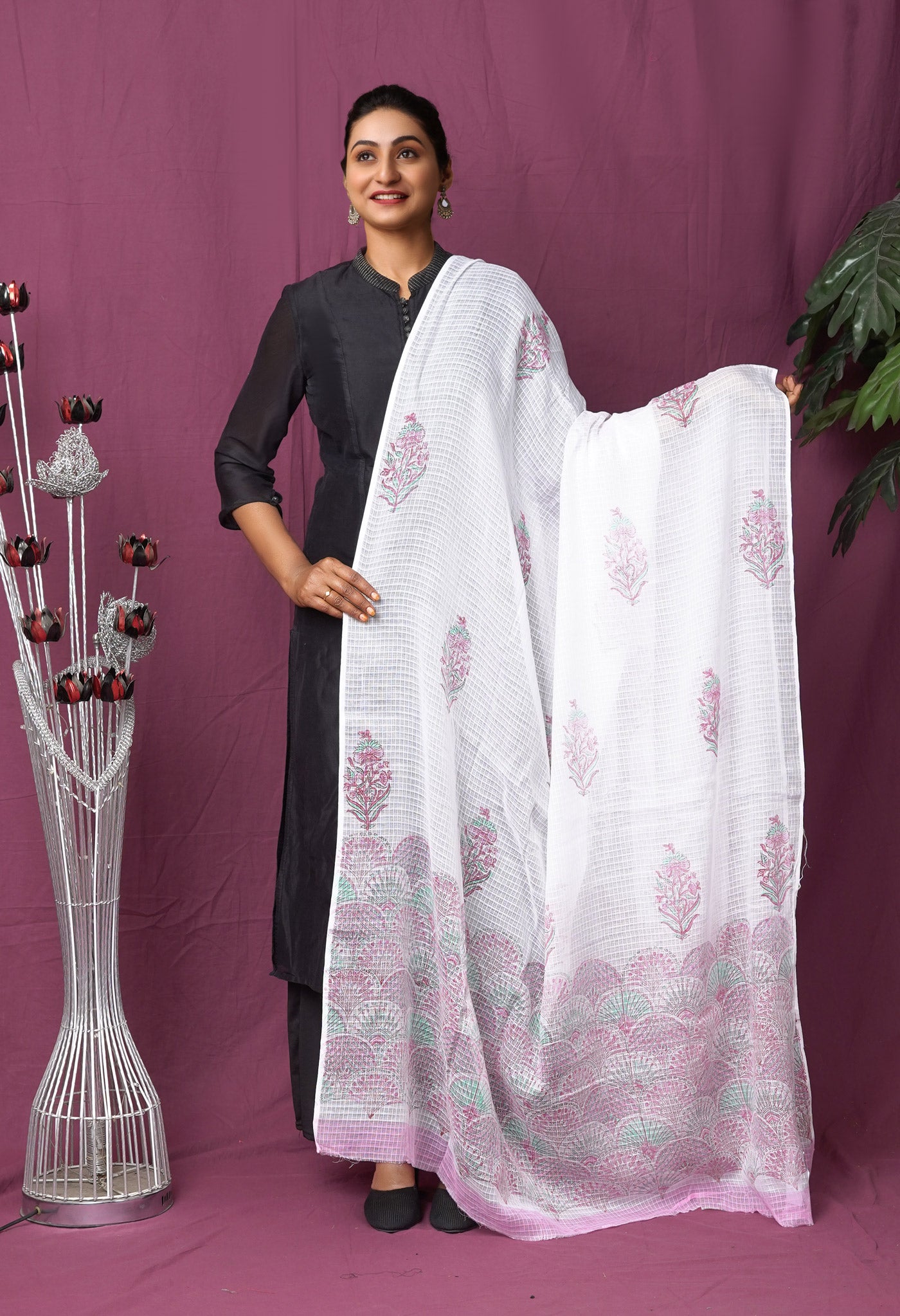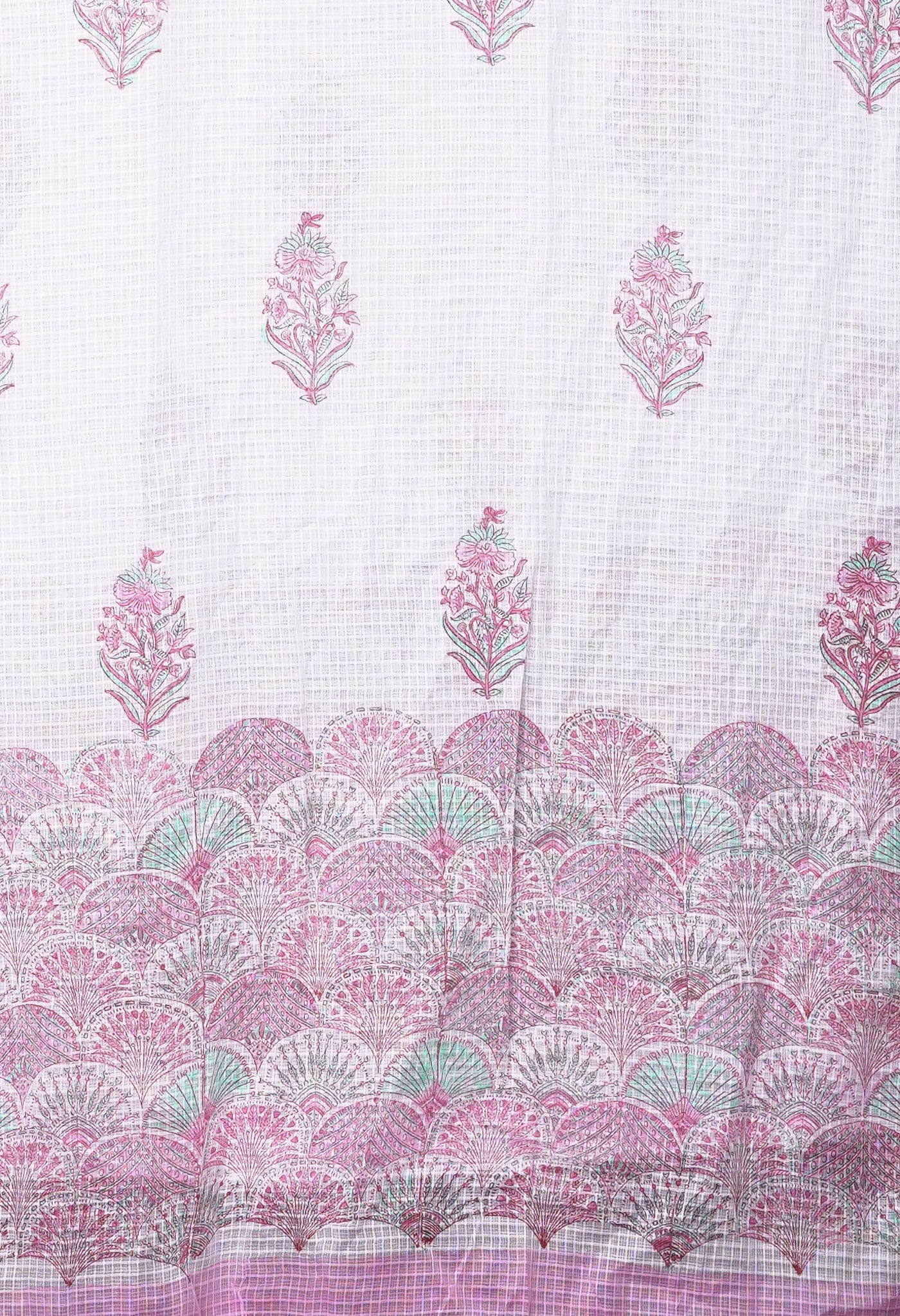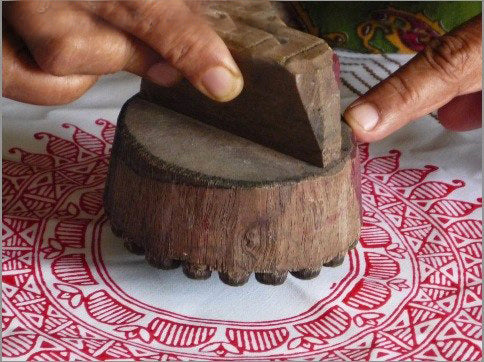
Block Printing - Getting those minute details onto fabrics

Have you ever wondered how those beautiful floral sketches or the finely detailed abstract prints in characteristic colours could be so sharp and distinctly produced on the traditional sarees? Not the slightest hint of colour spreading onto adjoining areas and the dot distinctively reproduced as a dot and not turning into a large bindi.
Block Printing – a fine art!
It is the traditional art of hand block printing on fabrics that once originated from Rajasthan, India, that has now turned its attention to the most sought-after and best displayed canvas – the Indian saree. Detailed yet distinctive, colourful but sharply made out, free hand lines that are finely sketched; block printing has revoutionized the concept of fine prints. An art that has made miniature depictions a reality!
Block printing or the transfer of fine designs and patterns through wooden blocks dipped in colour dyes is a traditional art once practised specifically in Sanganer and Bagru in Rajasthan, India. It has subsequently spread to other parts of Rajasthan, Andhra Pradesh, Gujarat and Madhya Pradesh.
Block prints are made on fabrics through printing by hand using wooden blocks with handles or grips. It is also loosely termed as hand printing or painting.
This is the only method by which extremely fine detailed designs are transferred to the fabric. Motifs that are generally popular are that of flowers, fruits, trees, birds, Buta, Kalga, Bel and floral designs and geometrical shapes.
Since block prints require prints to be made in varied colours there are several blocks of different designs kept in readiness. Blocks are dipped in finely mixed colour dye baths and pressed upon the fabric and a slight tap is made before removing it so that the print is uniform.
[youtube http://www.youtube.com/watch?v=XIZ04PA1Zqg?wmode=transparent&w=640&h=360]
The Printing Block
Wood Blocks are made commonly from wood like sycamore, plane or pear wood, though wood of other varieties also could be used. The thickness is expected to be at least two or three inches to guard against warping. Additional precaution is also taken by backing it with deal or pine strips. The block is made by creating tongues and grooves to fit in each other snugly and gluing under pressure to make it seem like a homogeneous block. 
The block is smooth planed and the printing surface is smooth and flat. The design to be incorporated is etched out after applying lamp black and oil on the design and transferring it to the block surface. To achieve fine clear edges of the design the outline of the design on the block is coloured and then the etching is done.
Metal copper pieces are wedged into the hollowed out design on the block to prevent caving in of pieces or edges becoming blunt due to the block used continuously with reasonably applied pressure over the laid out fabric. Sometimes coppering is done by heating the block with the copper strips inside and then removed when the block gets cold. The resulting block would have extremely fine edges and detailing as a single piece of wood.
Earlier dyes used were organic dyes and vegetable colours. But today with synthetic dyes easily available, much cheaper comparatively and easy in usage, they are widely preferred.
The special appeal of Block Prints
Very small detailing can be etched and preserved in the block by special provisions. So small stars and very minute designs otherwise not possible, are available for the beautification of the fabric. Flowers, fruits, trees, birds, geometrical designs and figurative pattern are some of the popular motifs in block printed sarees.
Block prints have been successfully reproduced on various fabrics like pure cotton, pure silk, crepe, georgette, chiffon and supernet to make them look elegant.
[gallery link="none" ids="6946,6945,6944,6942,6939,6938"]
Acid Brush Printing – complement to Block Printing
Acid brush is a type or variety of brush specifically catering to the task of applying surface coats or filling in the gaps in block  prints. Resistant to heat and cleaning solvents, this durable Acid Brush is great for brushing surface coat or casting paint onto small, detailed surfaces. This tough, horsehair bristle brush is an excellent tool to avoid air bubbles while brushing material into complex molds. Andhra Pradesh, Gujarat, Rajasthan, Madhya Pradesh, Uttar Pradesh and West Bengal are the major states practicing acid brush block prints on clothes. Stylish motifs used are floral, figurative and geometric patterns.
prints. Resistant to heat and cleaning solvents, this durable Acid Brush is great for brushing surface coat or casting paint onto small, detailed surfaces. This tough, horsehair bristle brush is an excellent tool to avoid air bubbles while brushing material into complex molds. Andhra Pradesh, Gujarat, Rajasthan, Madhya Pradesh, Uttar Pradesh and West Bengal are the major states practicing acid brush block prints on clothes. Stylish motifs used are floral, figurative and geometric patterns.
The simplicity of the art
Both block printing and acid brush printing complement each other in creating a canvas of fine design. A tremendous relief from the excessive care in conventional printing, this fine art does not require too much skill in reproducing a design on a fabric. It requires accuracy in dipping the pre-designed block in the appropriate mix of colour dye, removing the excess dye by normal means and placing the block of design side-by-side to form a continuous pattern on the saree. The gaps are painted with colours using various sizes of brushes and the thin outlines are sketched with thin and fine hair brushes.
[/vc_column_text][/vc_column][/vc_row][vc_row][vc_column width="1/2"][vc_column_text]
The wide range of block prints at Unnati
Unnati Silks has an exclusive section devoted to block prints. Having in-house talent of master weavers and craftsmen of traditional styles pan India, and a modern printing unit with researchers and talented fashion designers, there is constant experimentation since three decades, with fusion fabrics. And the outcomes have been sensational. Kota silks, Chanderi sicos, Banarasi Tussars, Mangalagiri handloom cottons, Rajasthani handlooms, South Cottons – you name it and they are there in the list of fabrics adorned by the sensational new-wave block prints.
[/vc_column_text][/vc_column][vc_column width="1/2"][vc_gallery type="flexslider_slide" interval="3" images="6940,6941,6978,6950,6949,6976,6948,6975,6951,6977" onclick="link_image" custom_links_target="_self" img_size="600*350"][/vc_column][/vc_row][vc_row][vc_column][vc_column_text]
Block printing is a traditional art, the modern designs and patterns are new. Fusion brings together tradition and current tastes in an amalgam of fine fresh detailed and sharp prints that has captured the imagination of the market and revolutionized fashion.
[/vc_column_text][/vc_column][/vc_row][vc_row][vc_column width="1/1"][vc_cta_button call_text="Unnatisilks Providing You all varities of block printed sarees and salwar kamiz" title="Shop now" target="_blank" color="btn-info" icon="wpb_bookmark" size="wpb_regularsize" position="cta_align_right" href="https://www.unnatisilks.com/blog/wp-content/uploads/2014/12/block-brush-dye-prints-design-sarees.html"][/vc_column][/vc_row]

